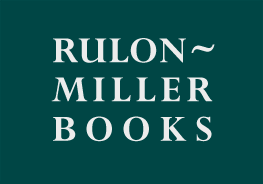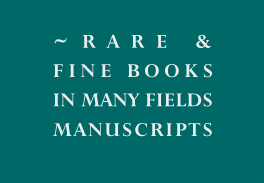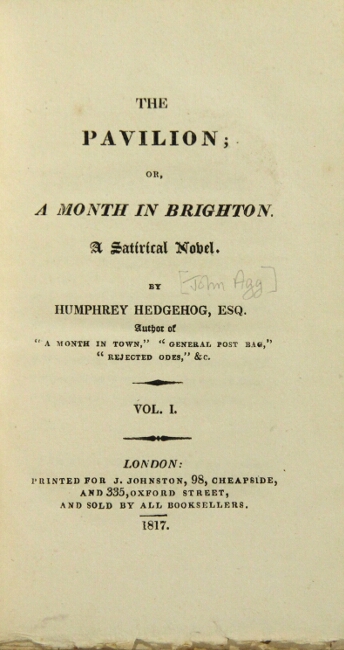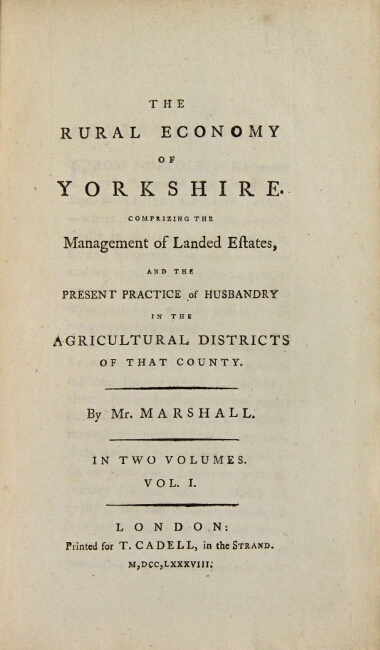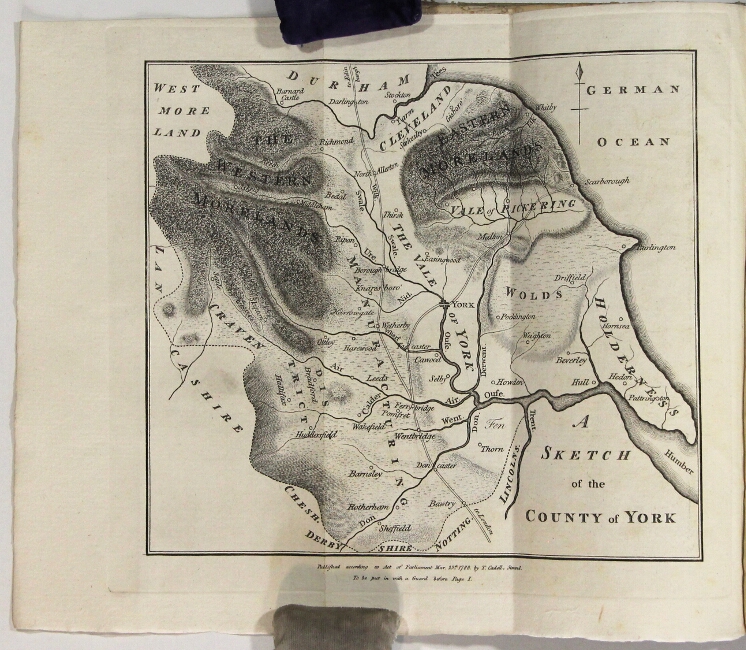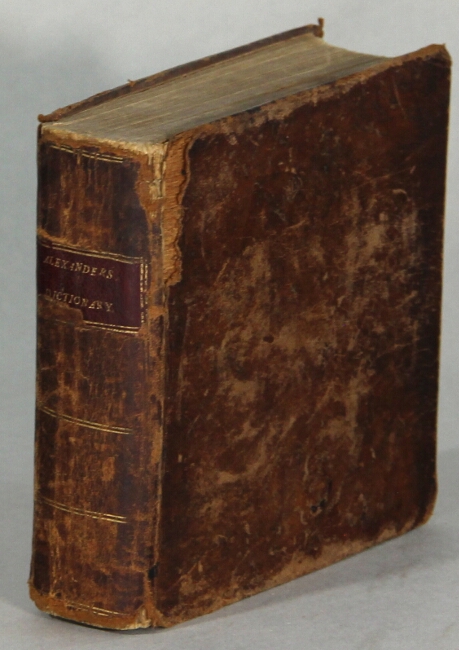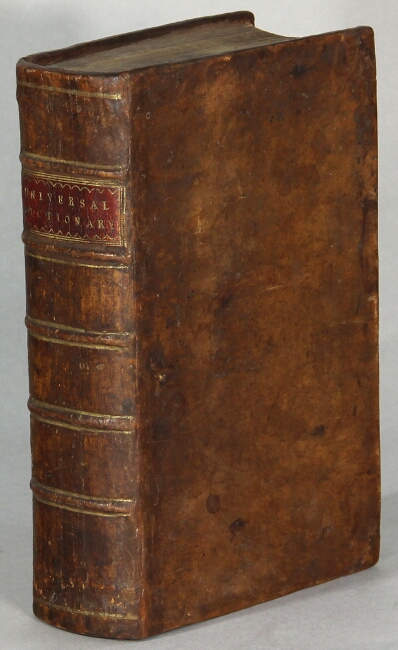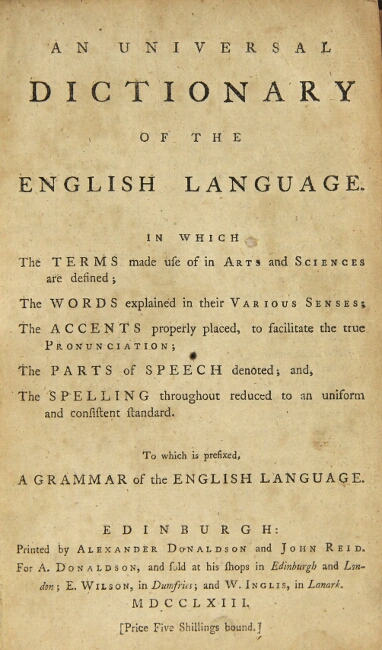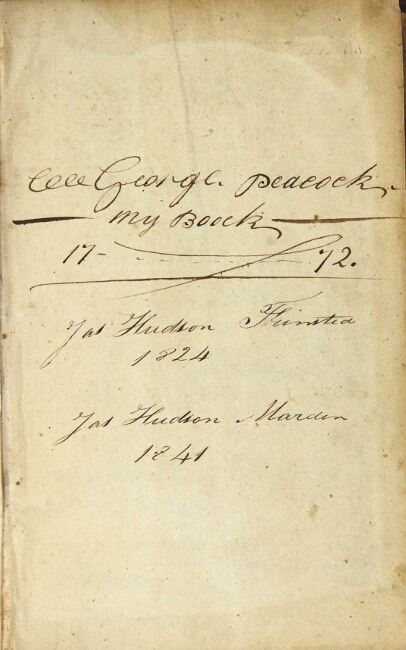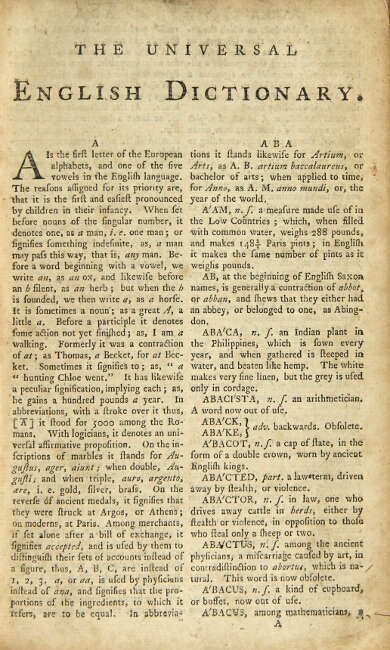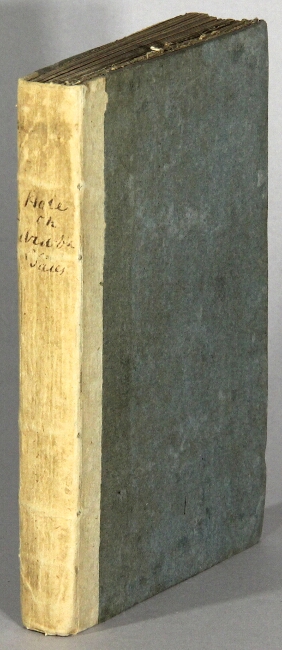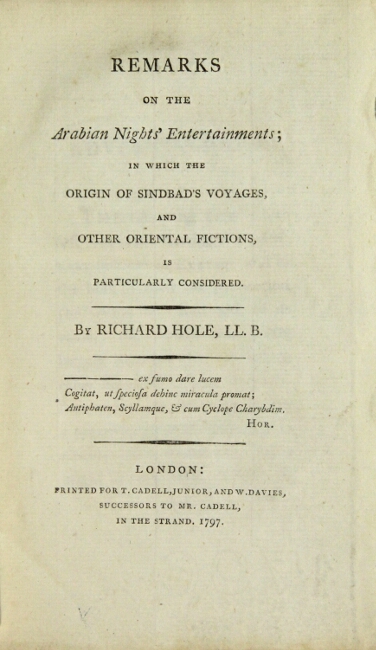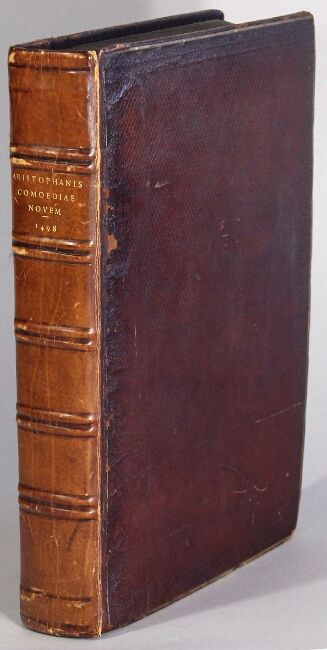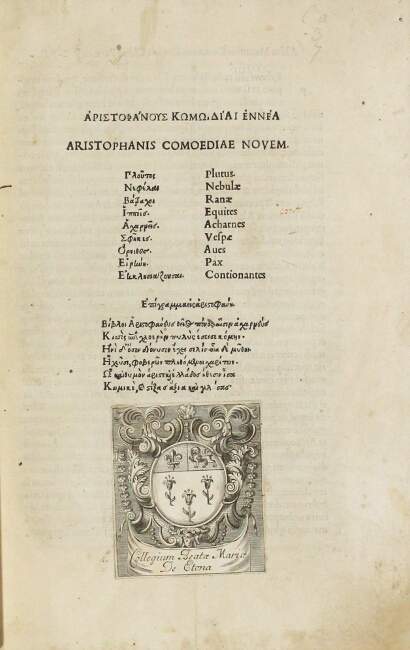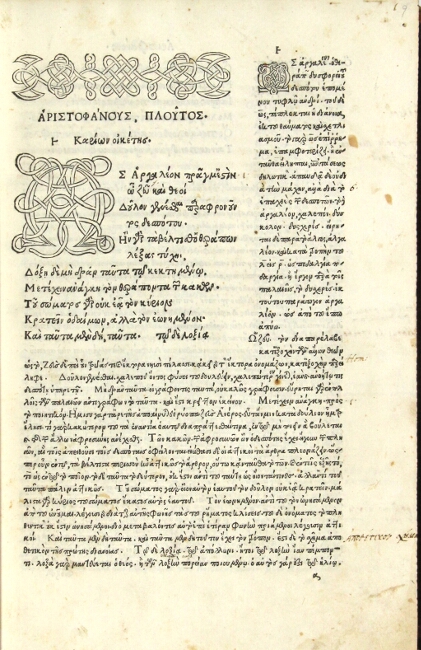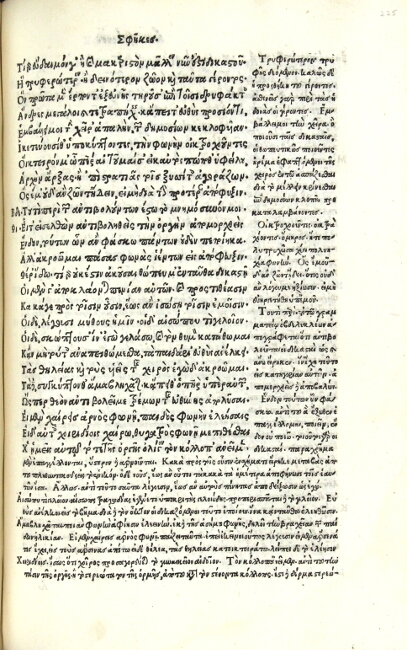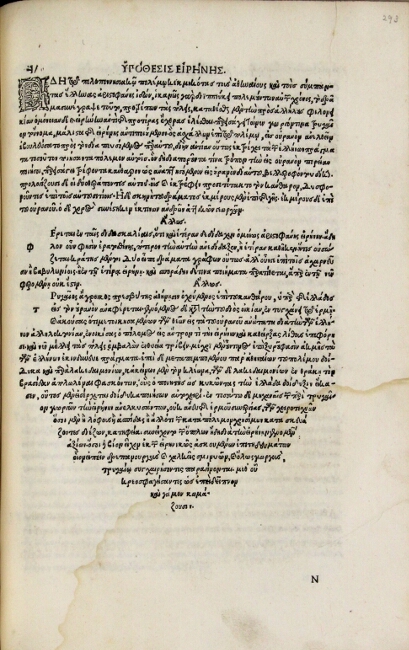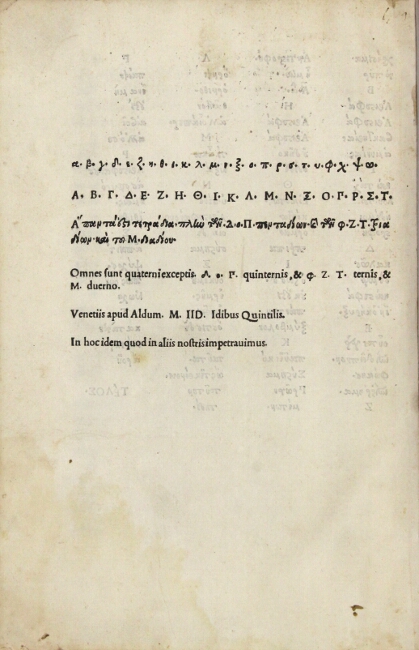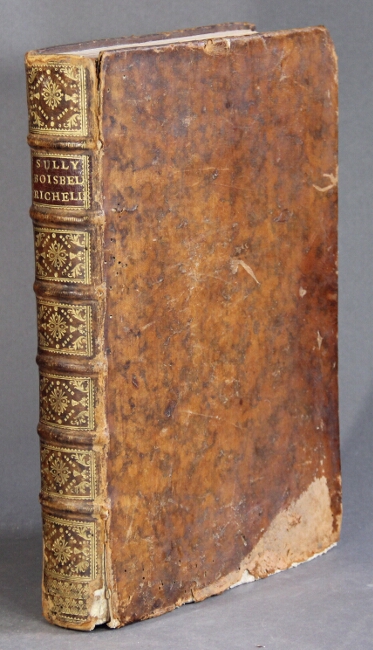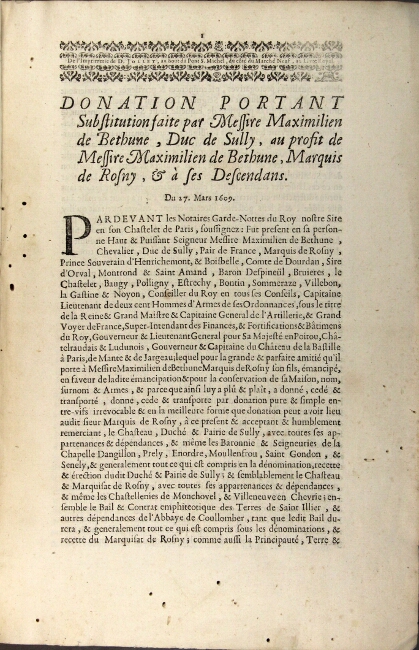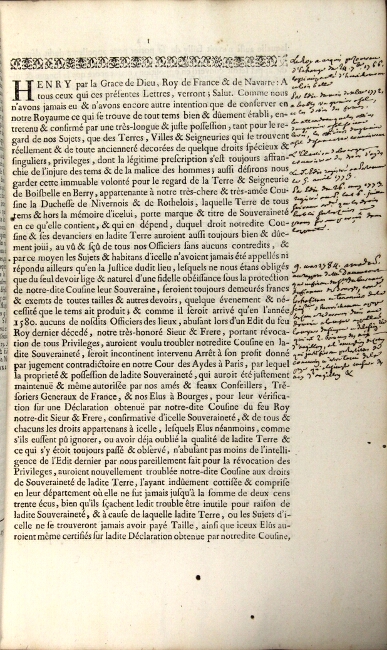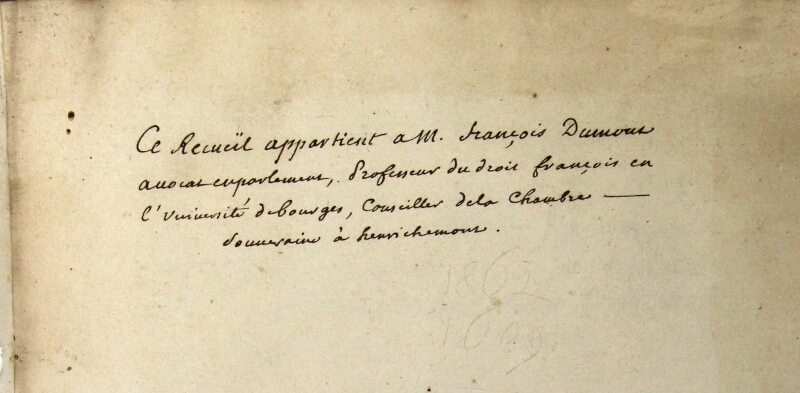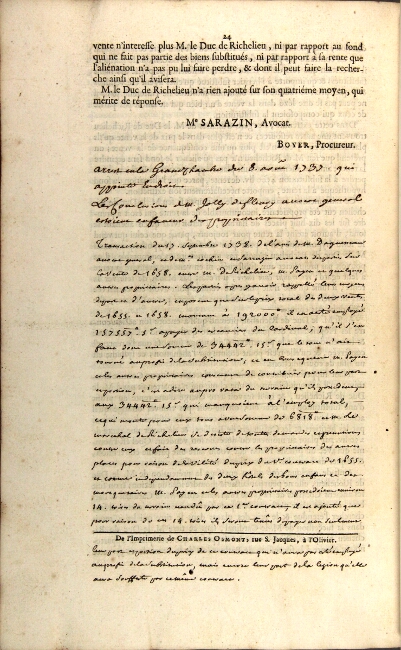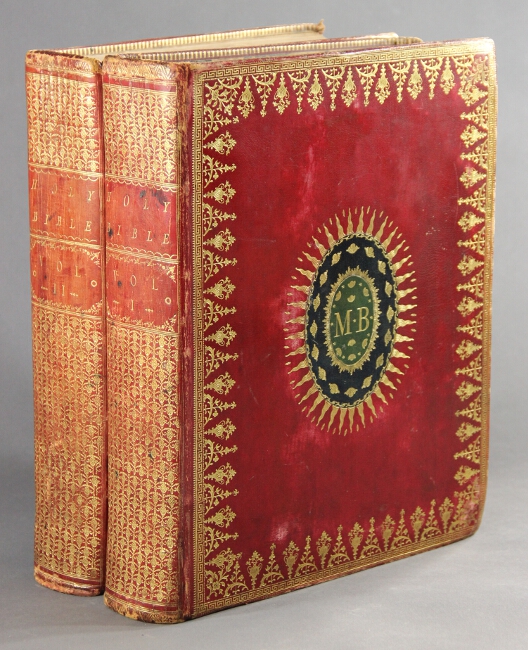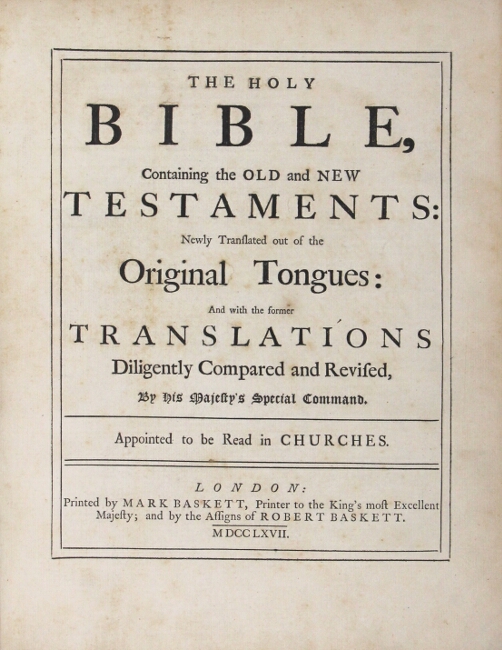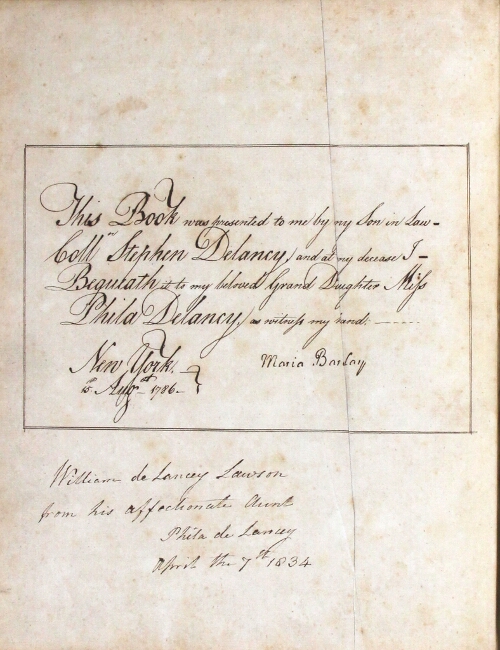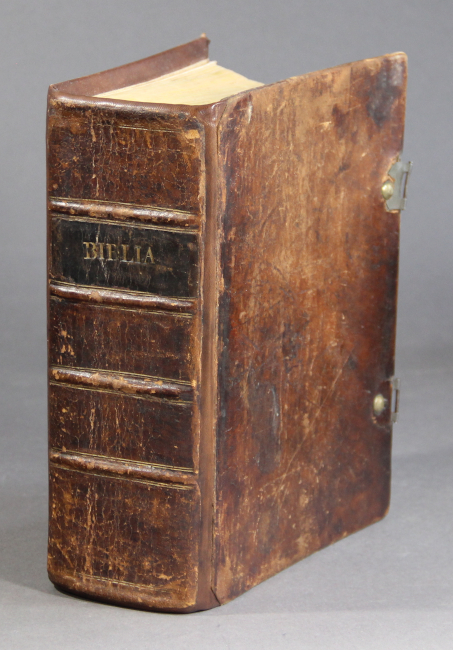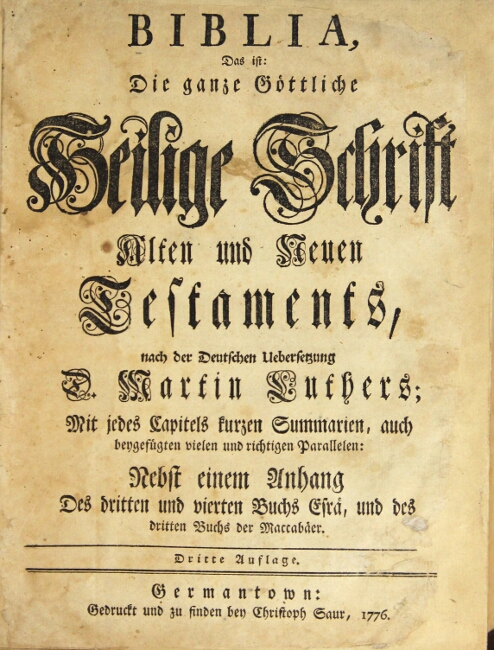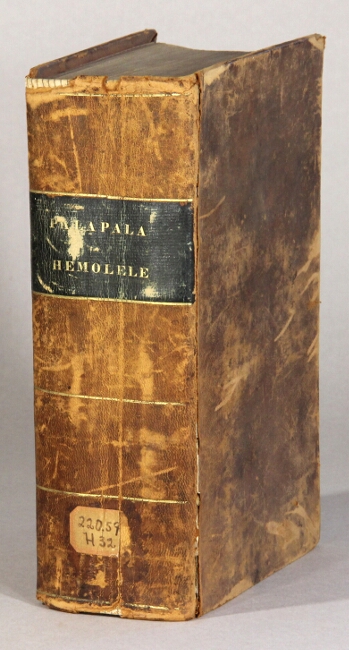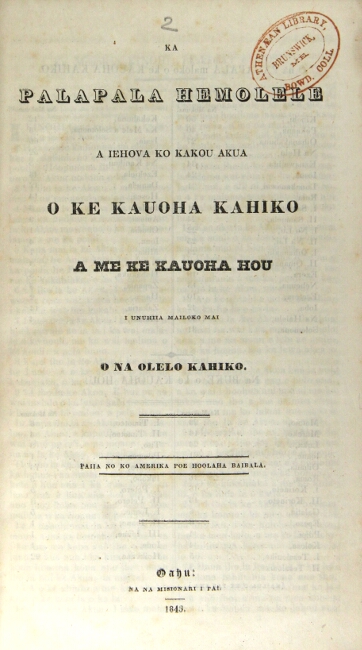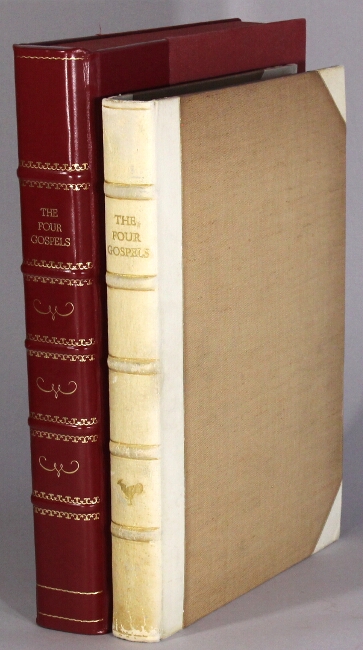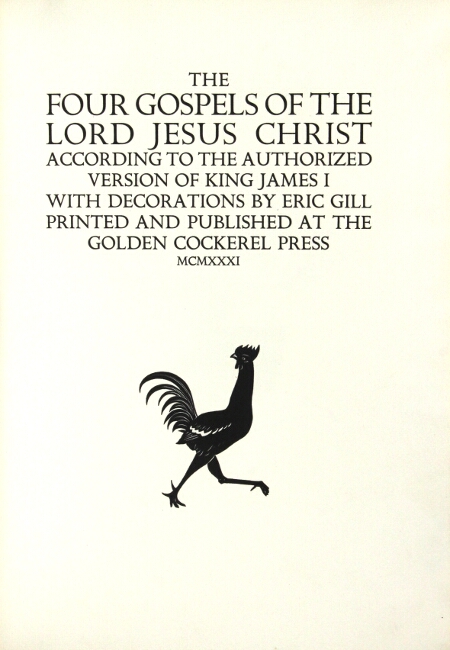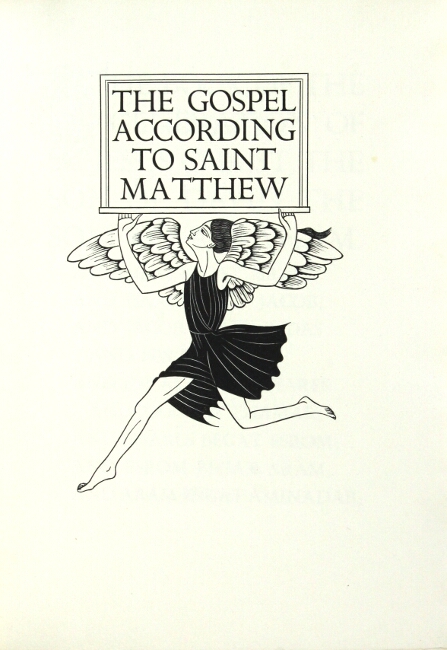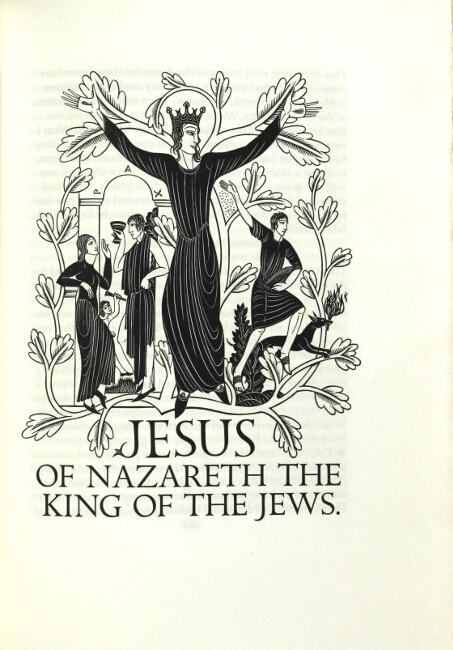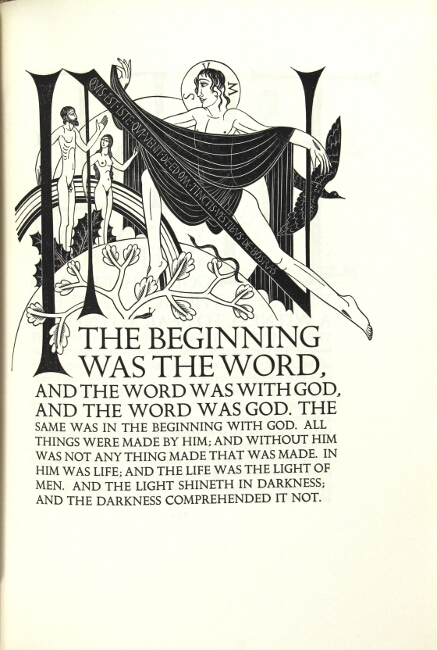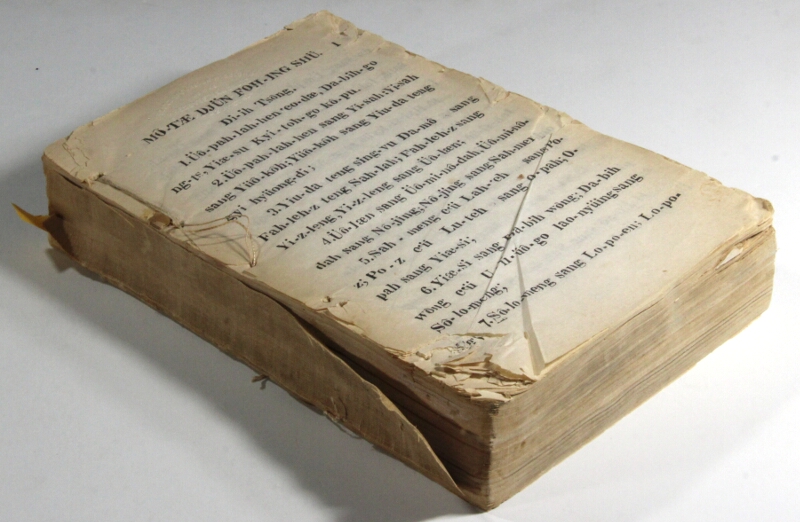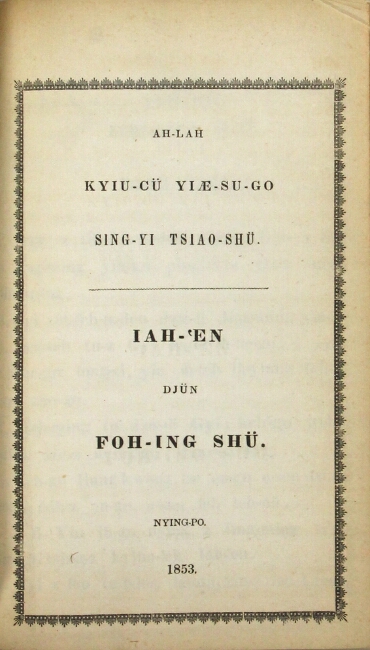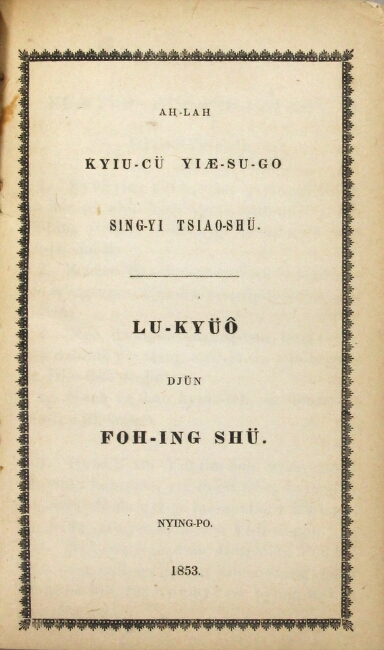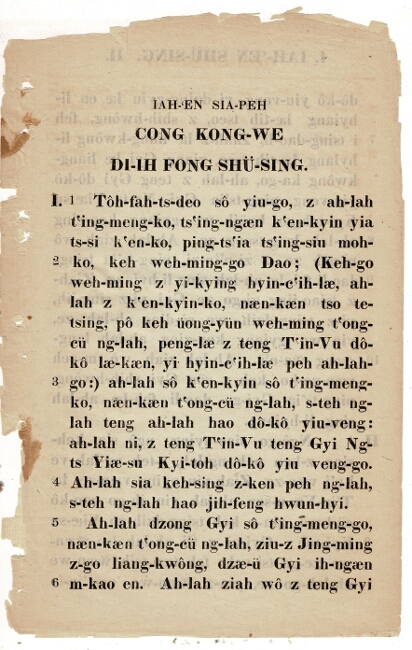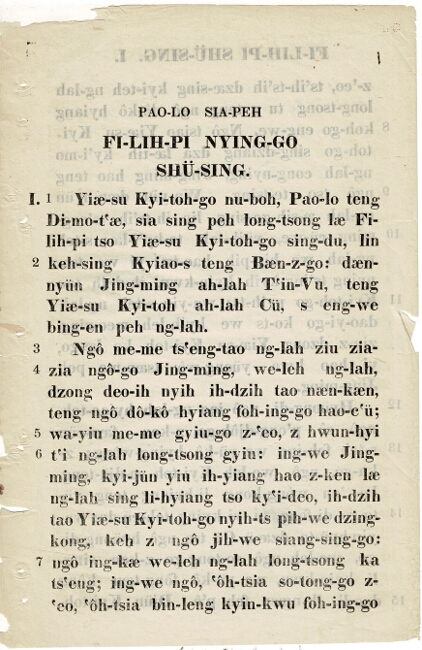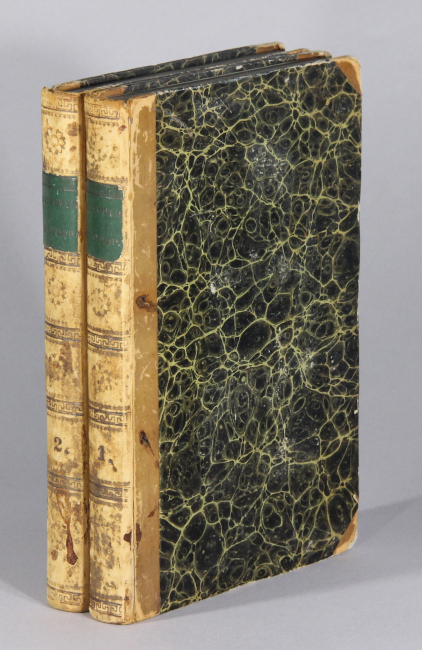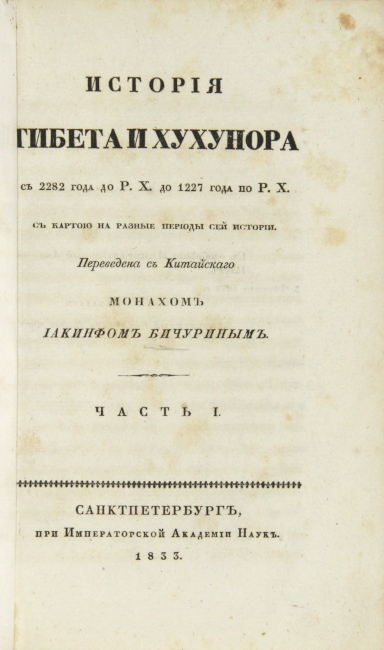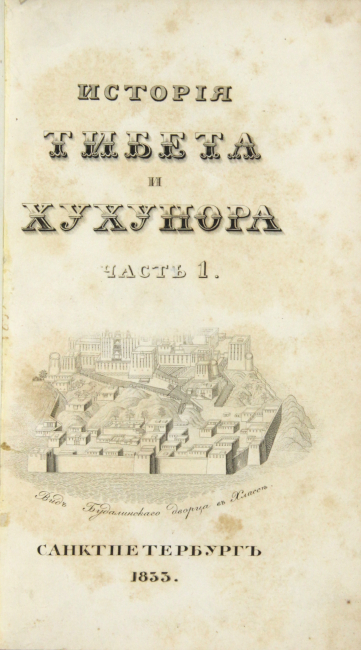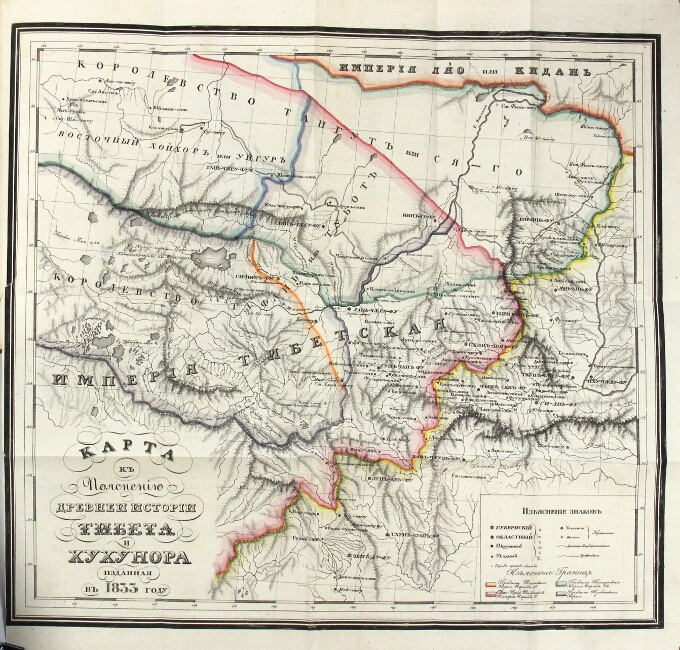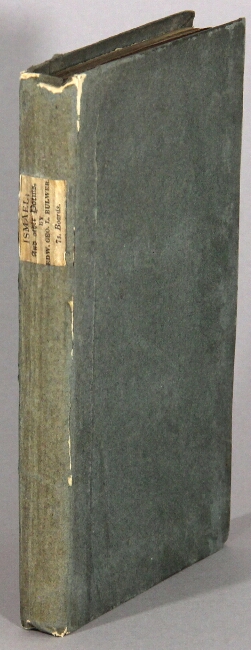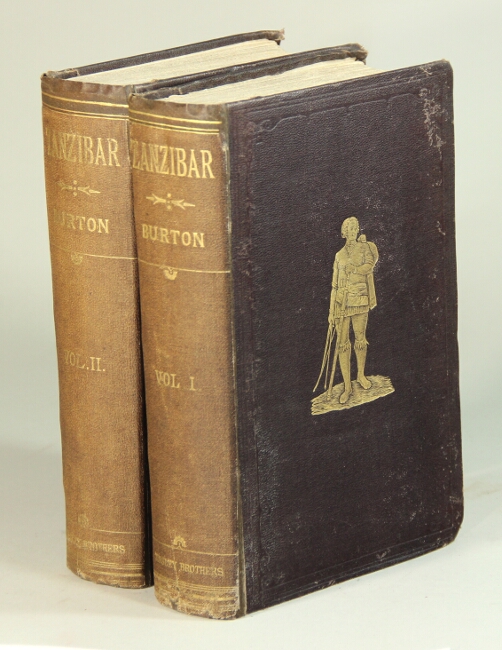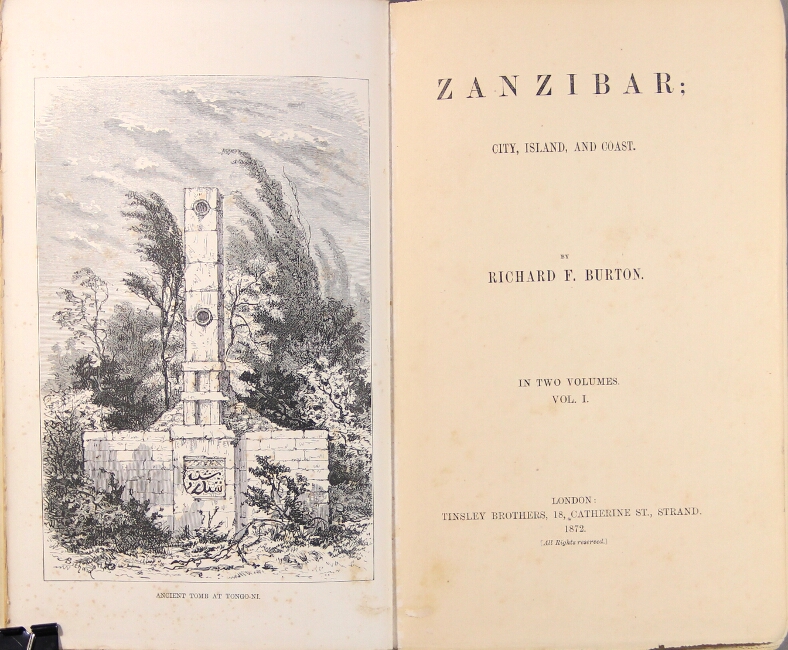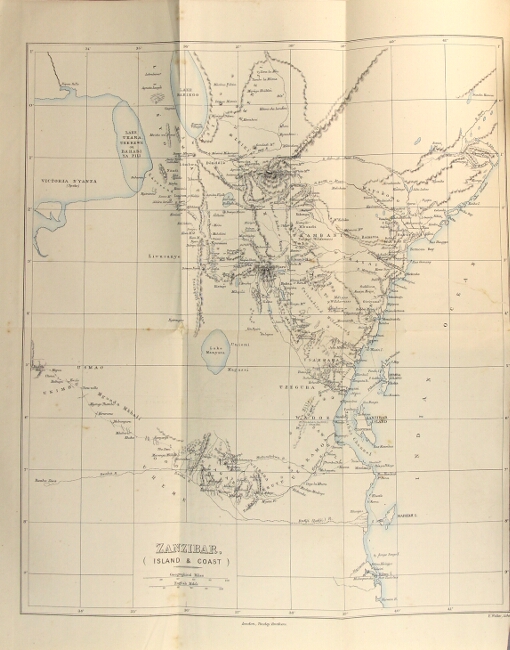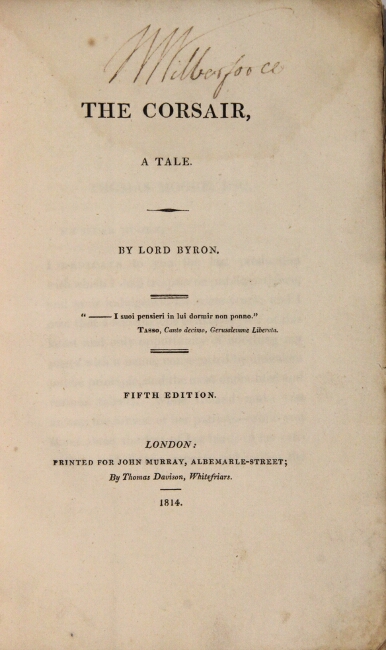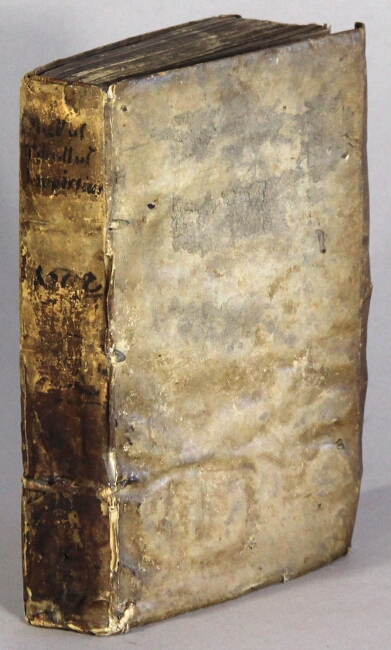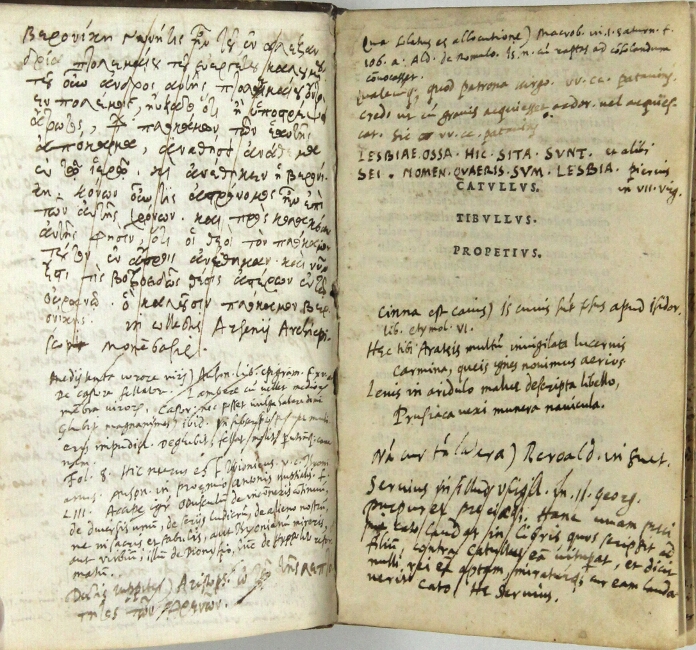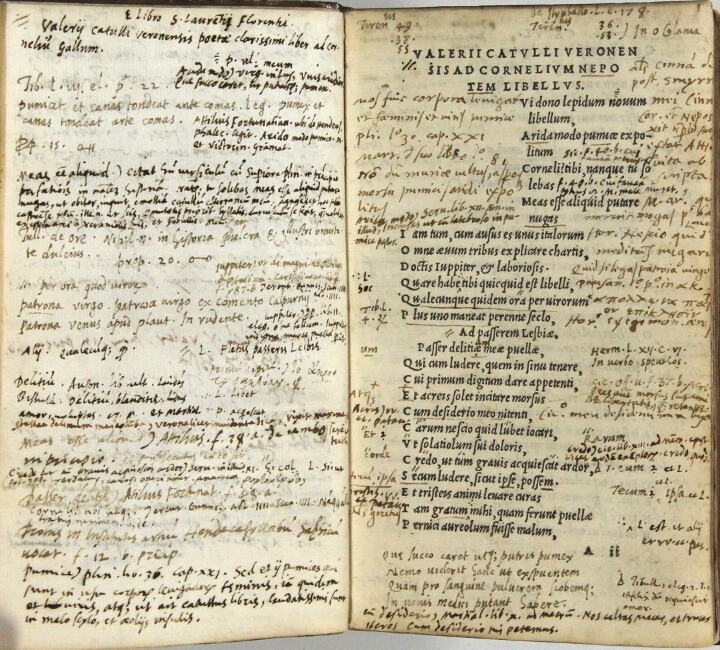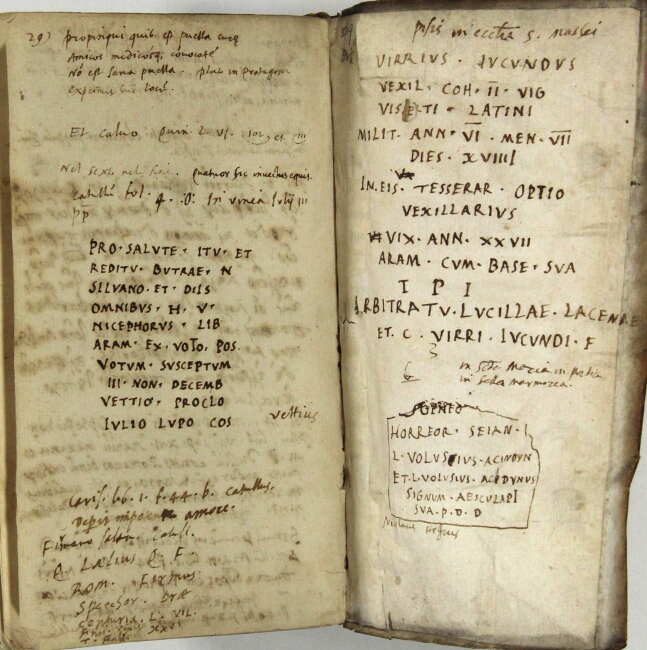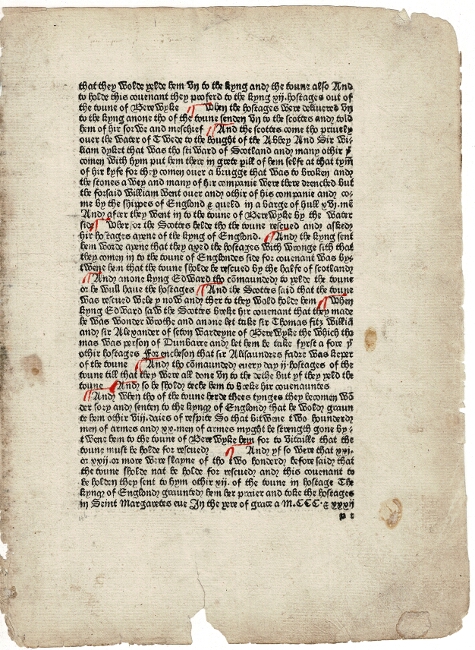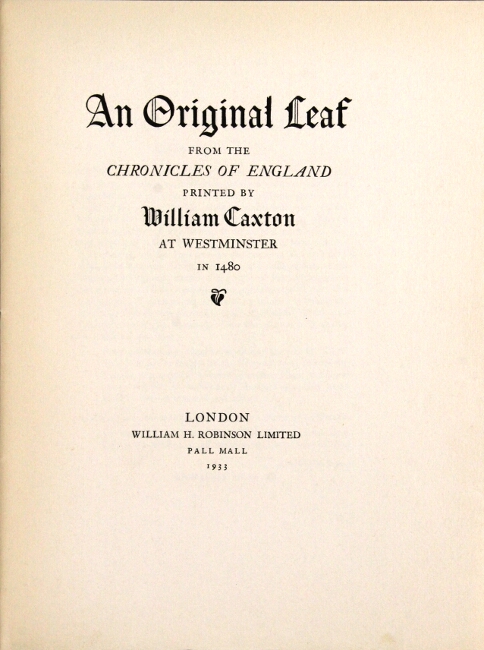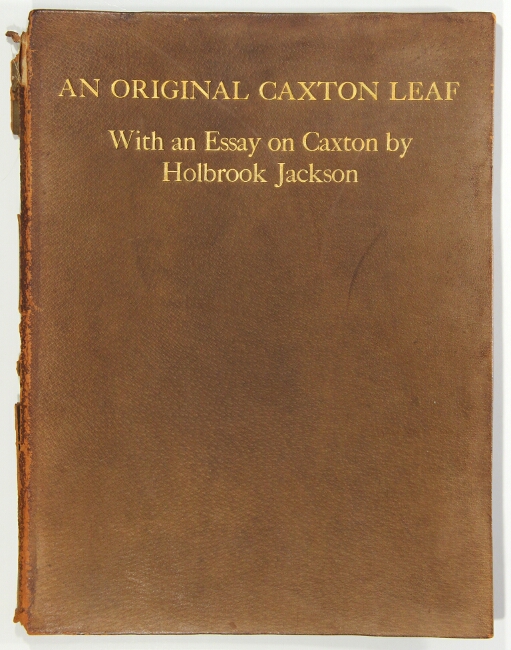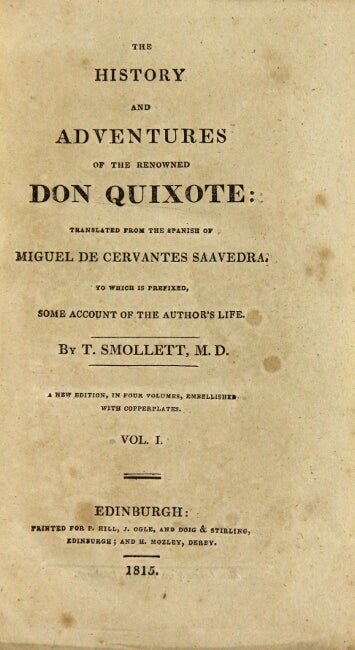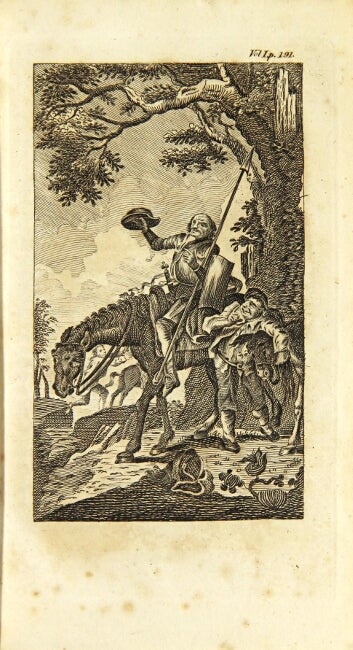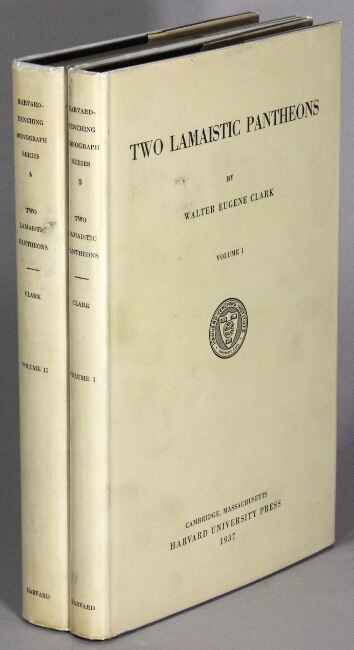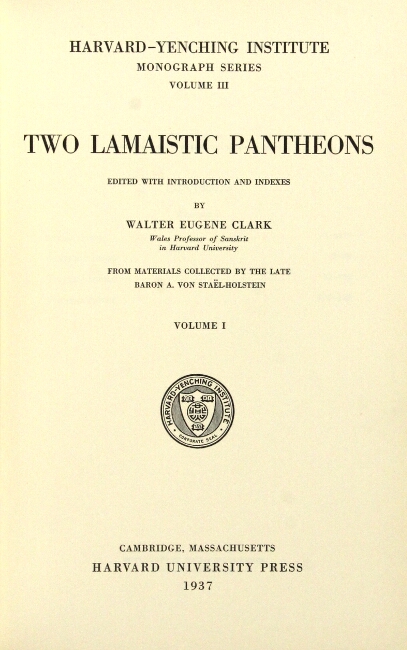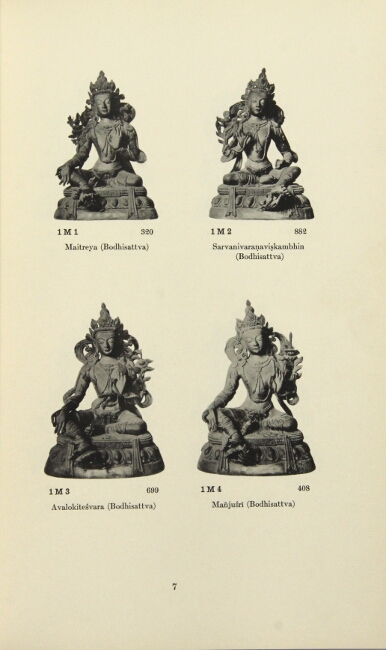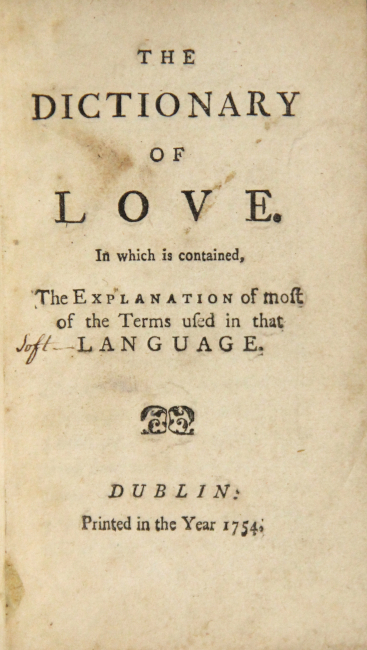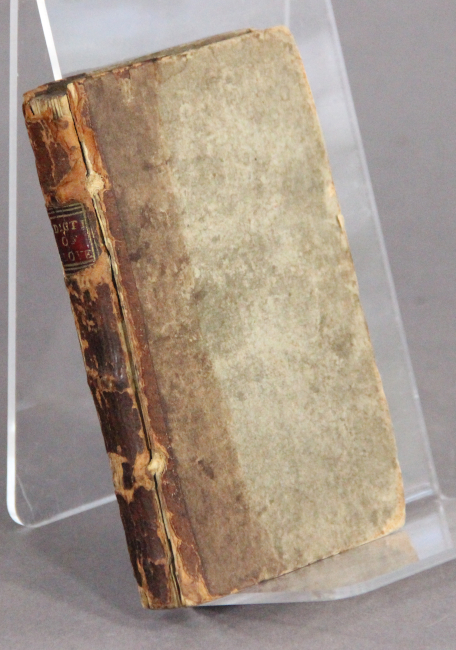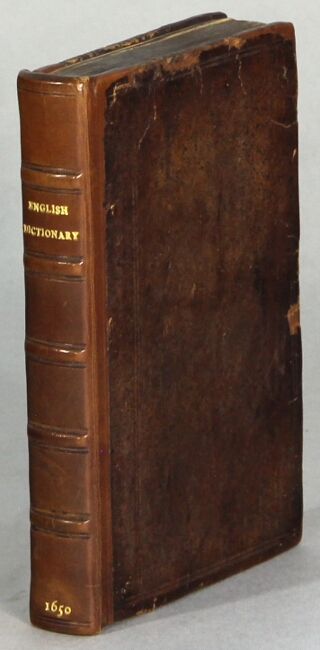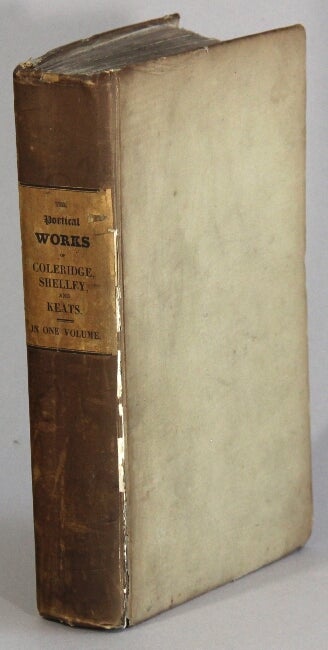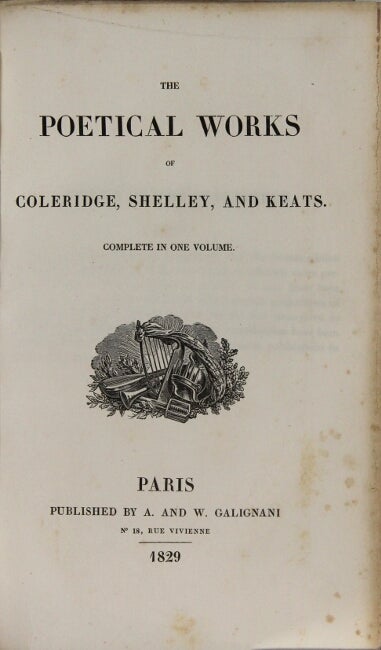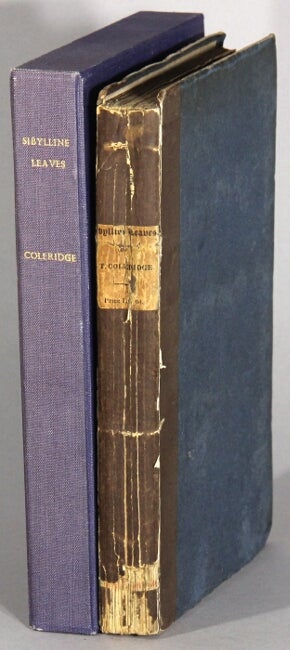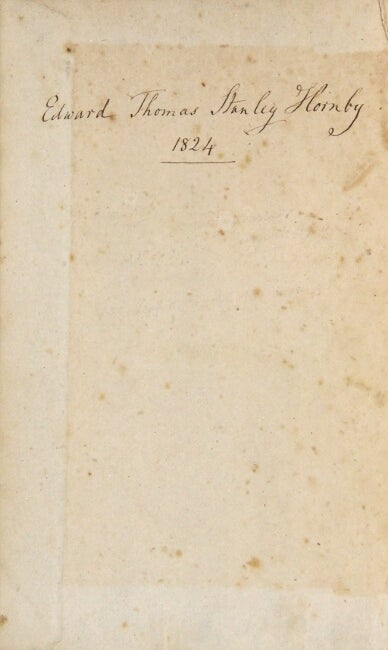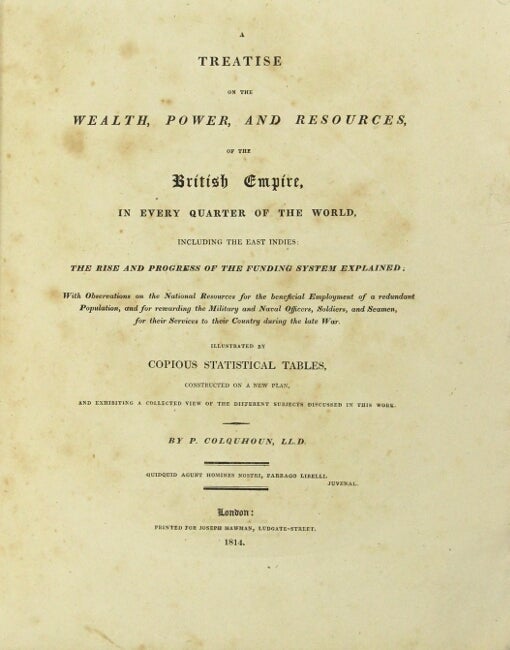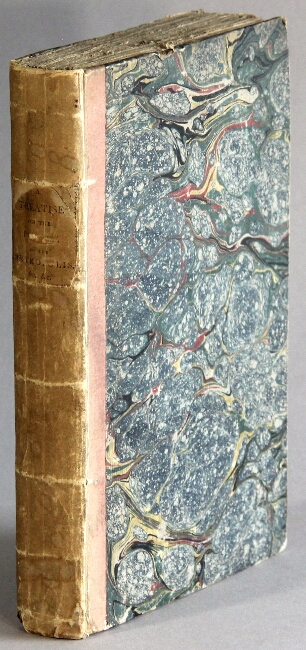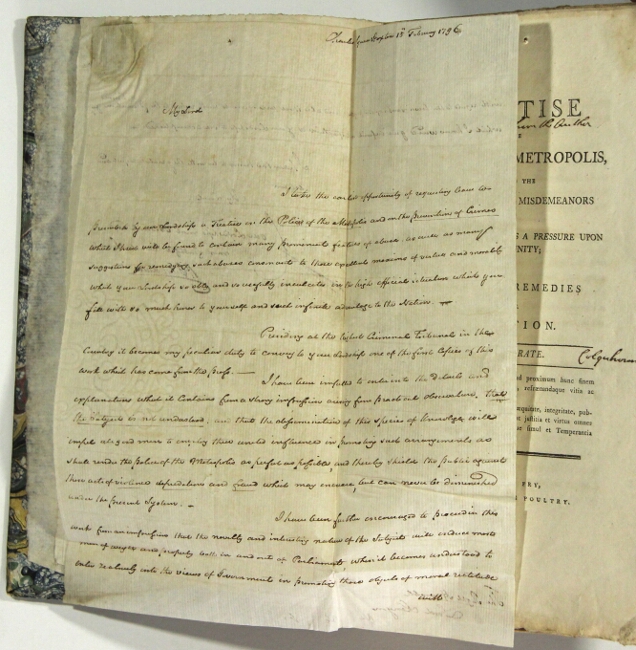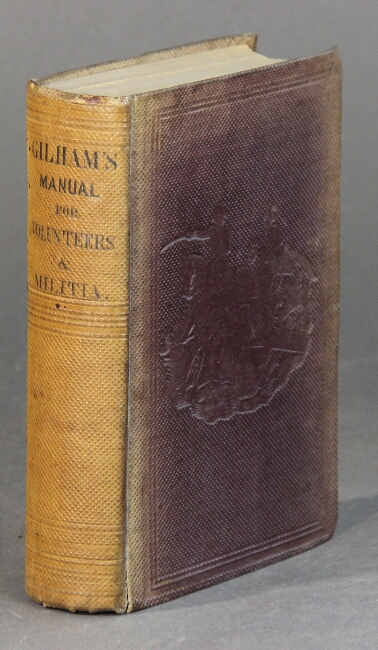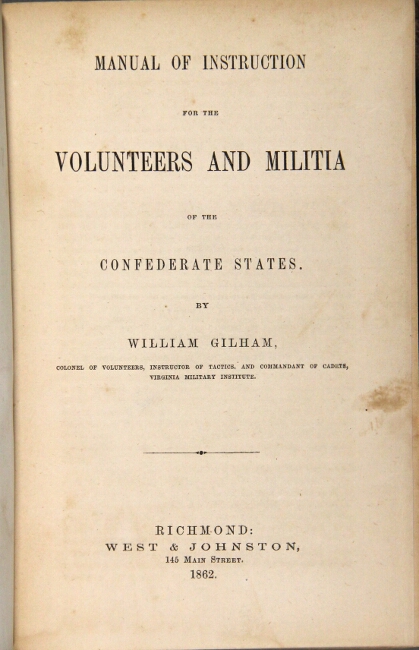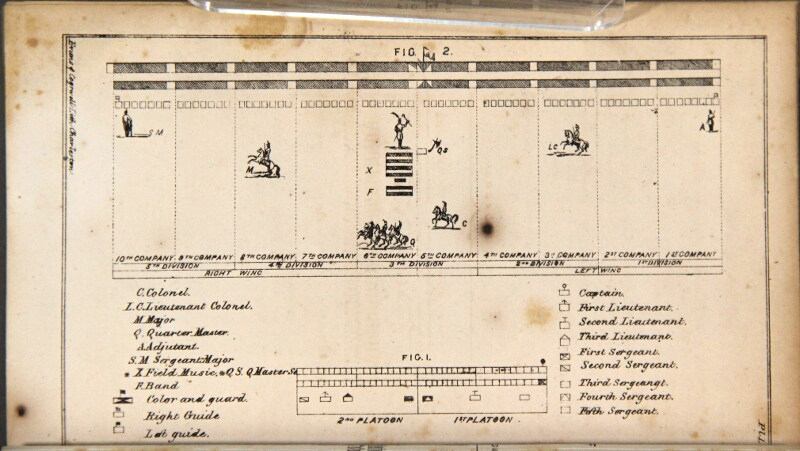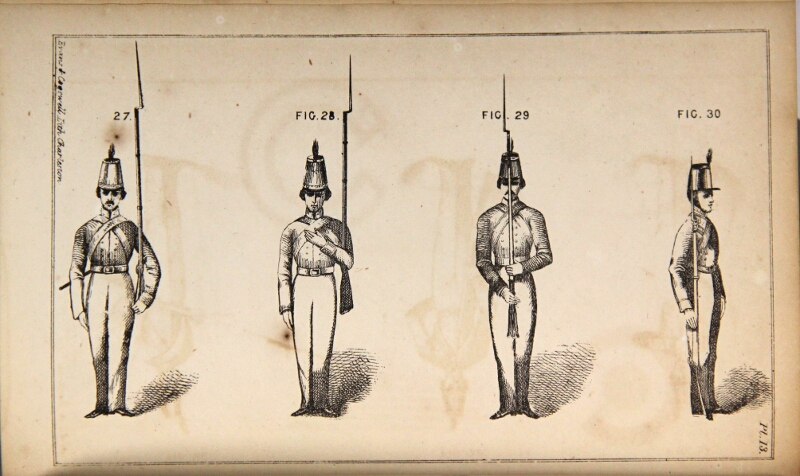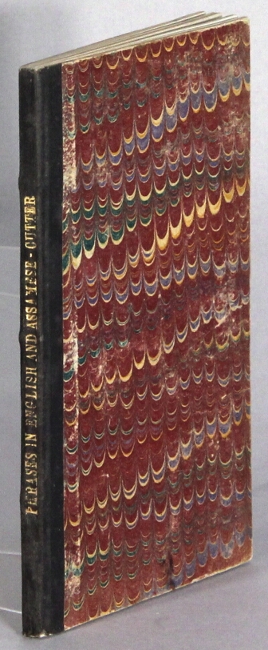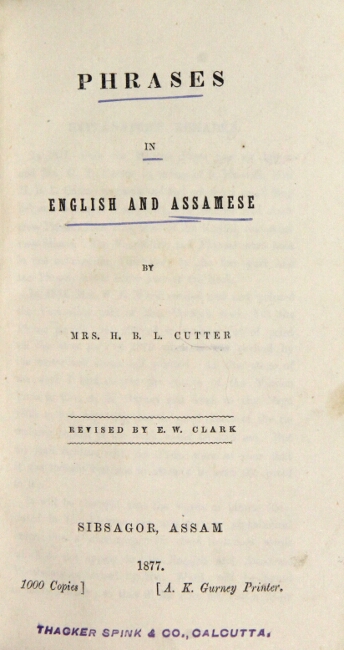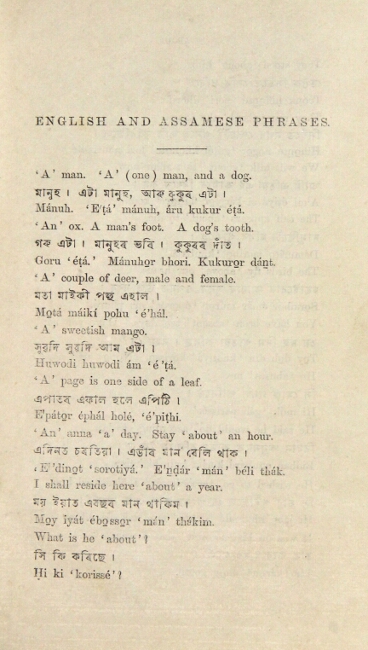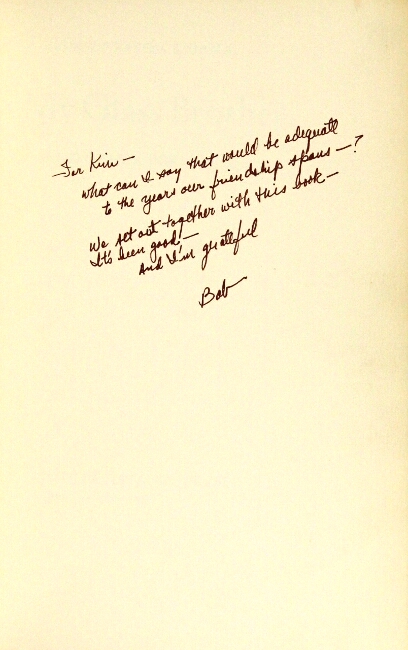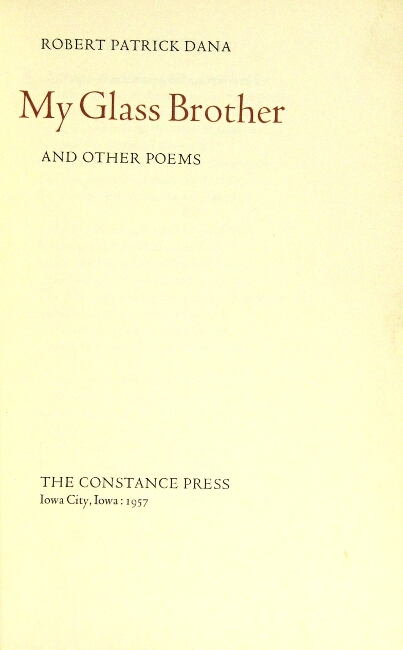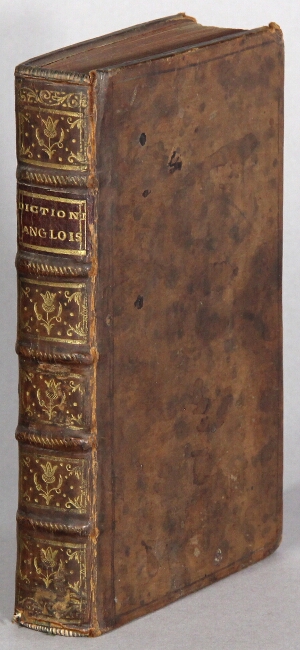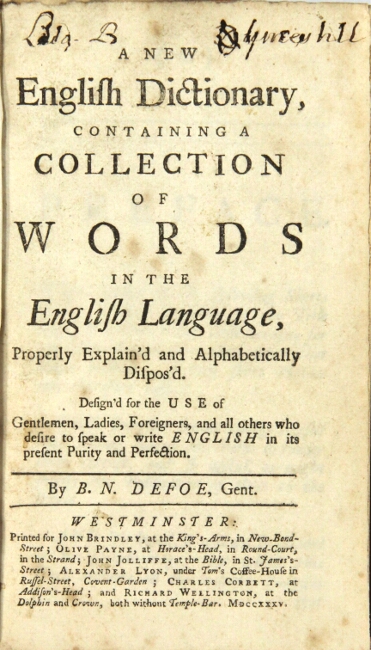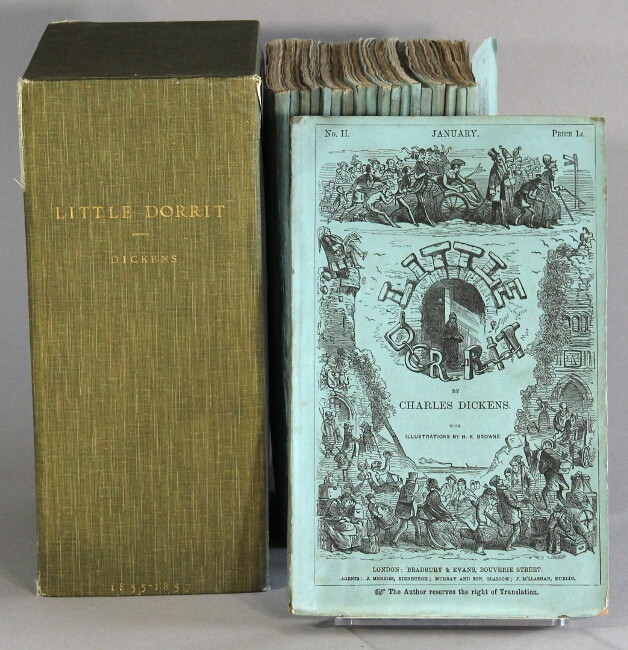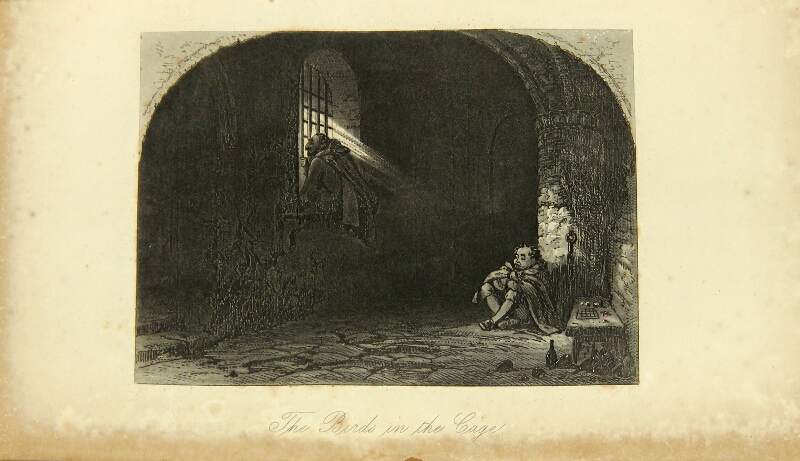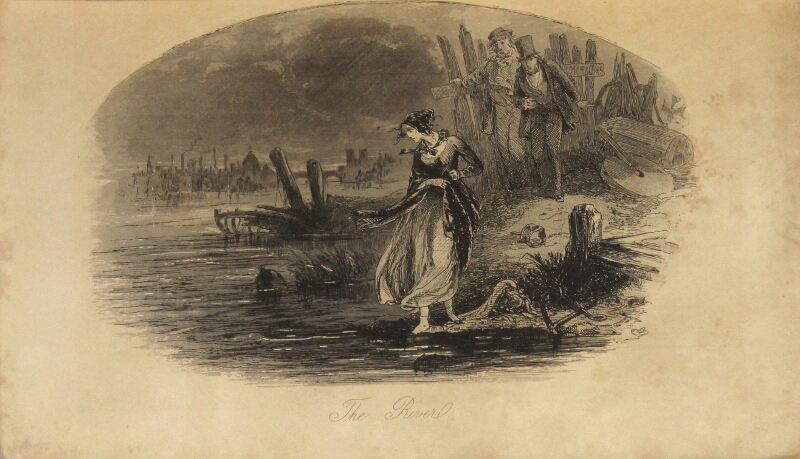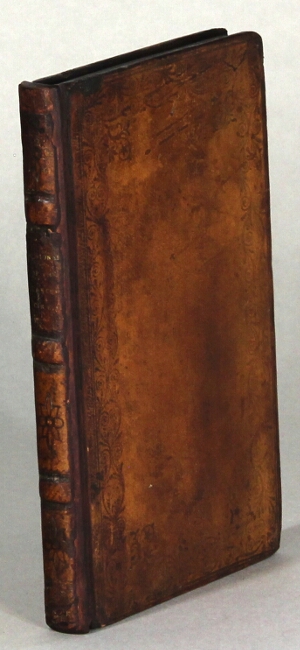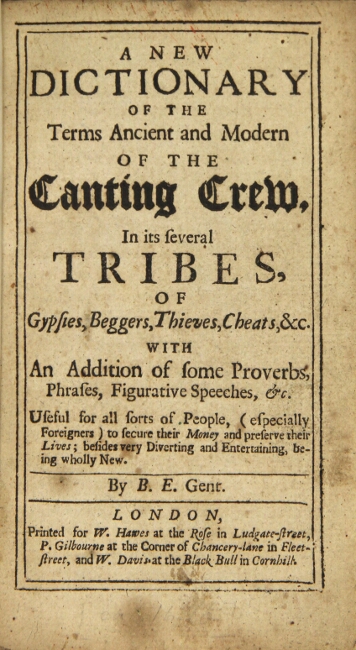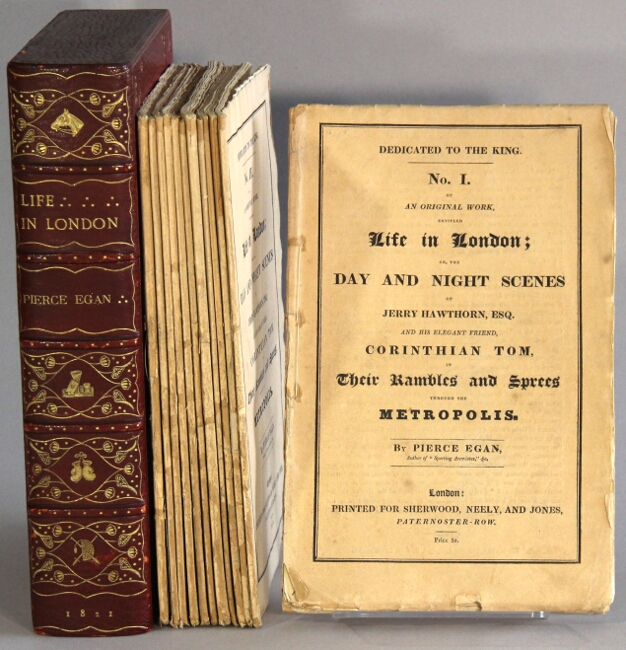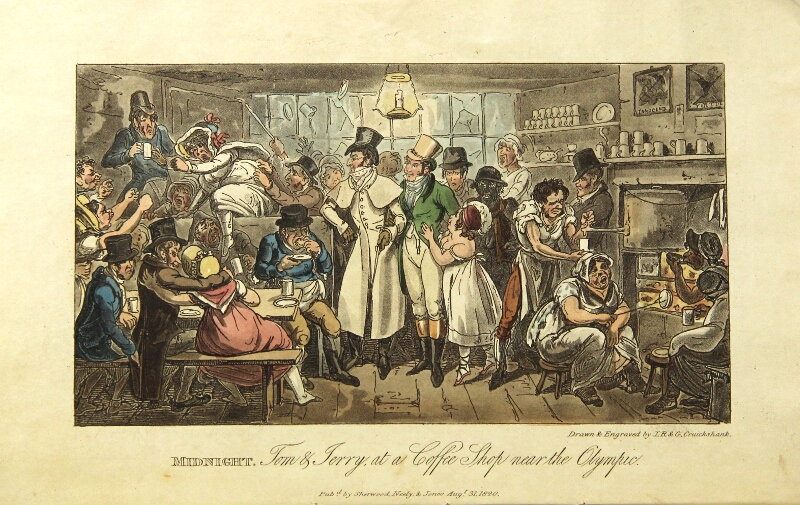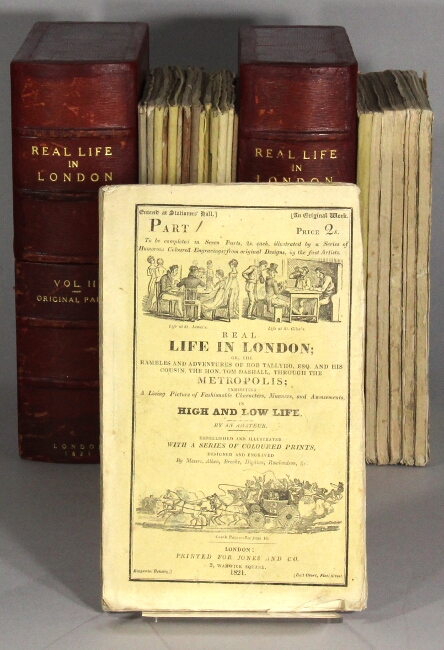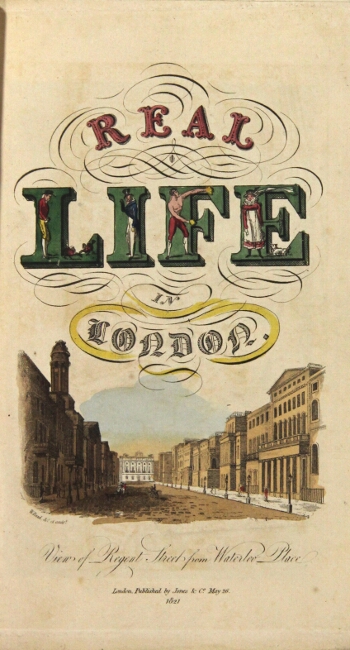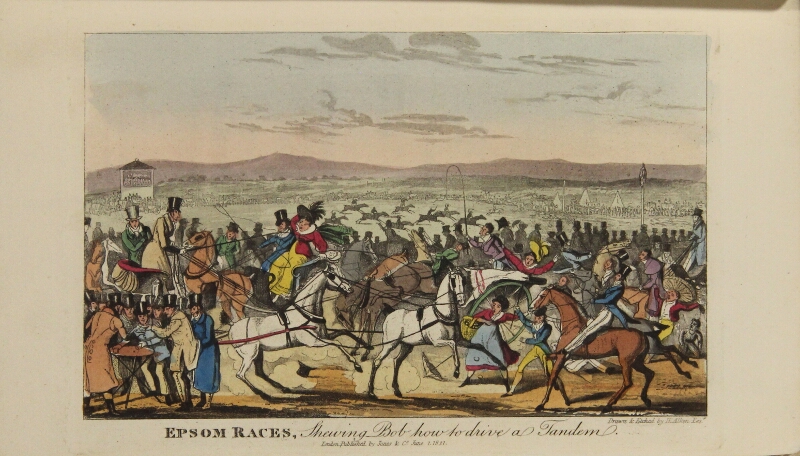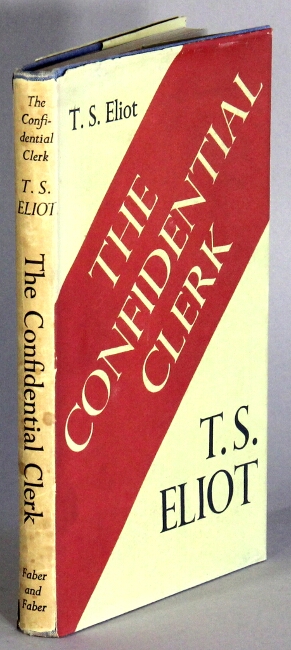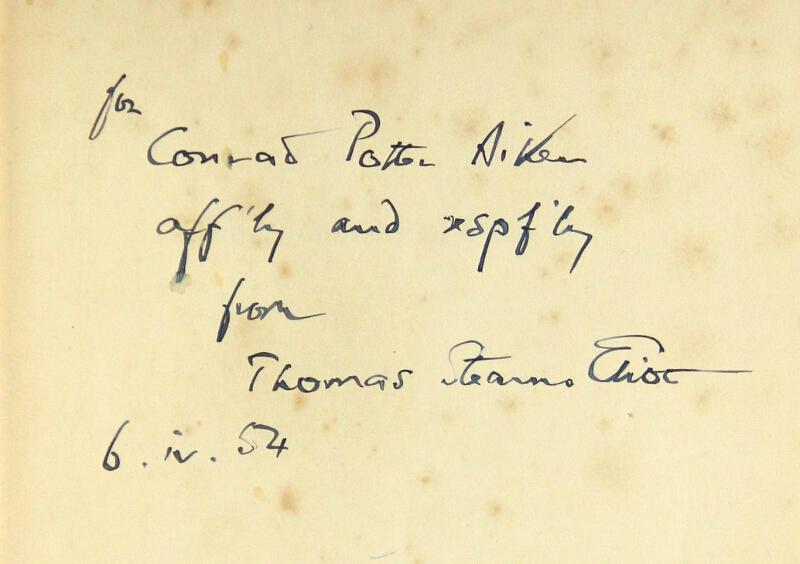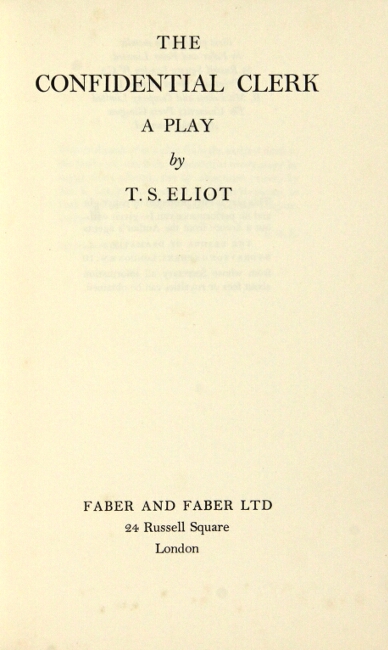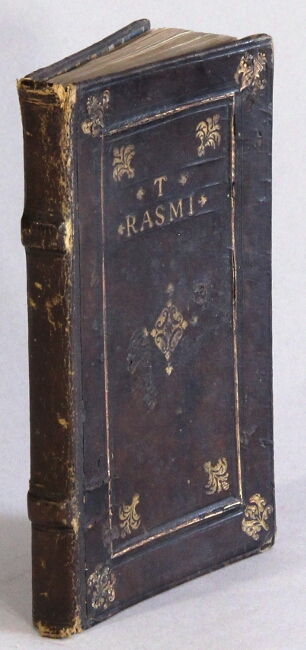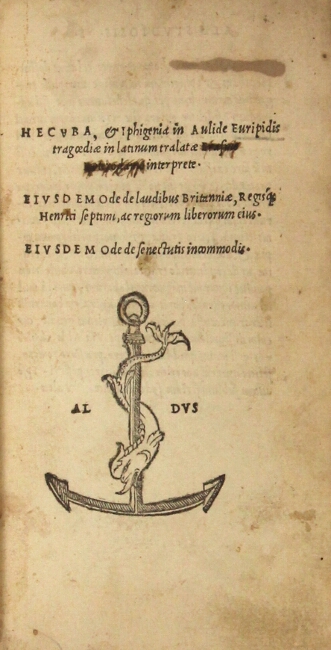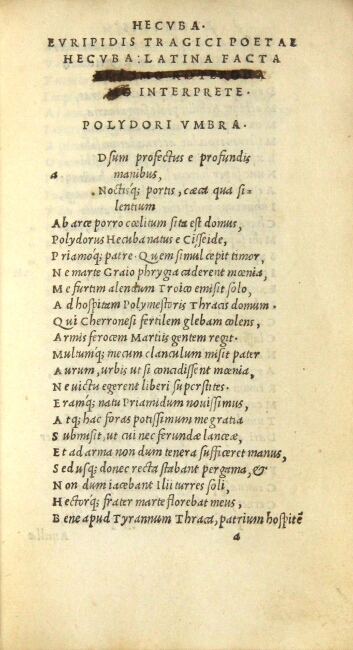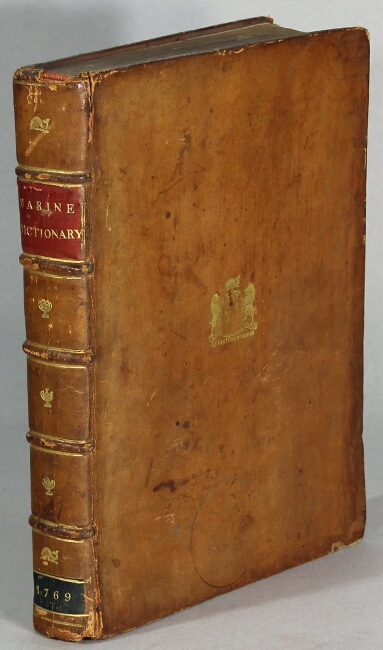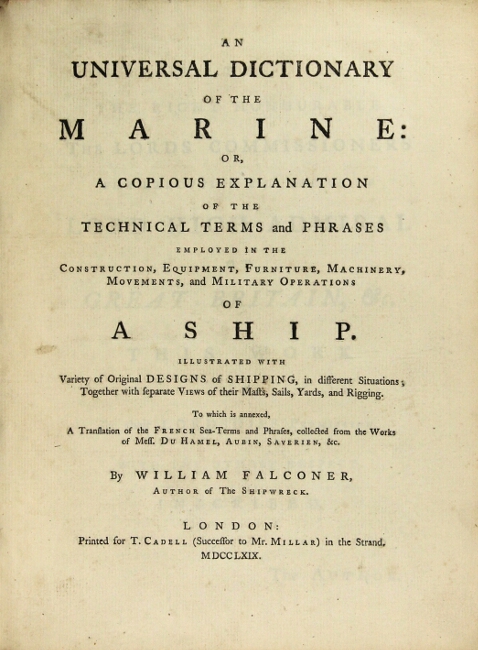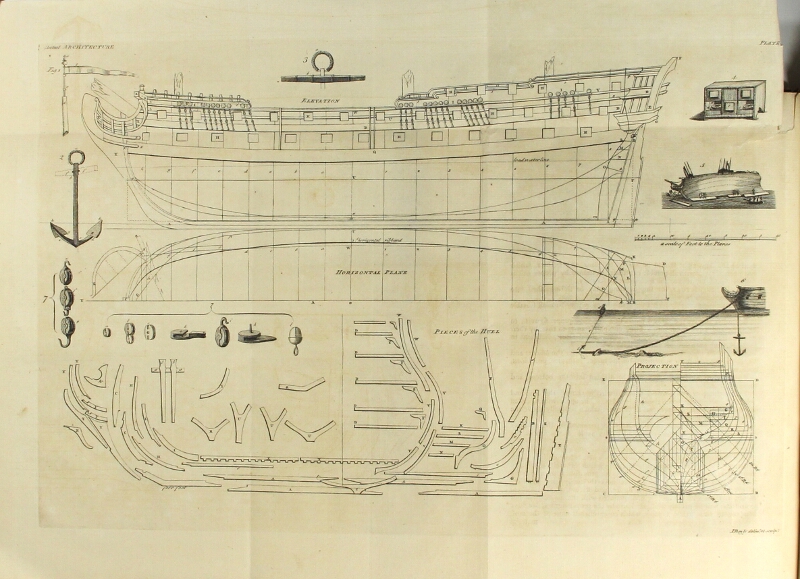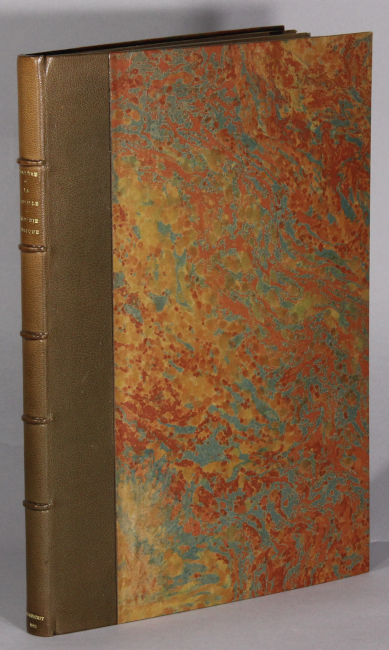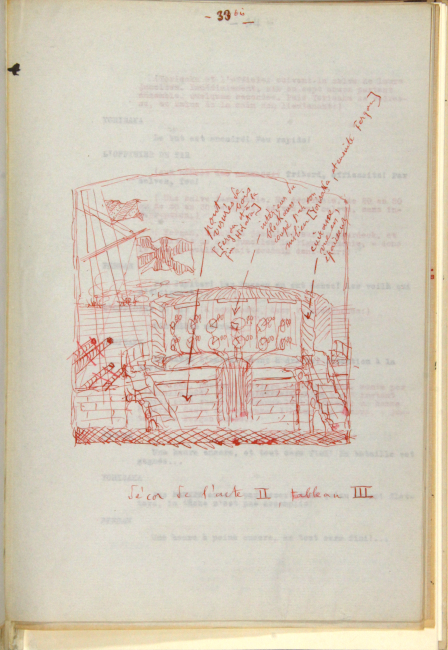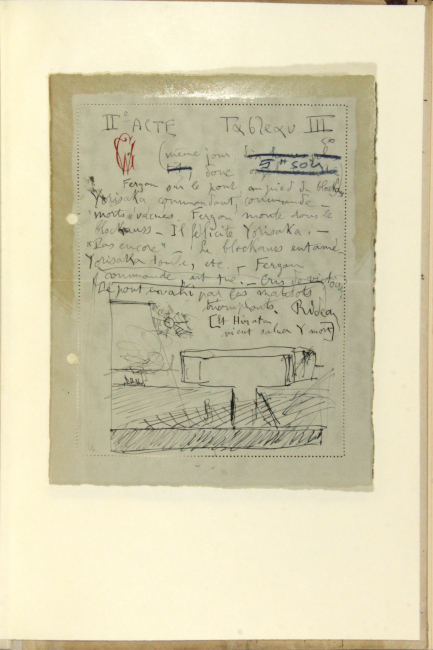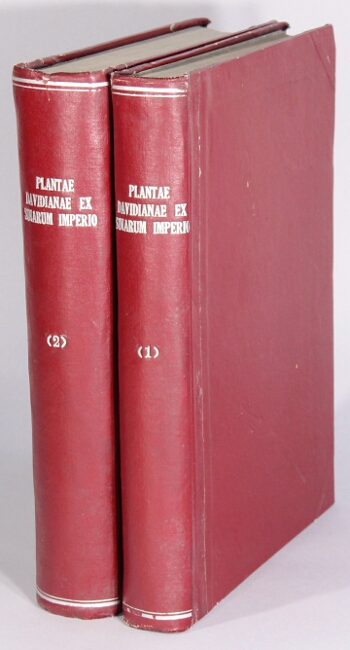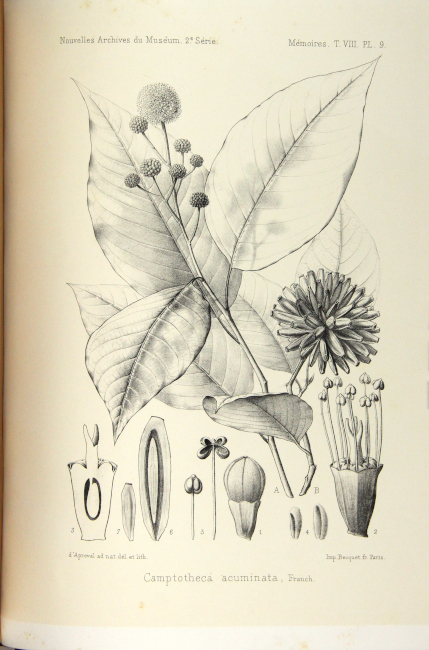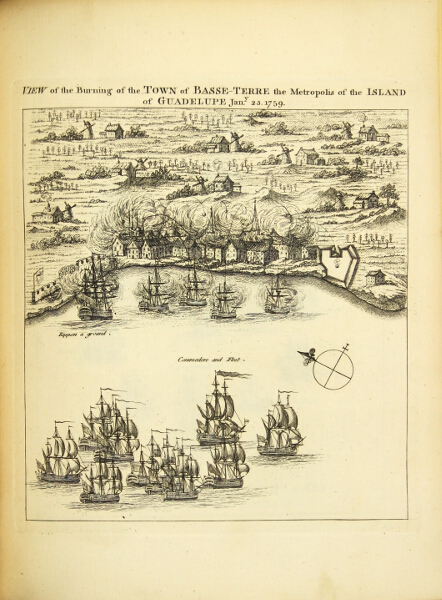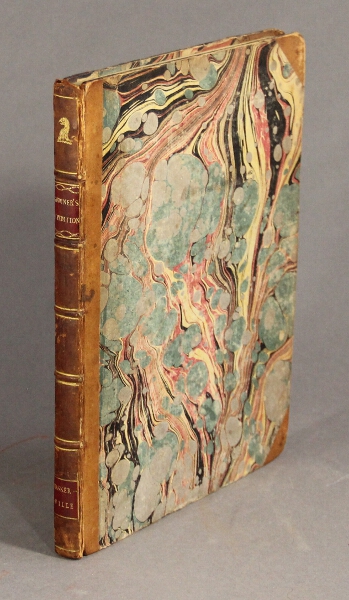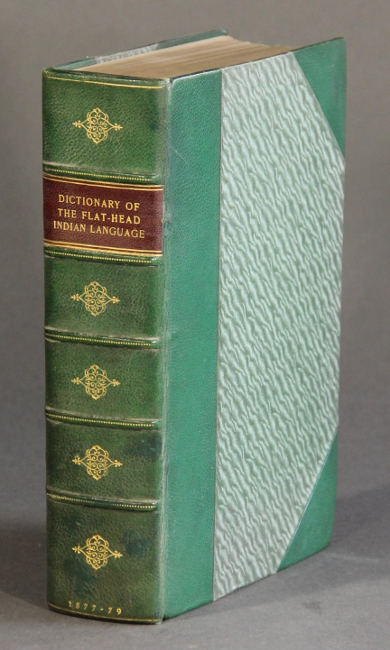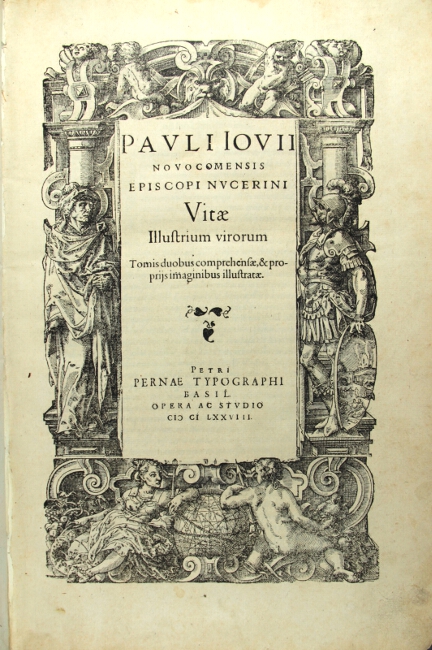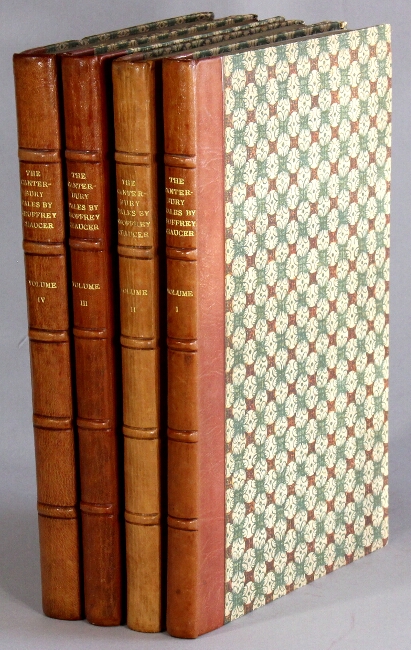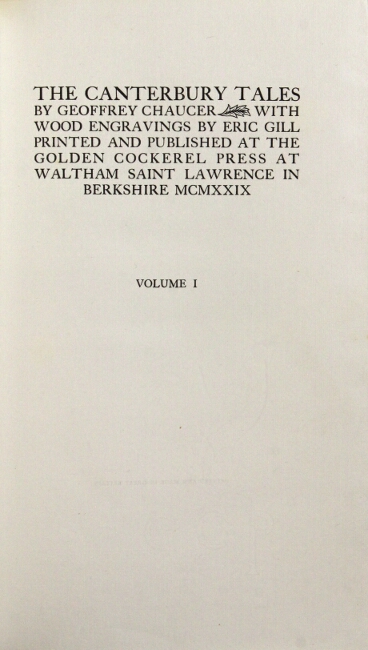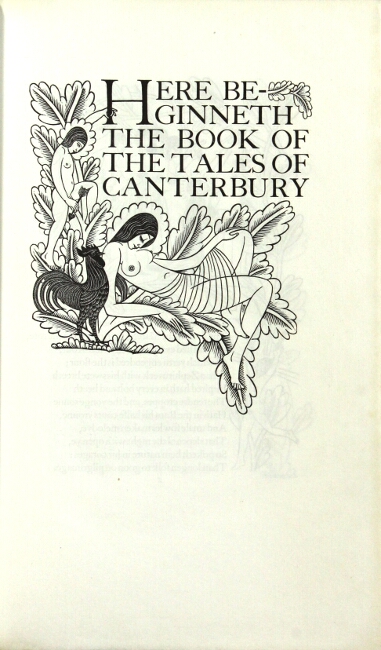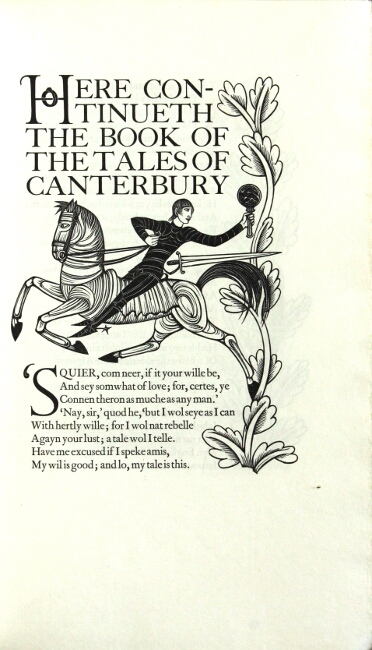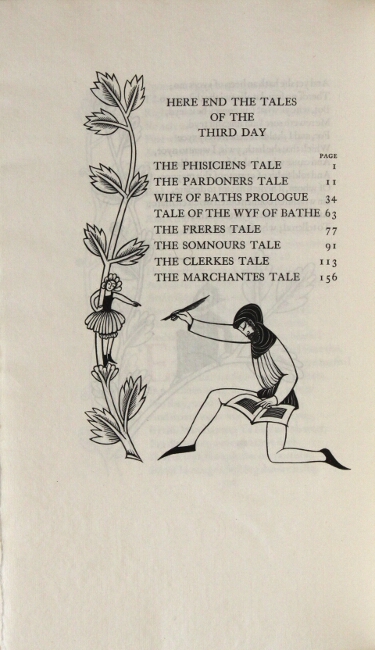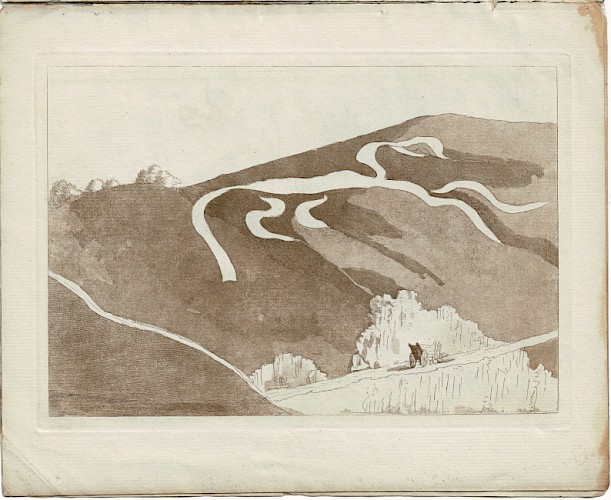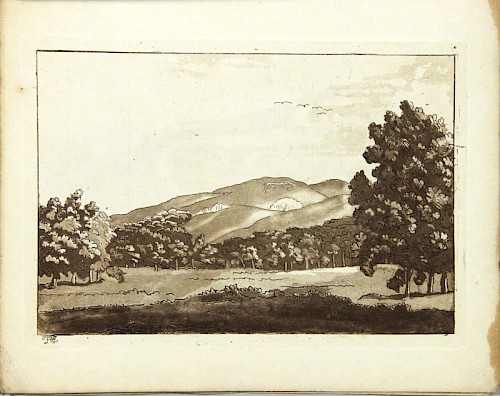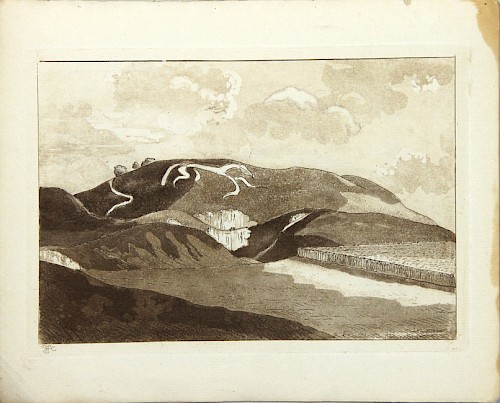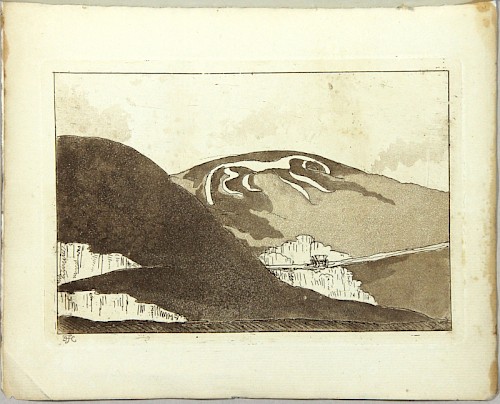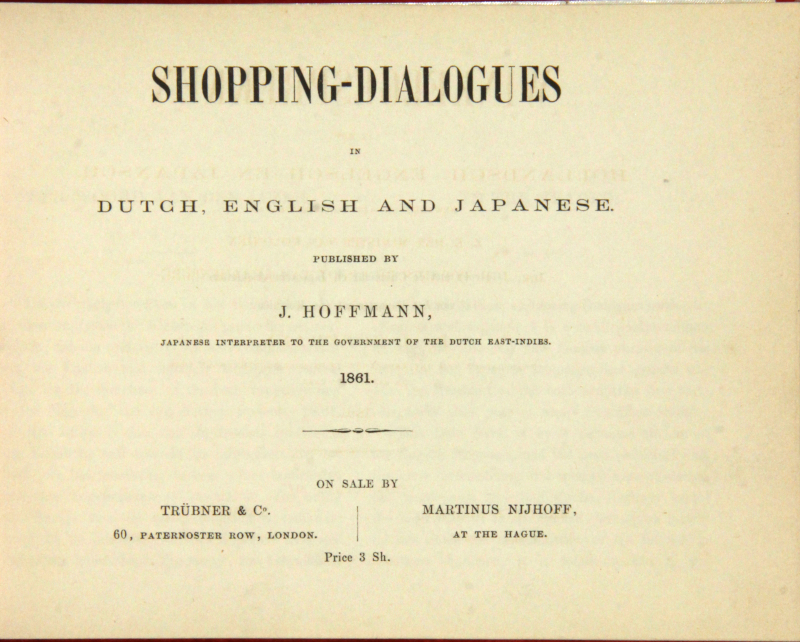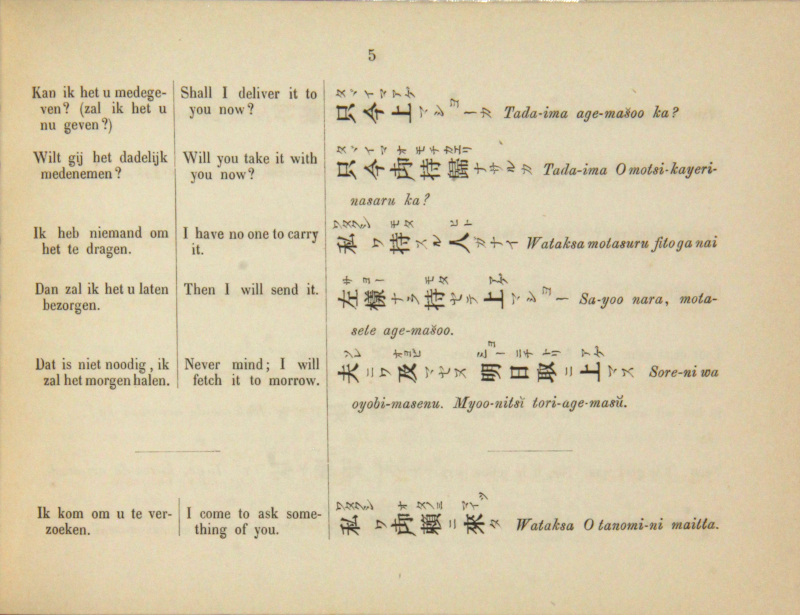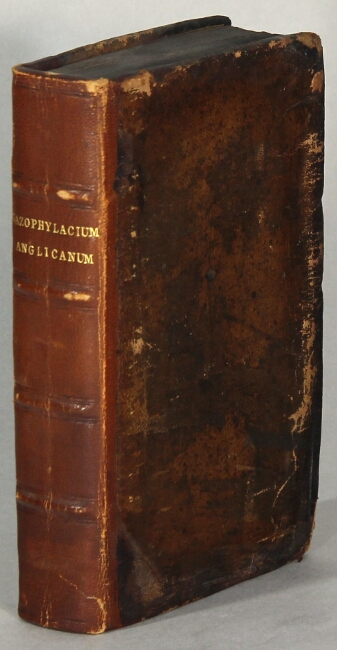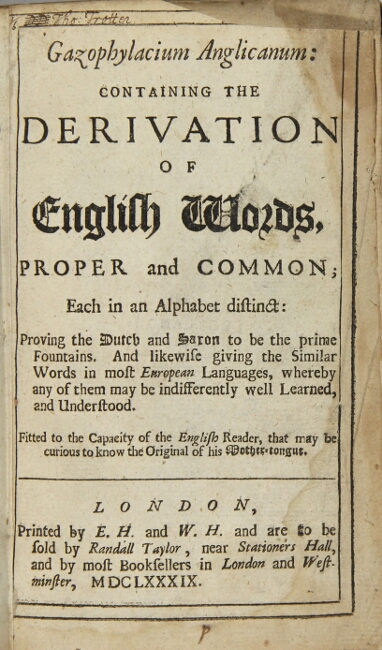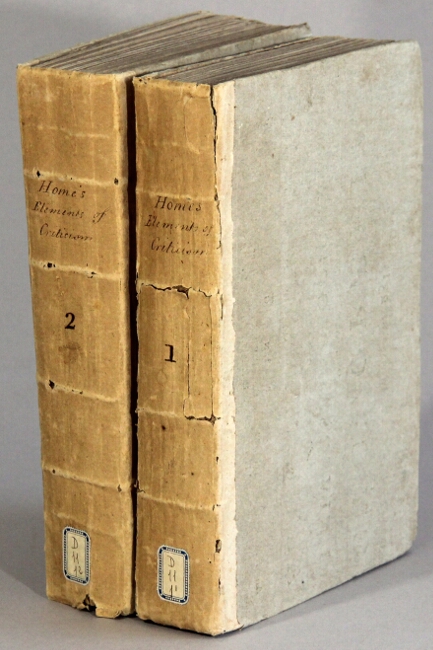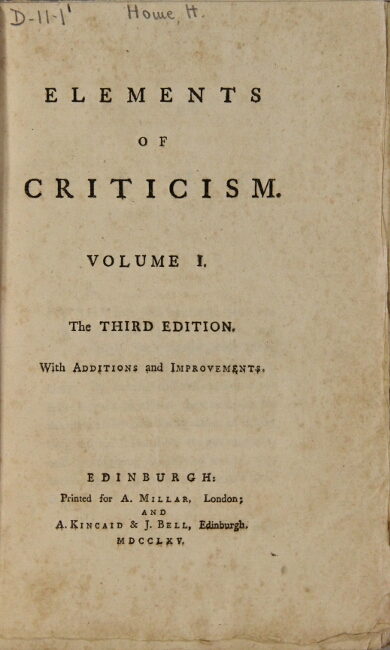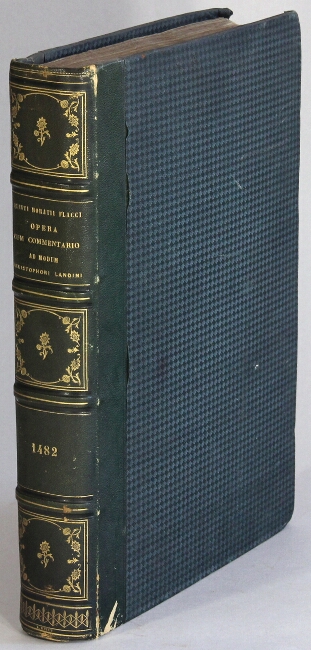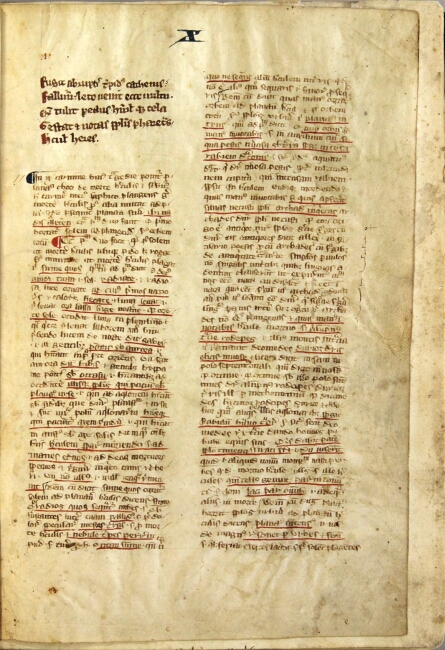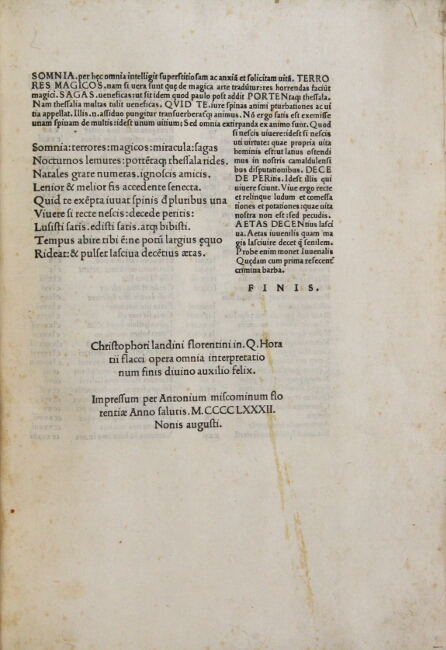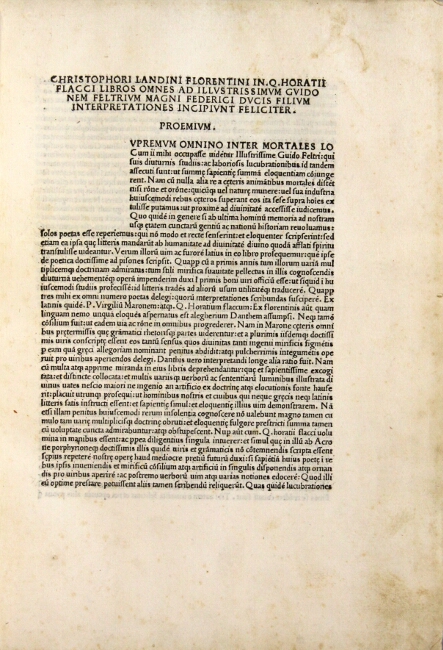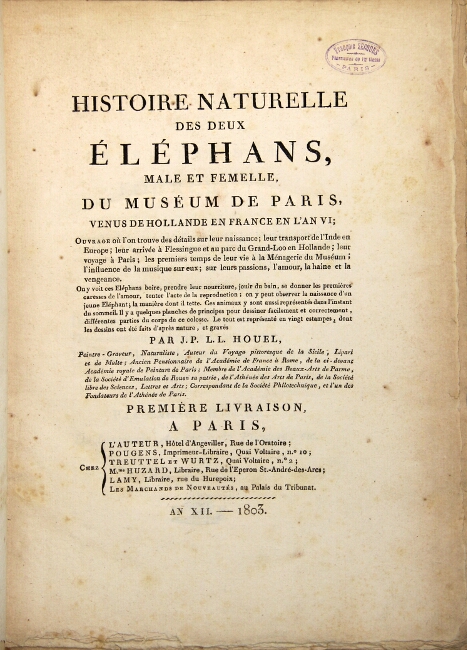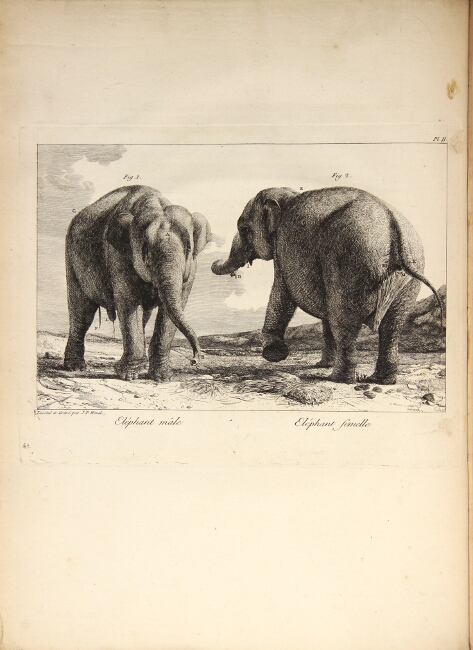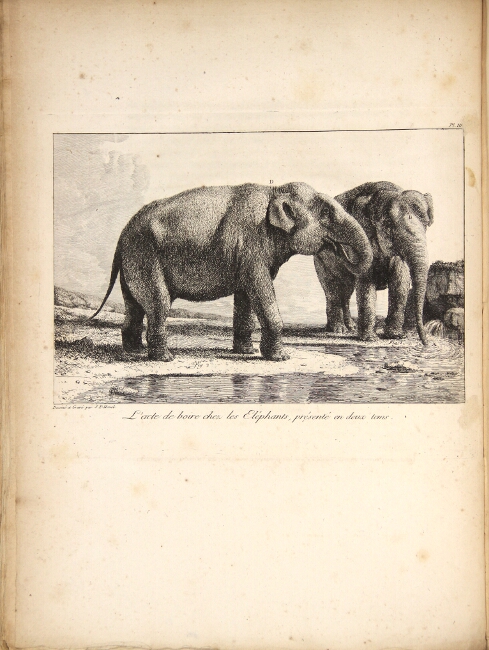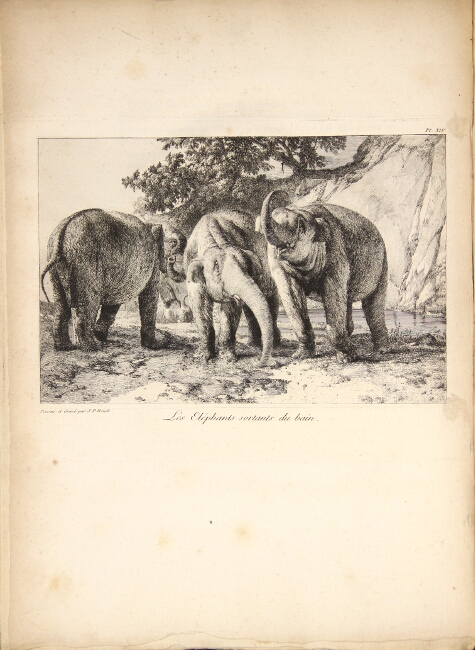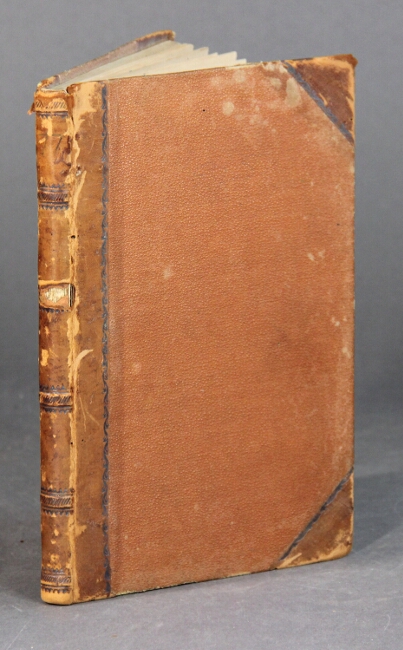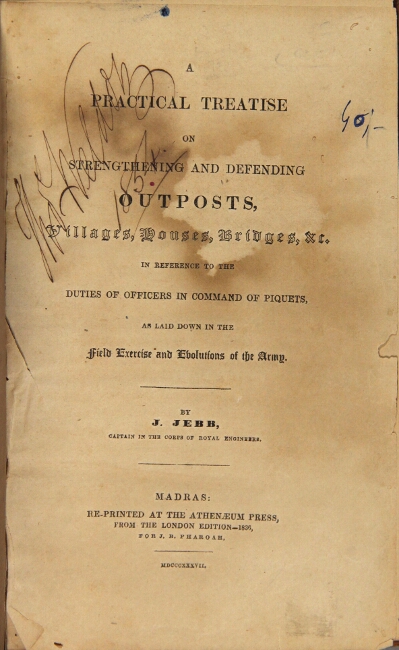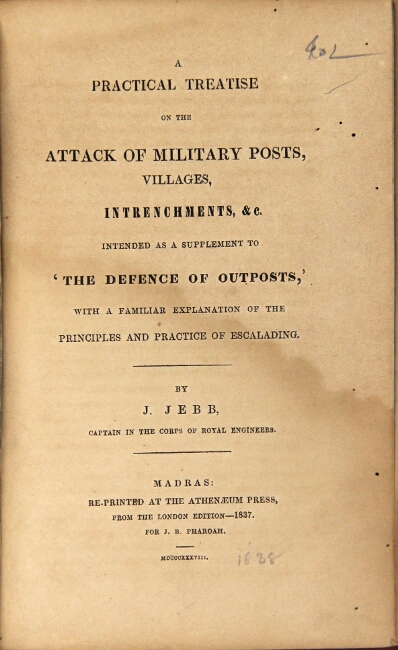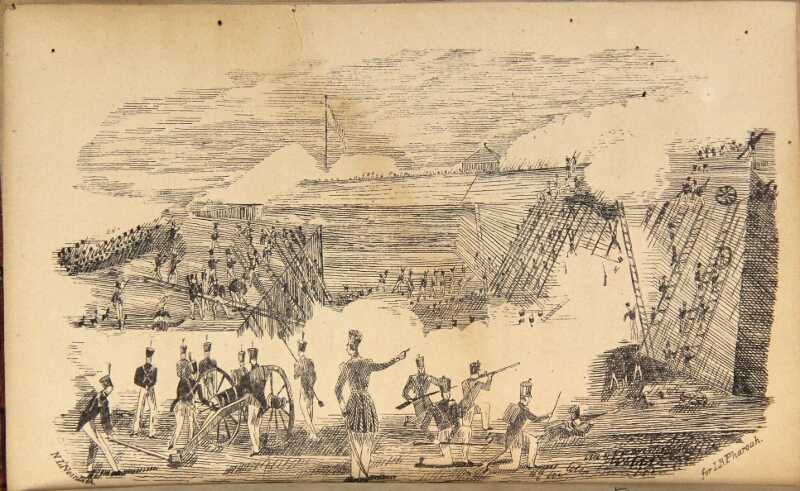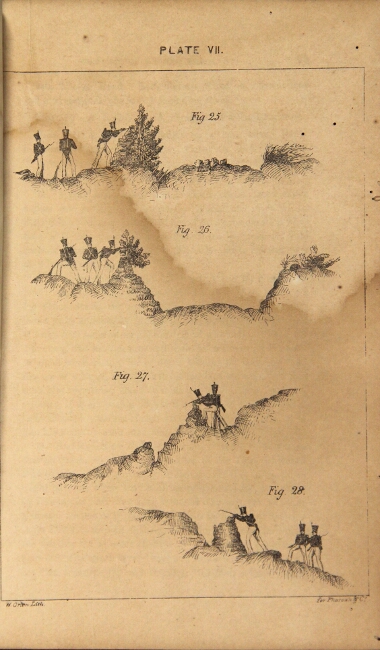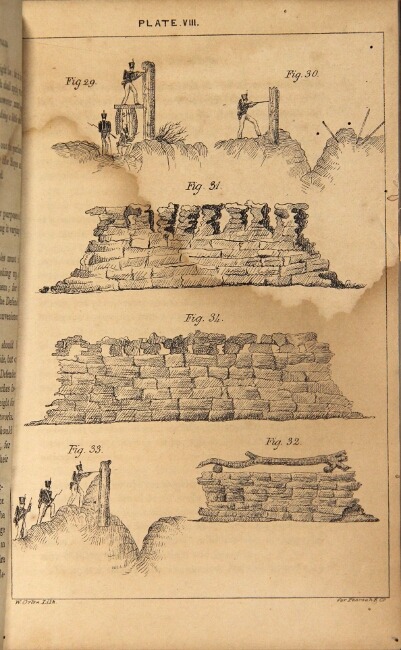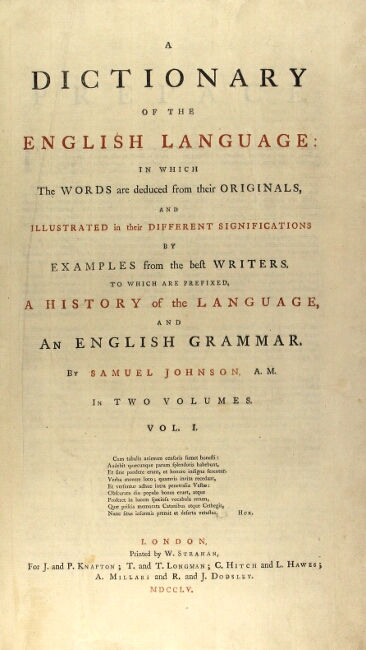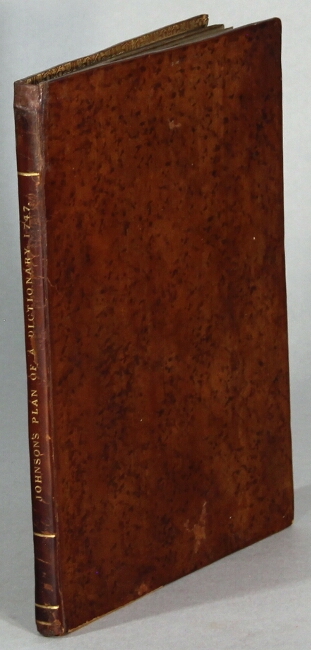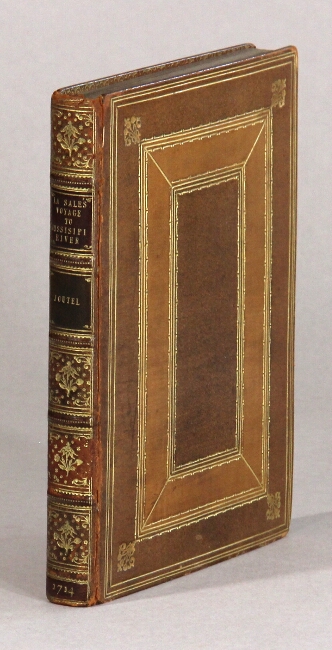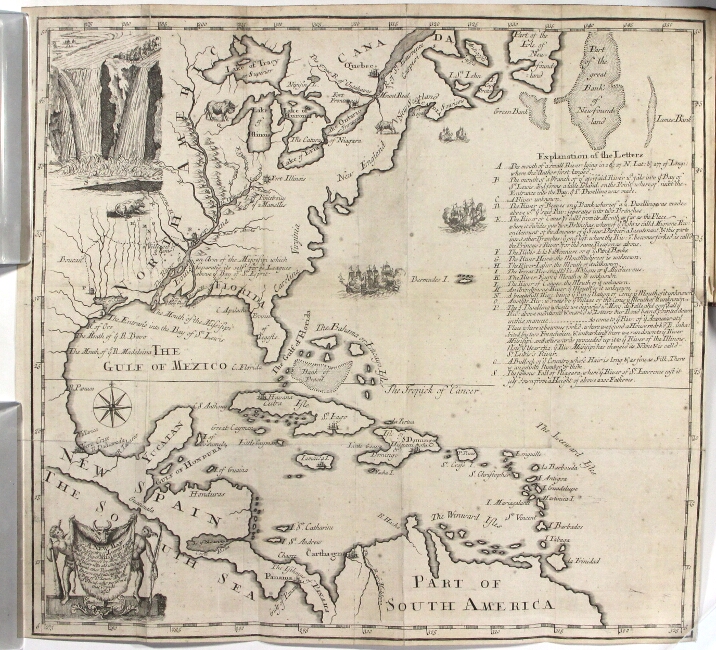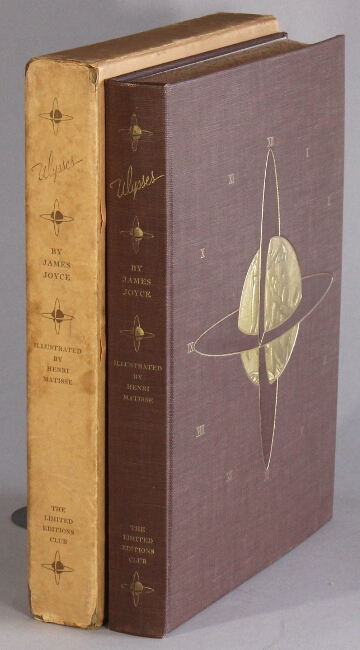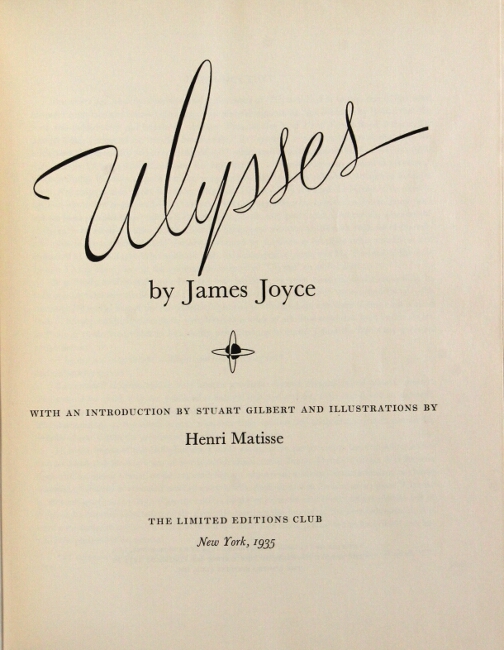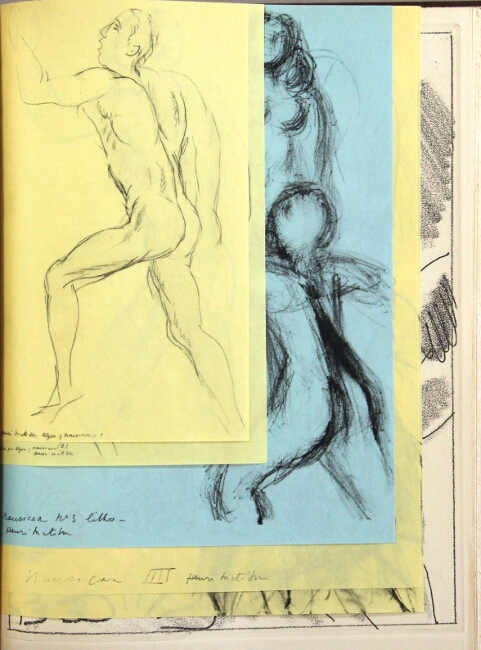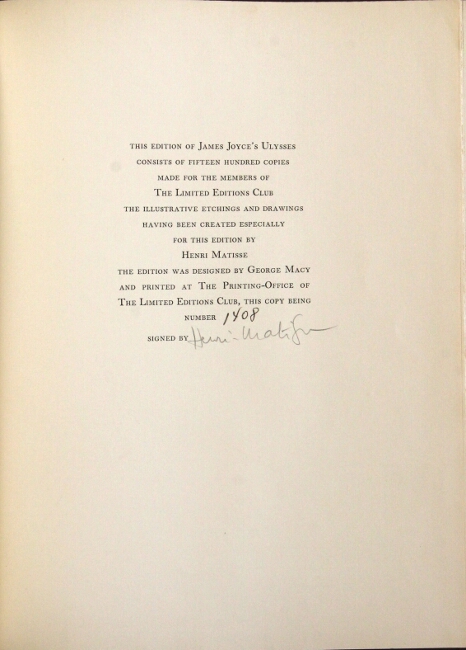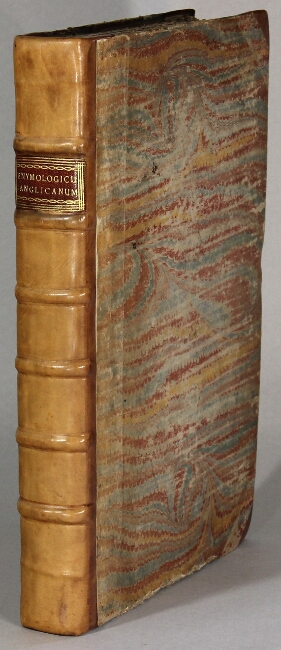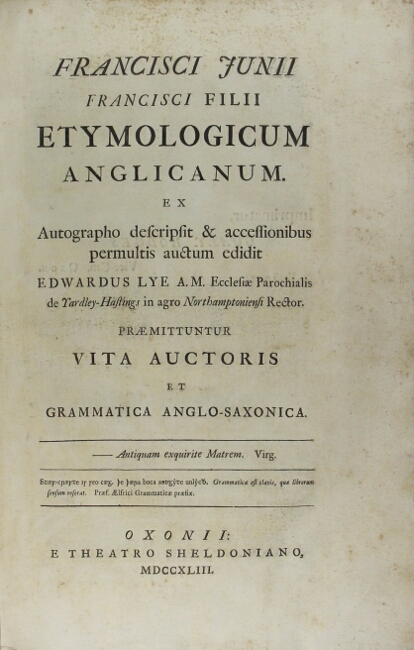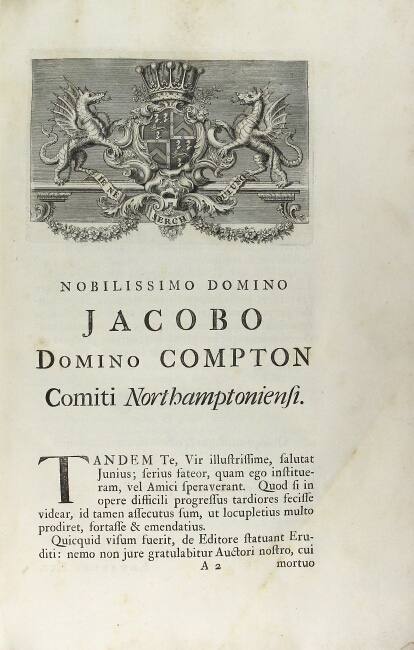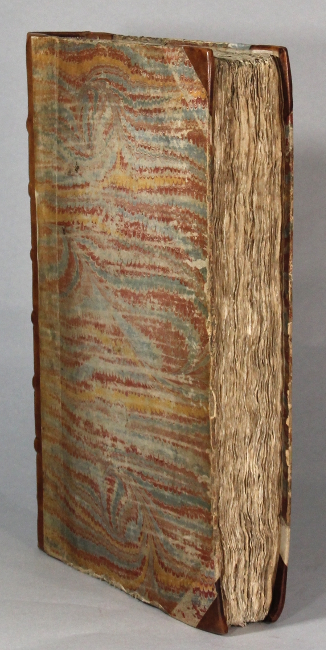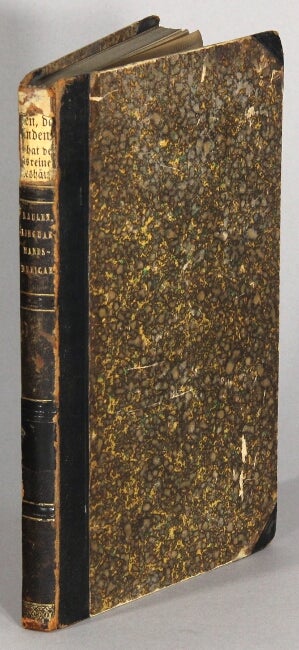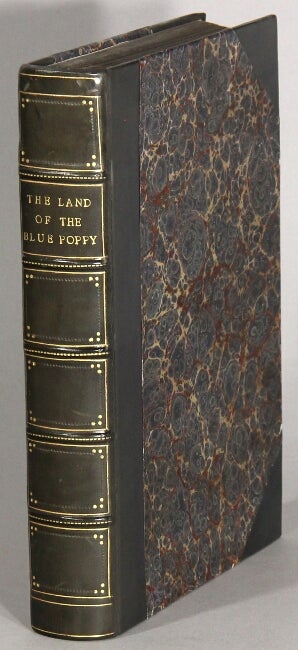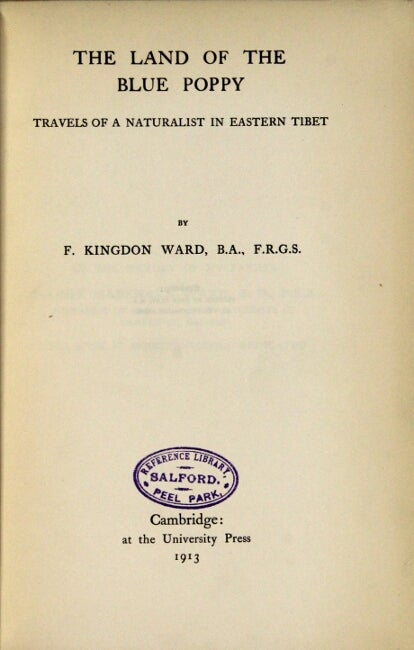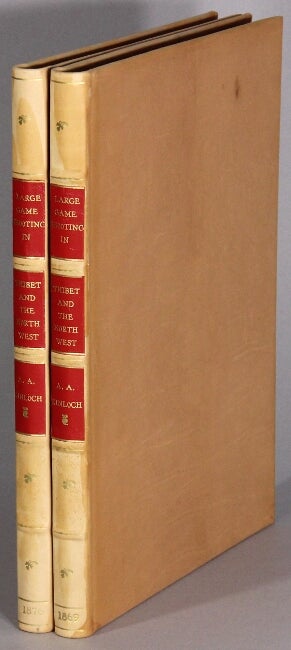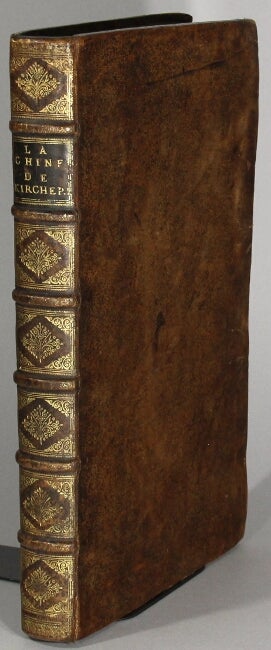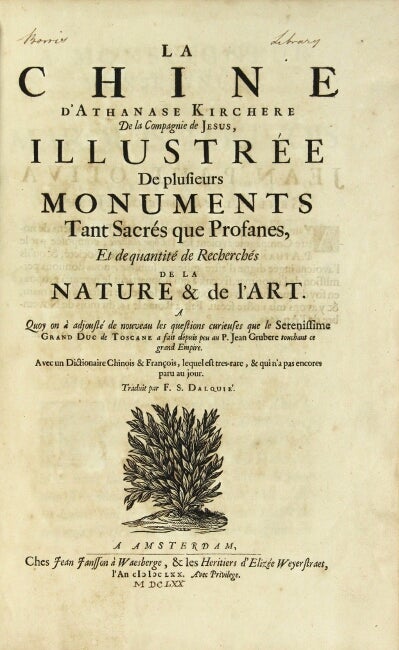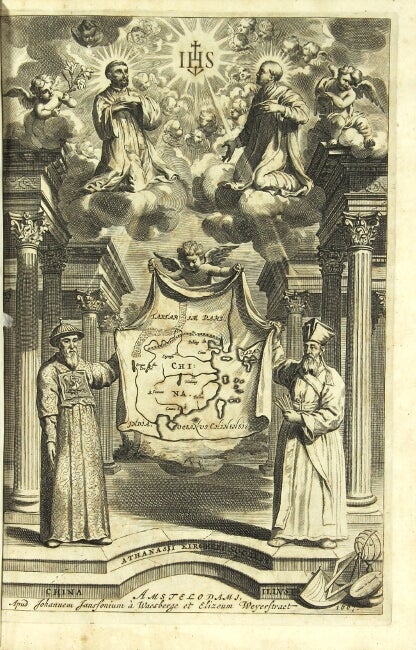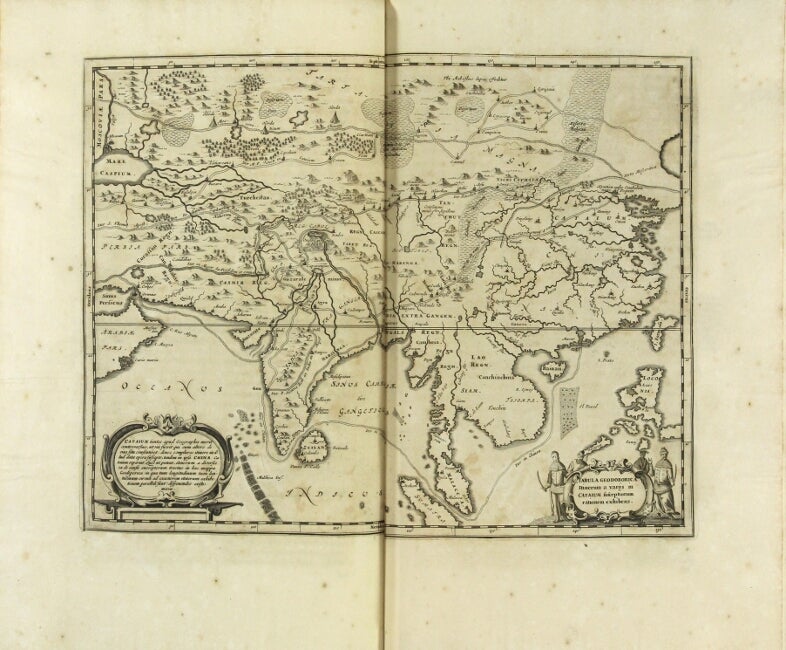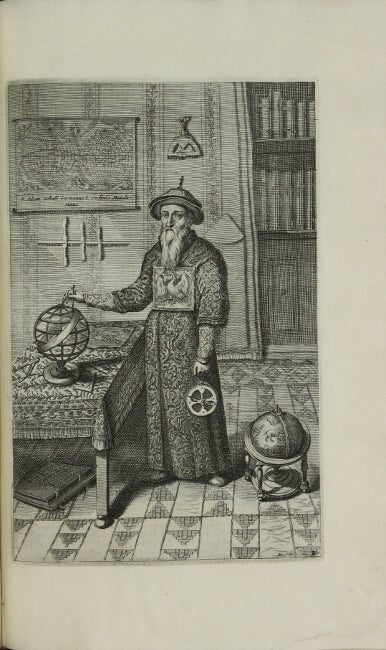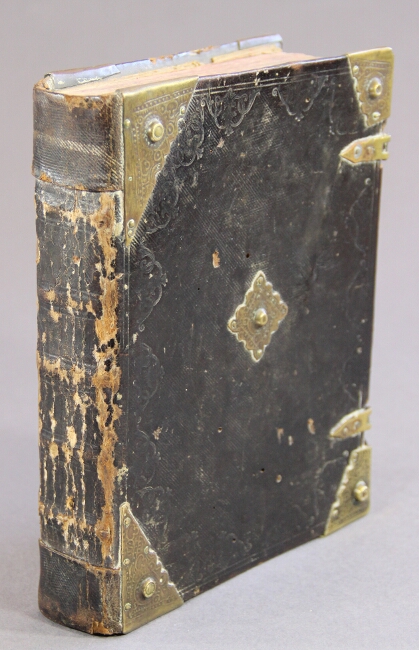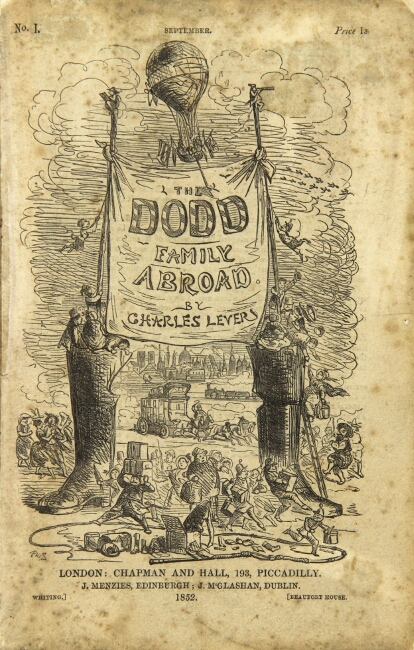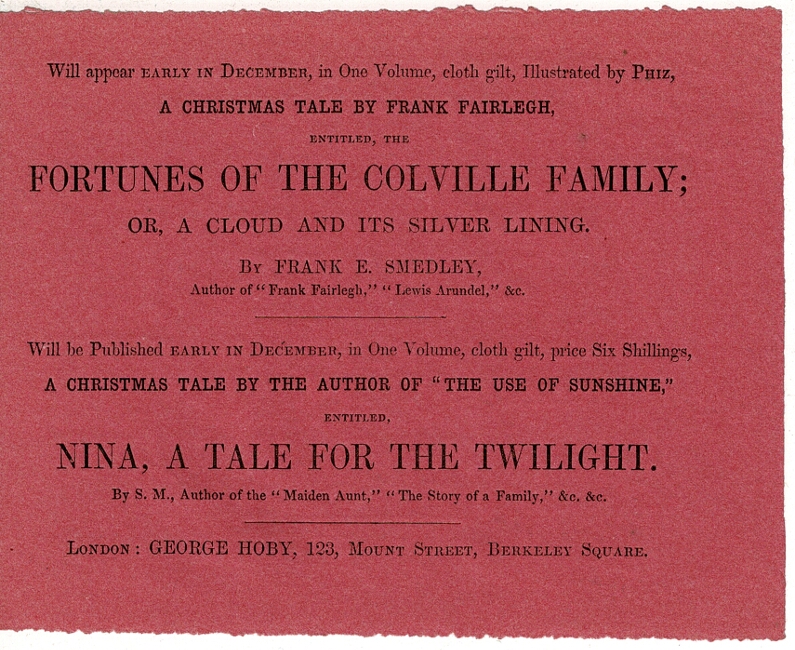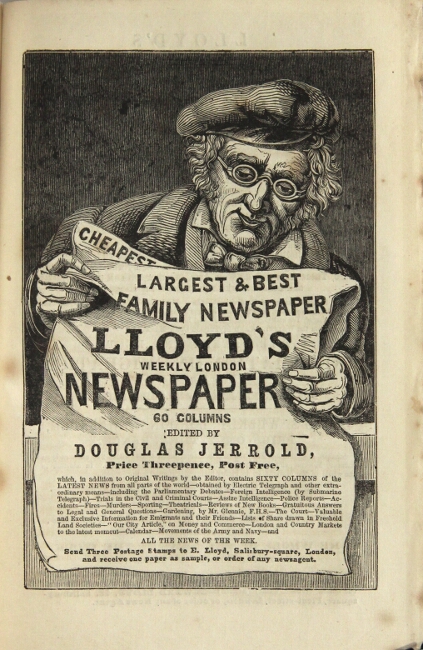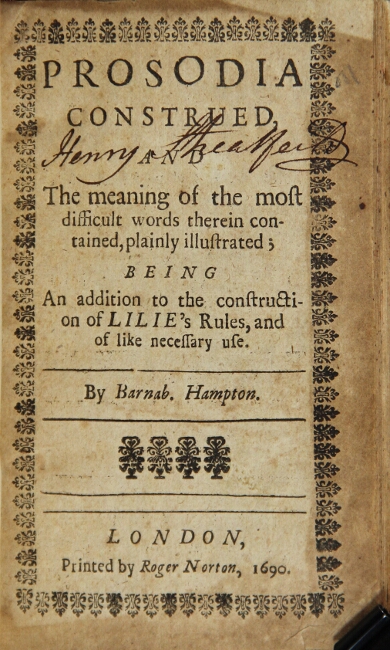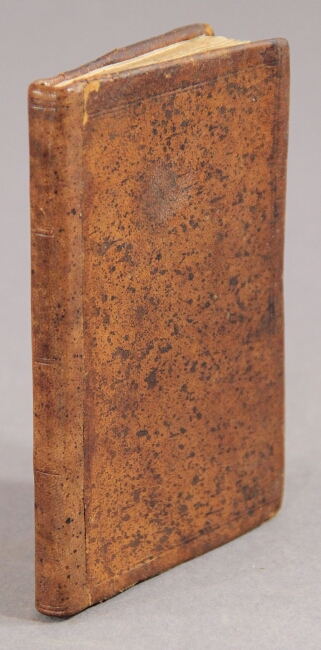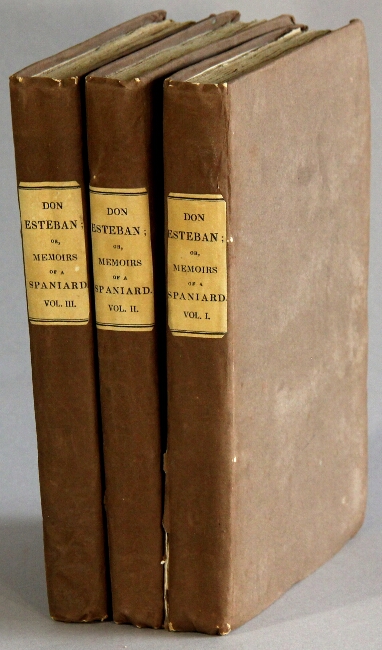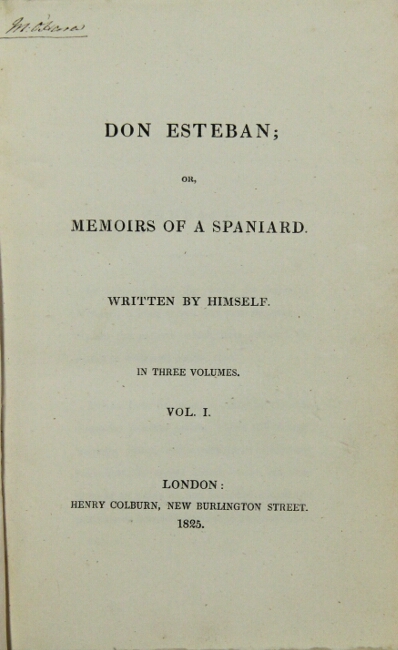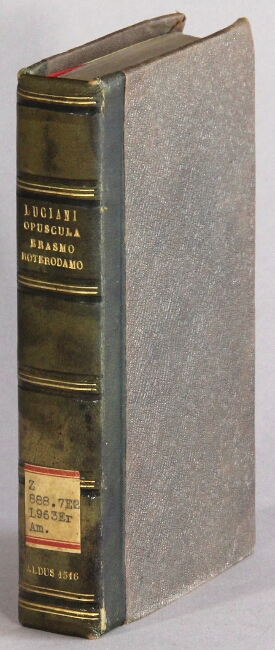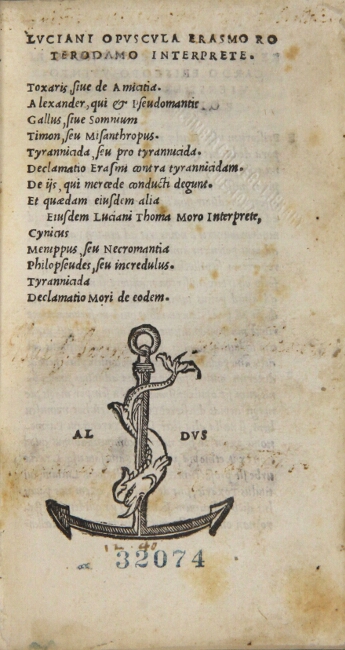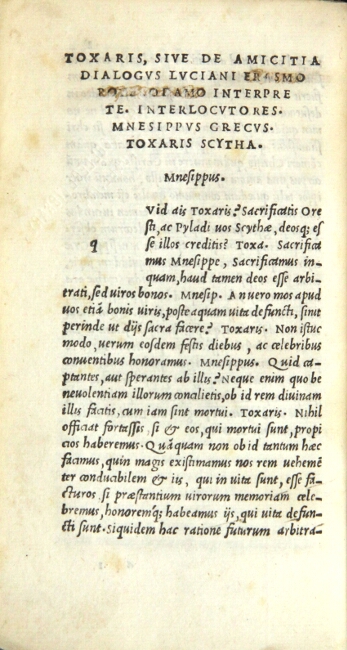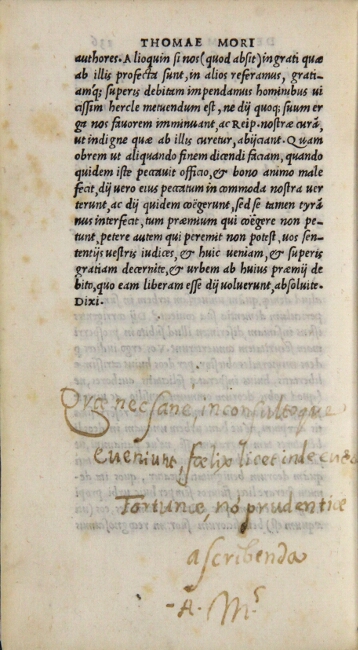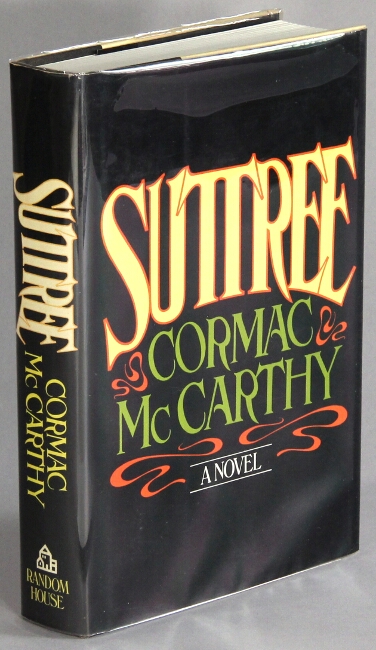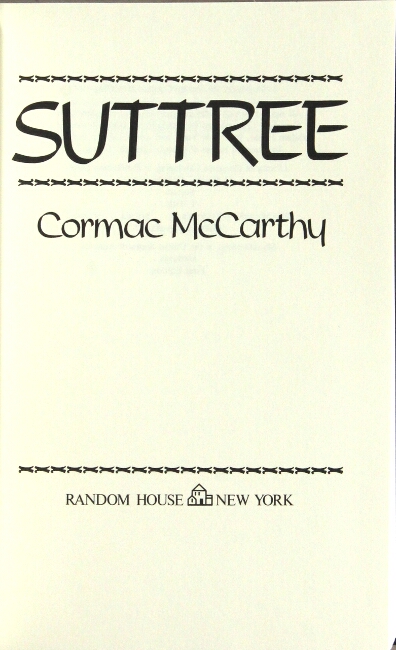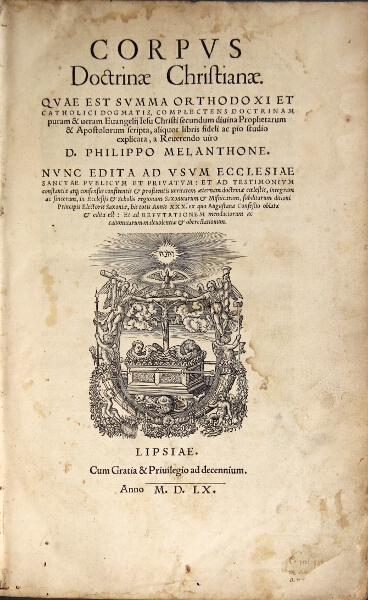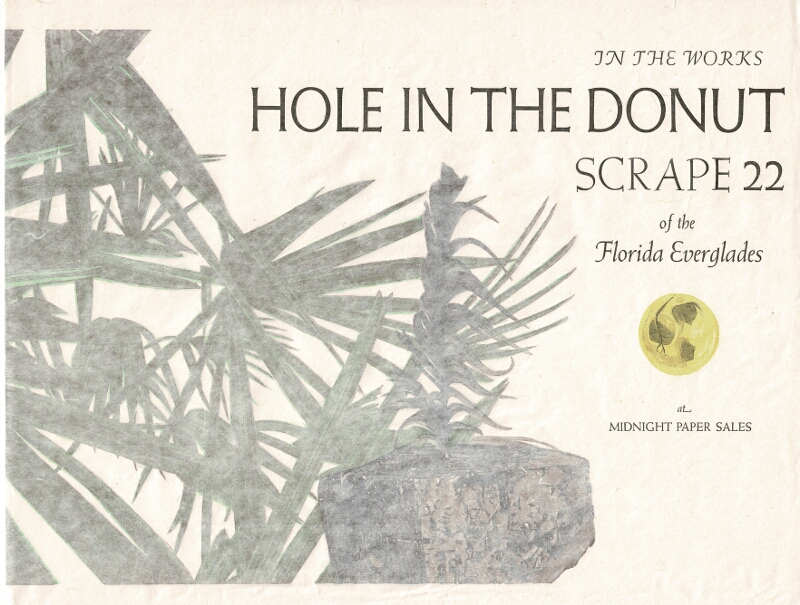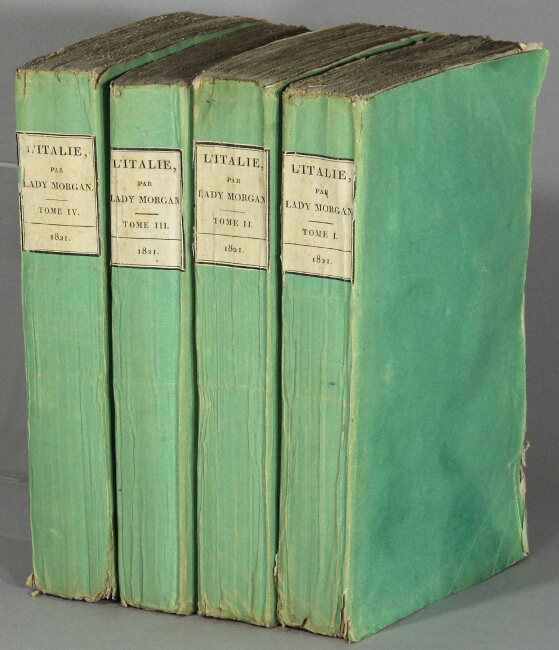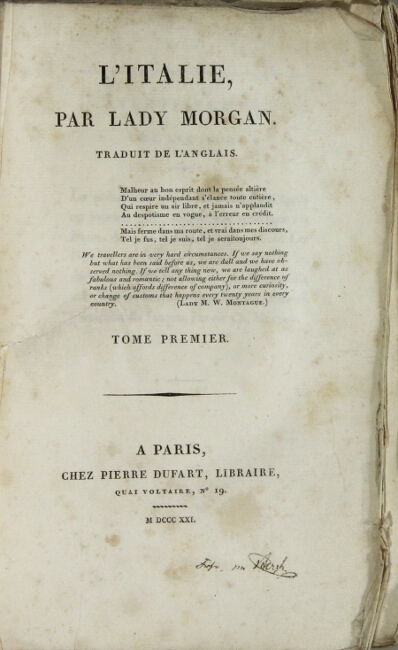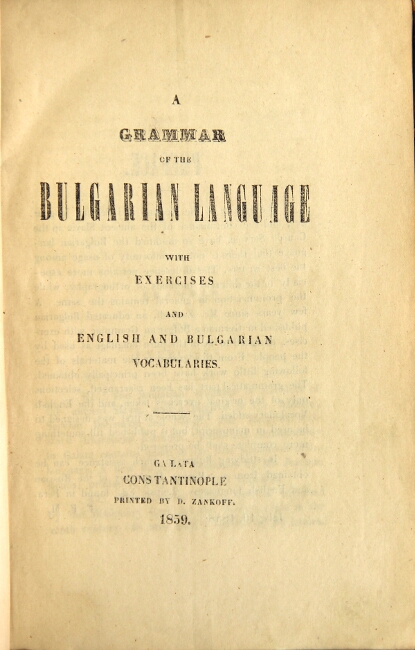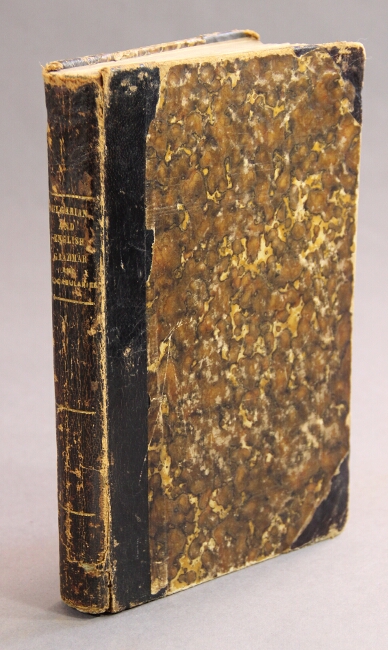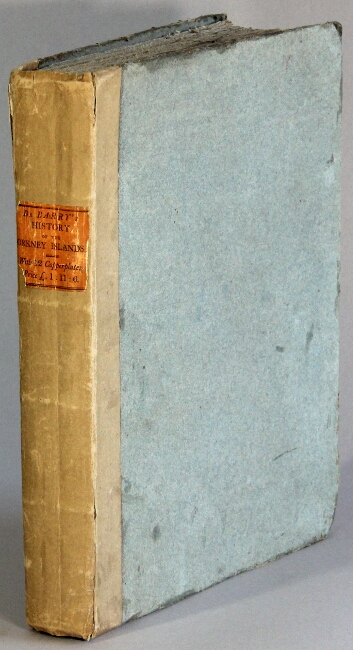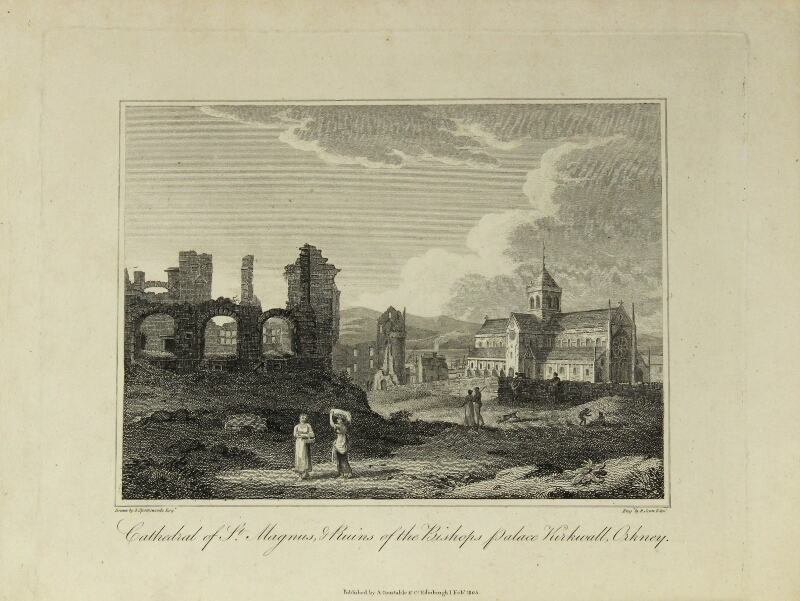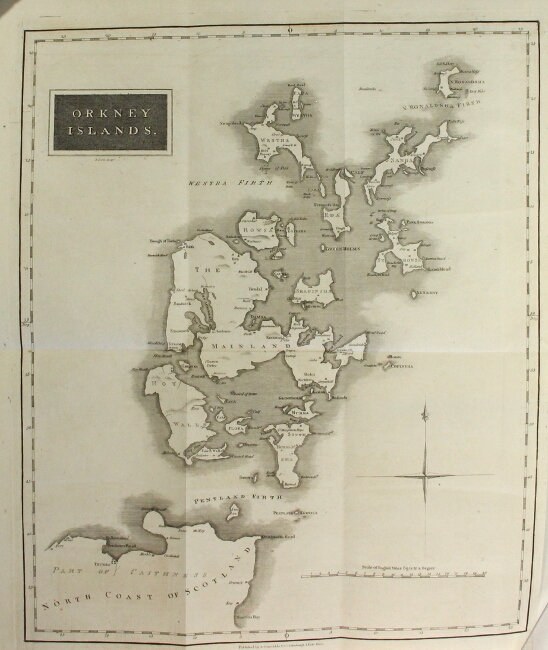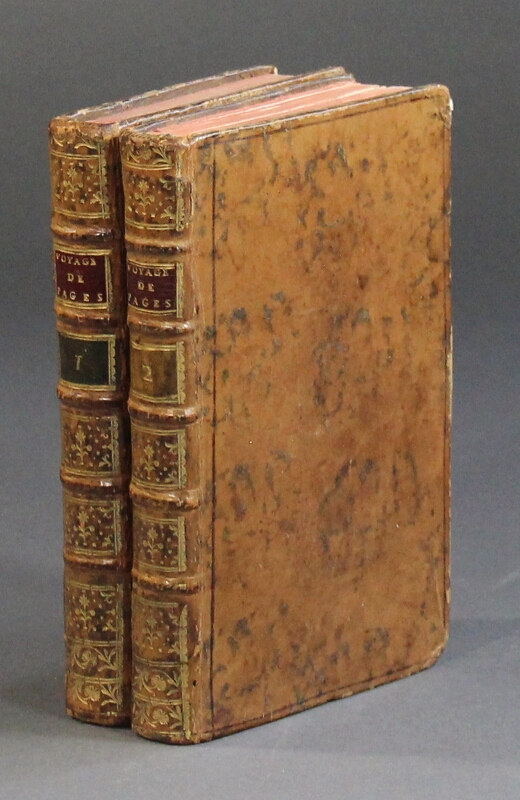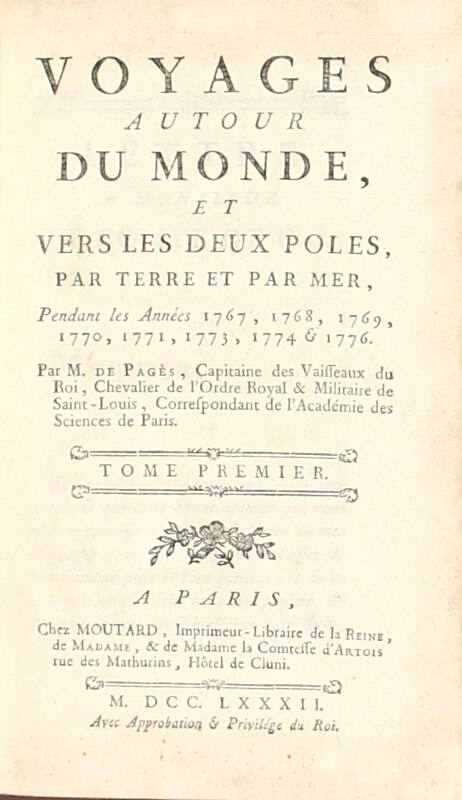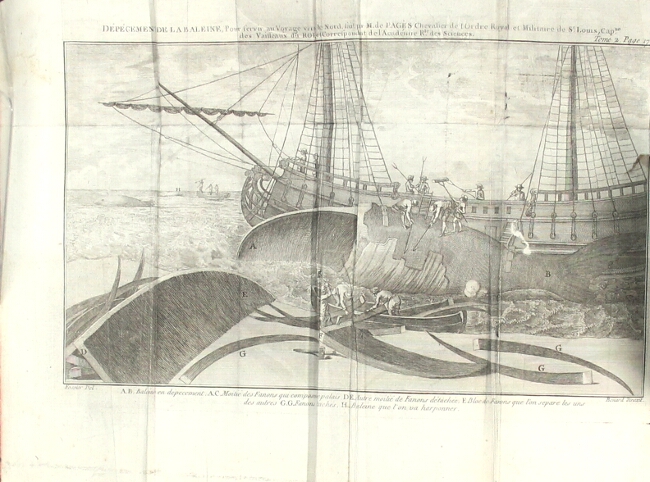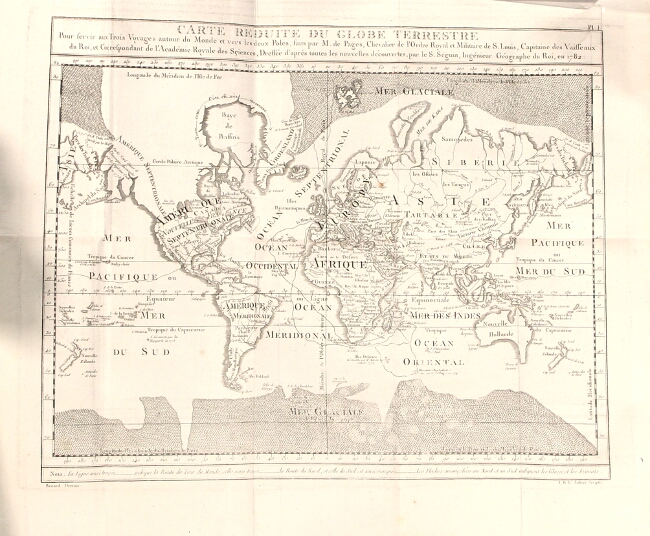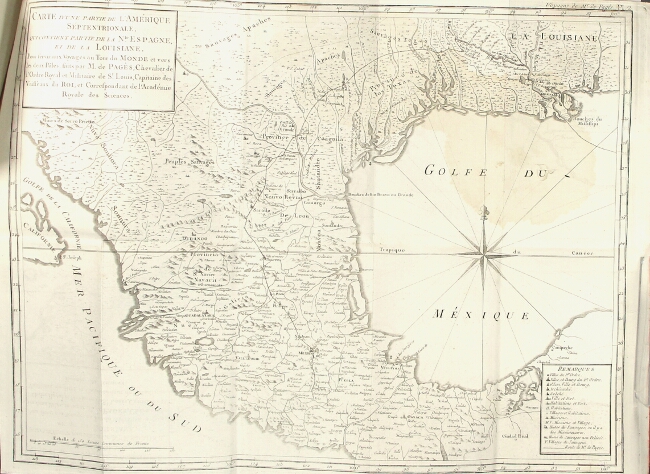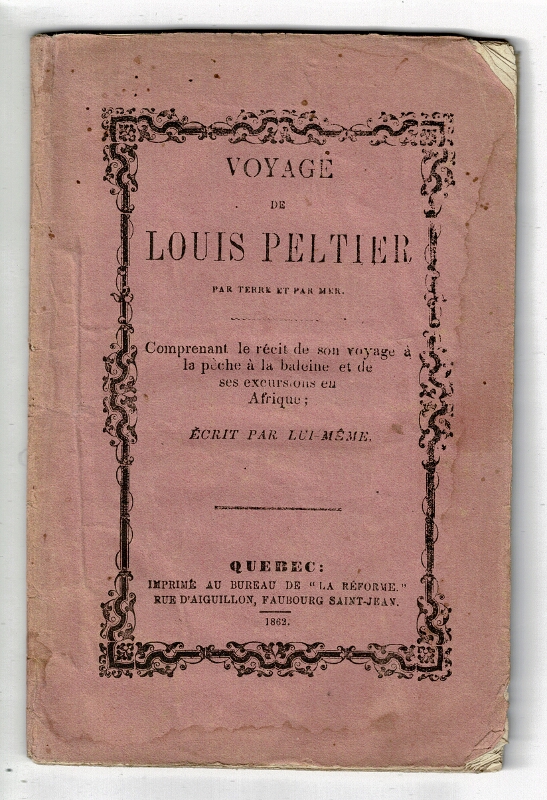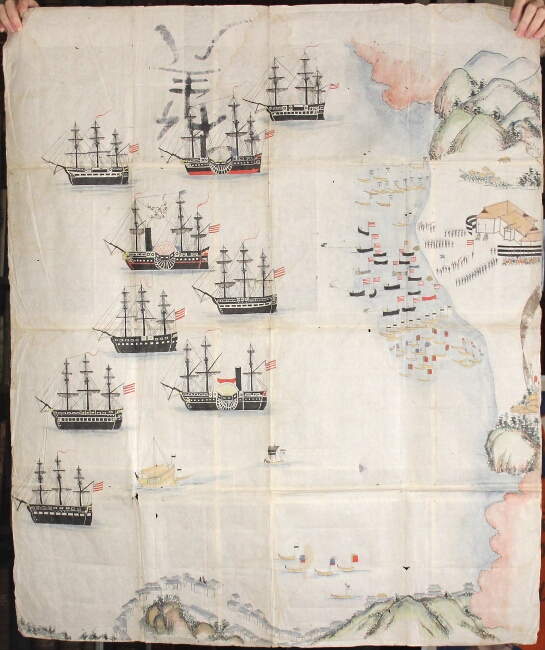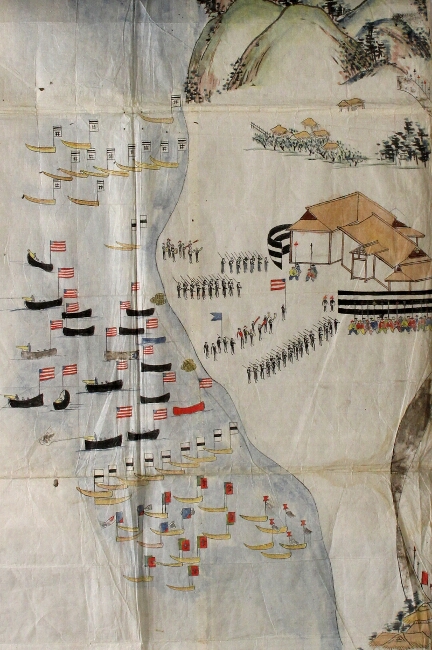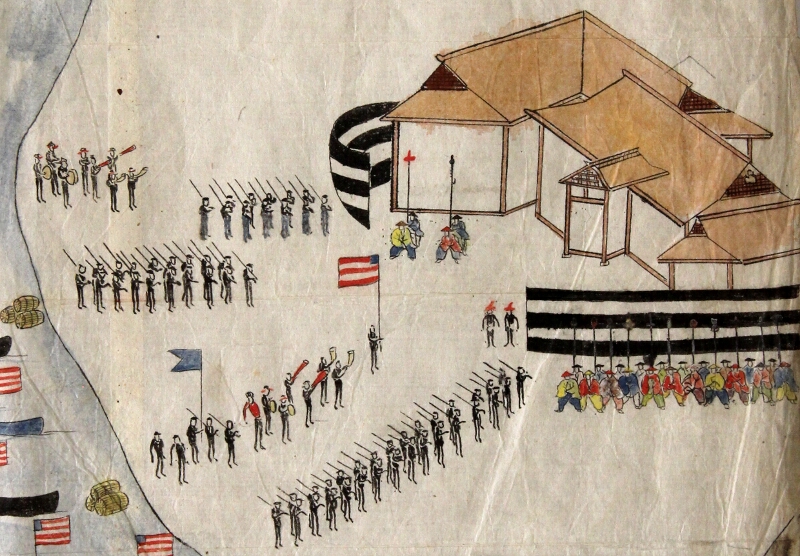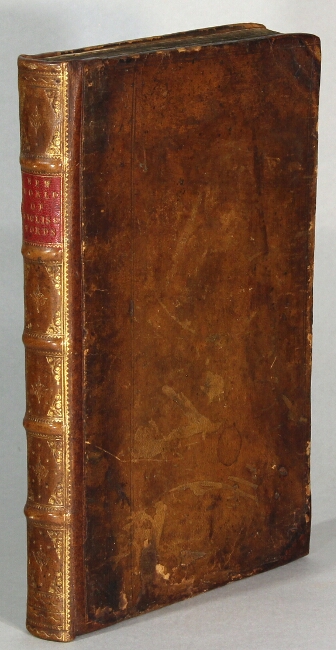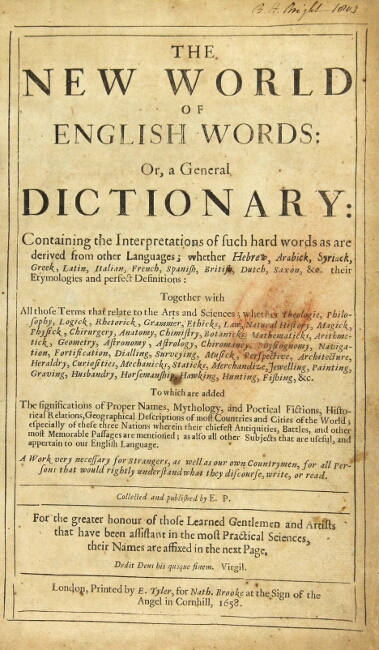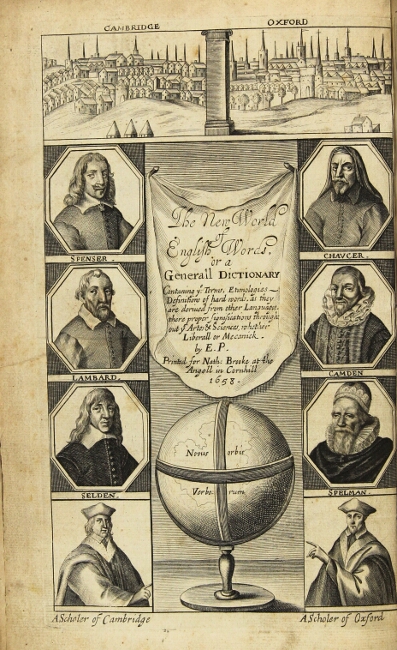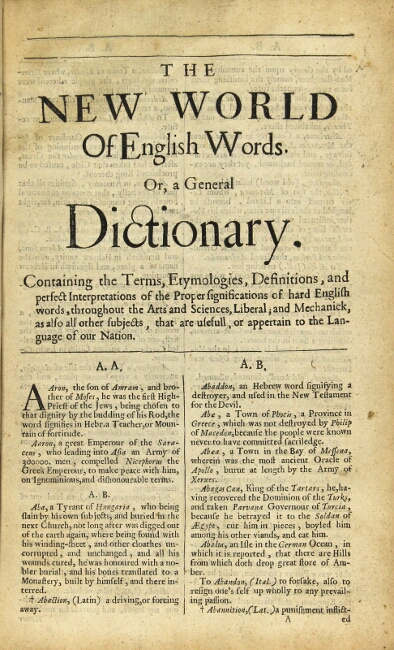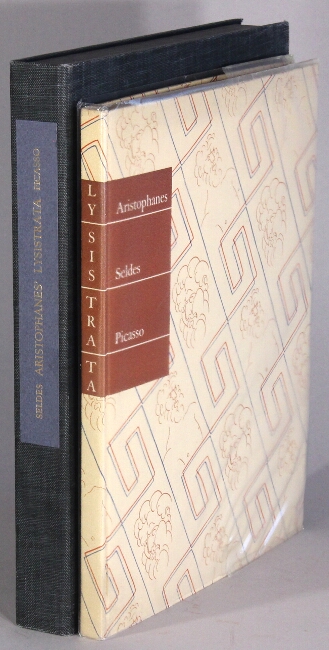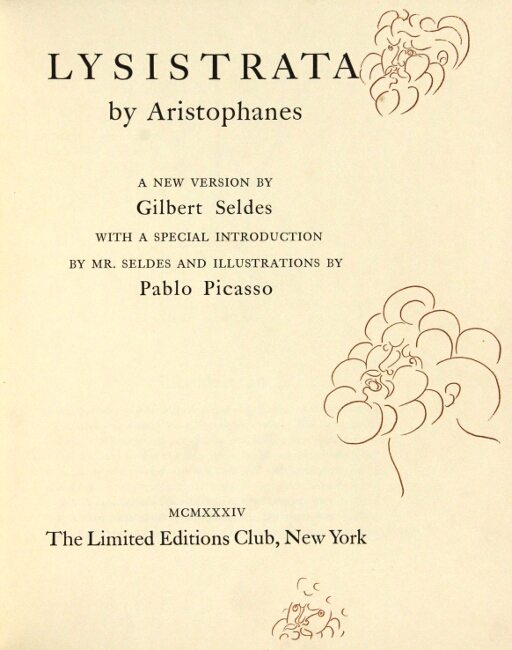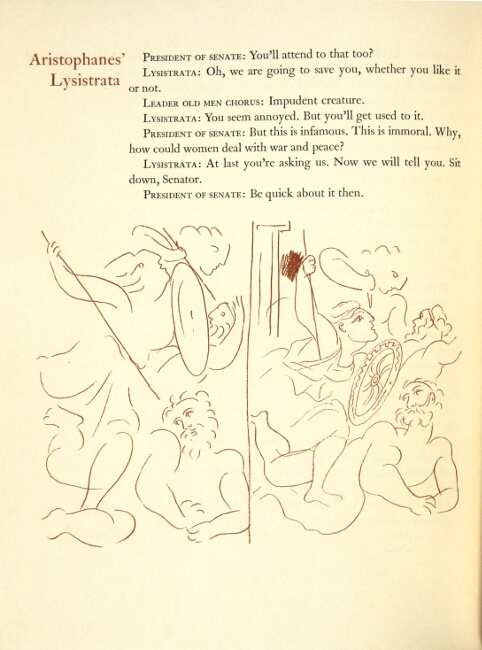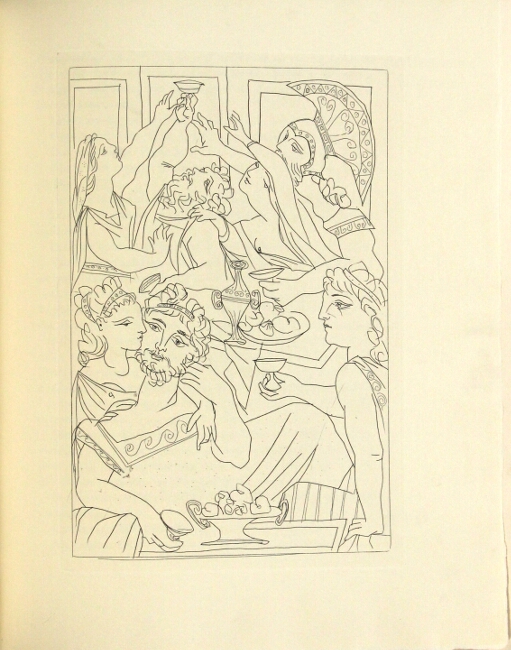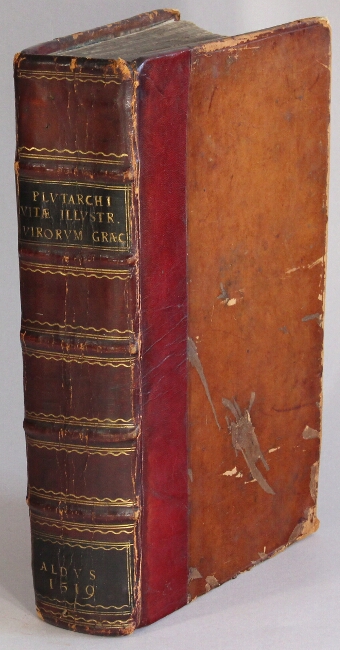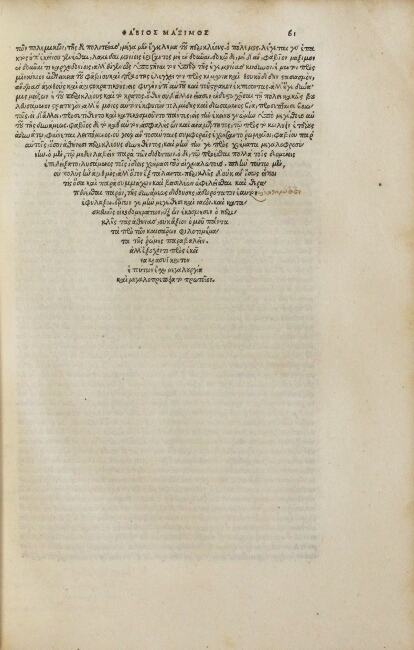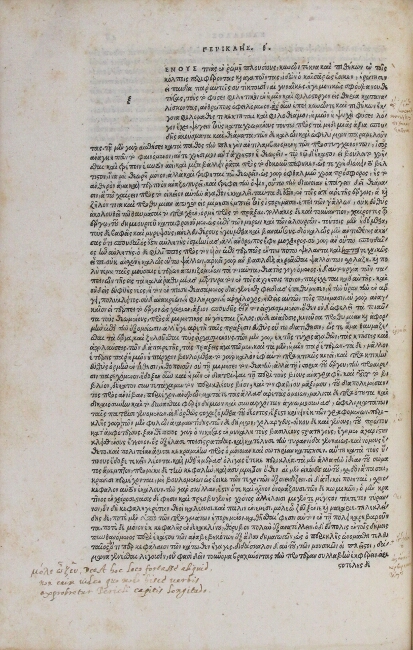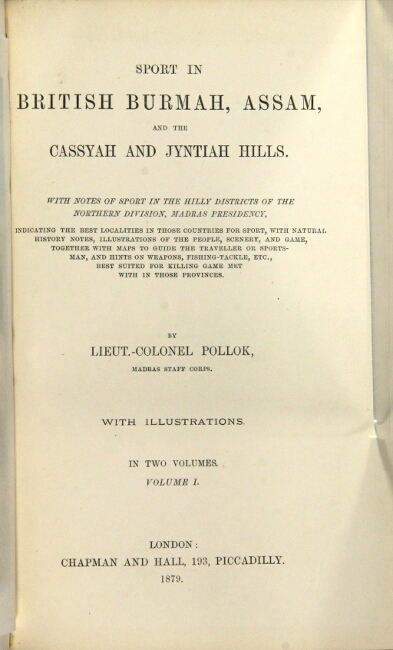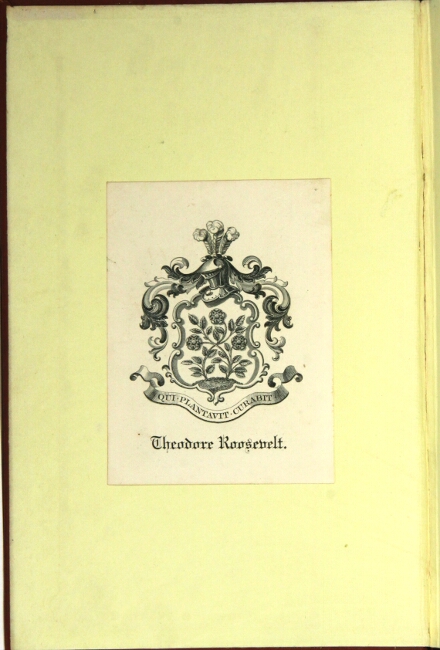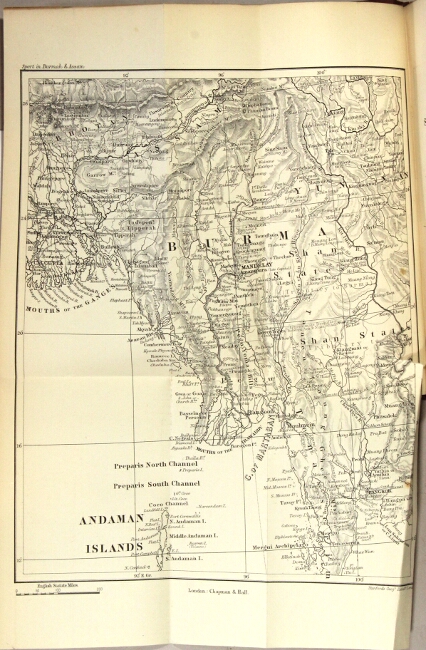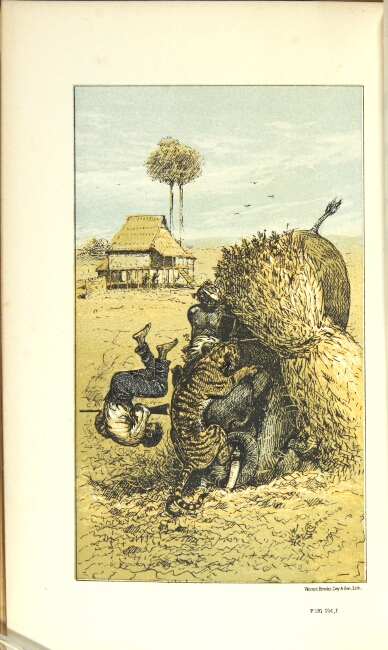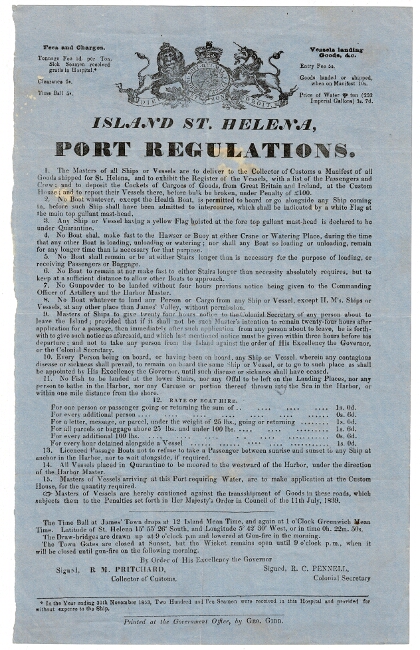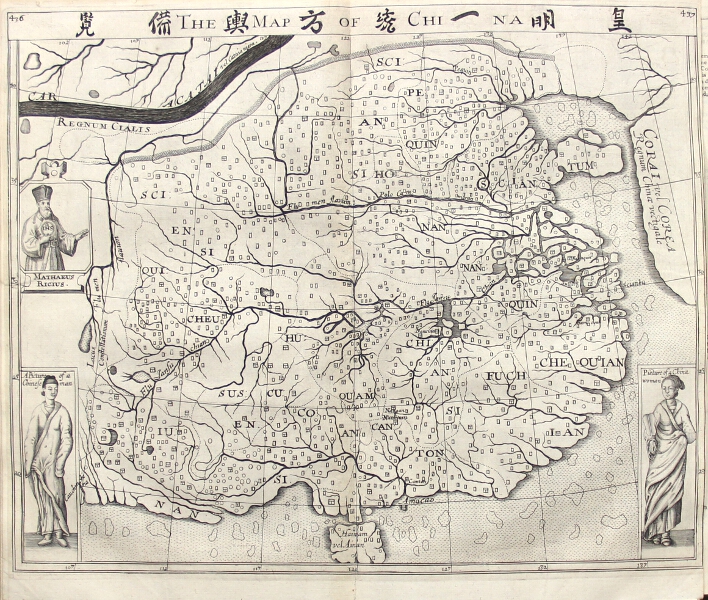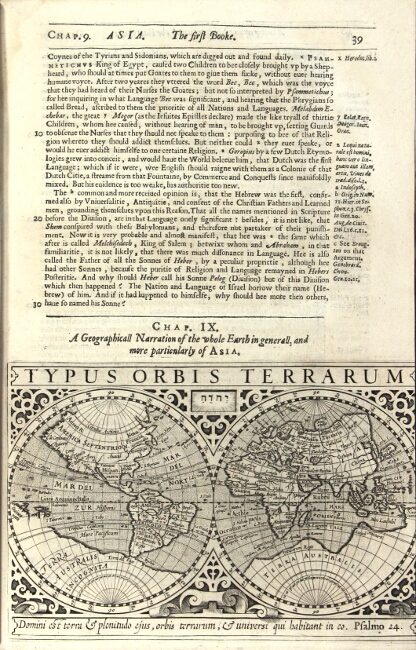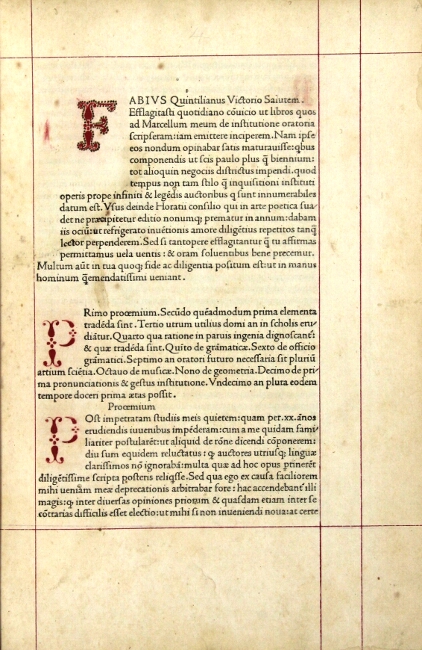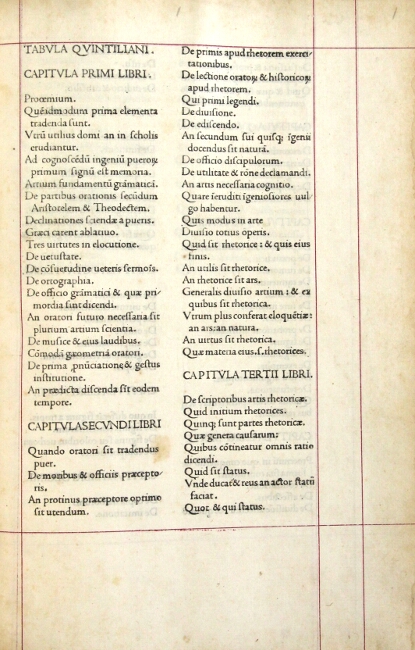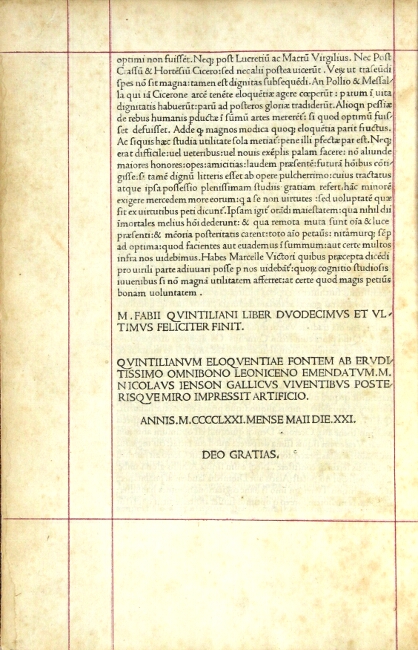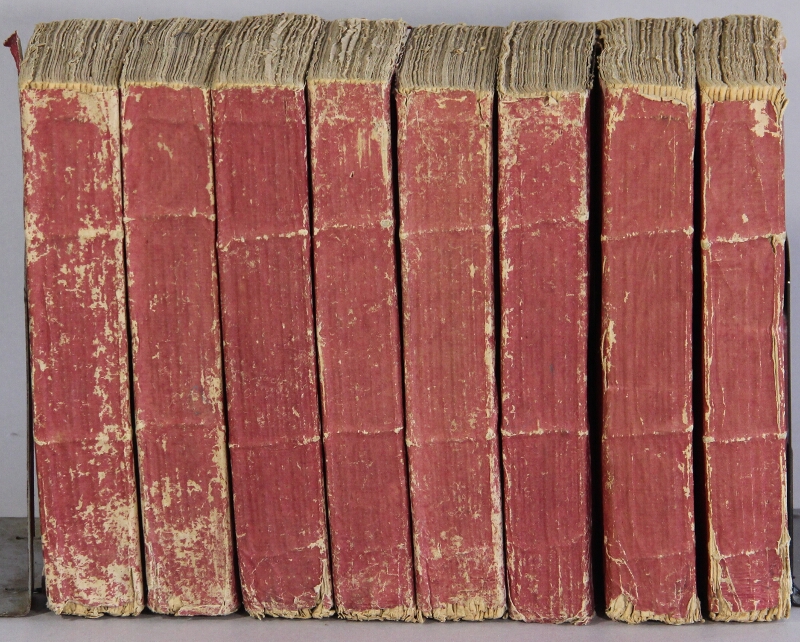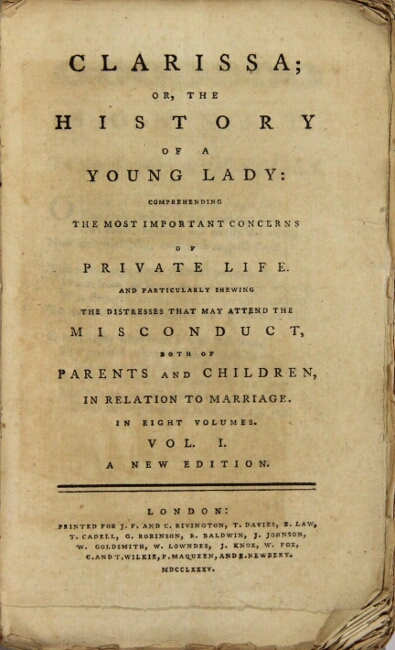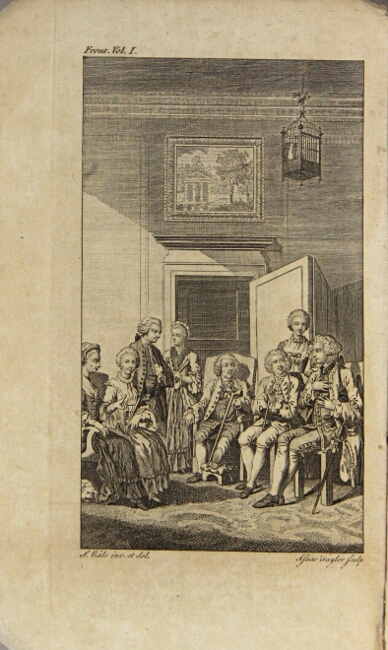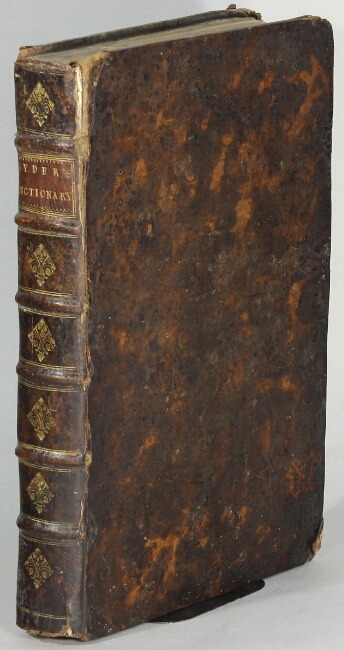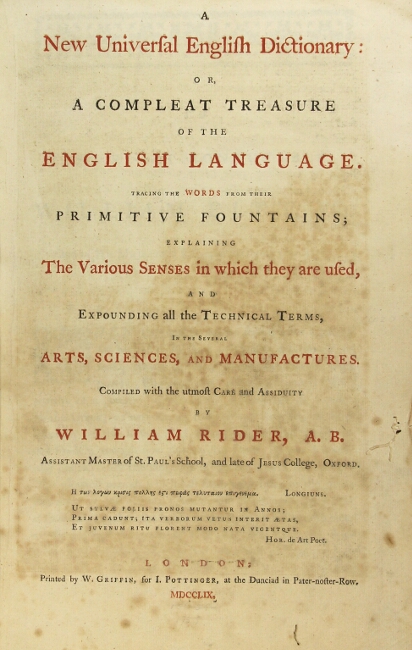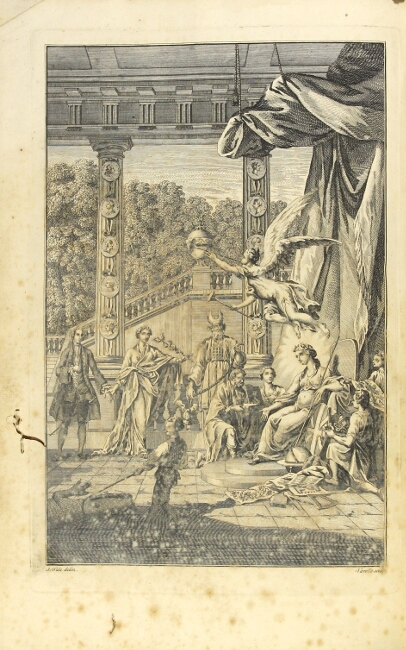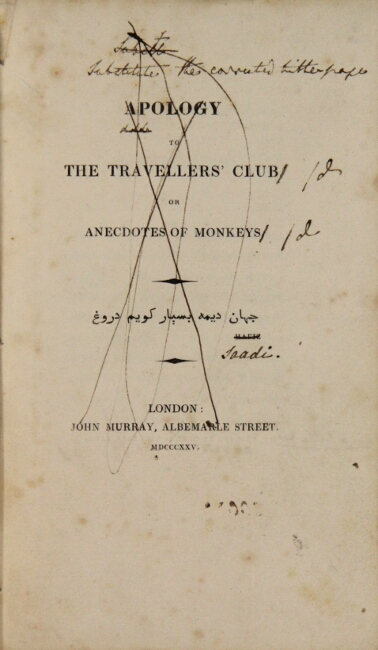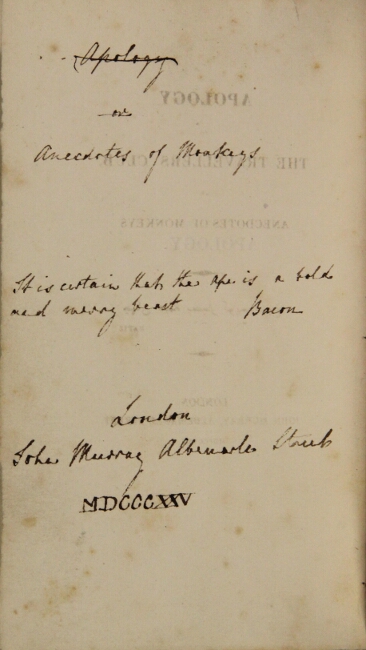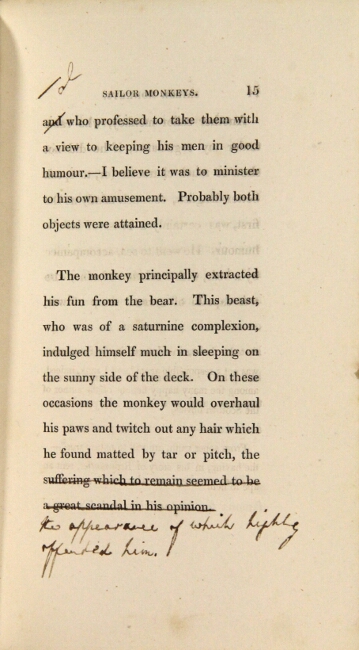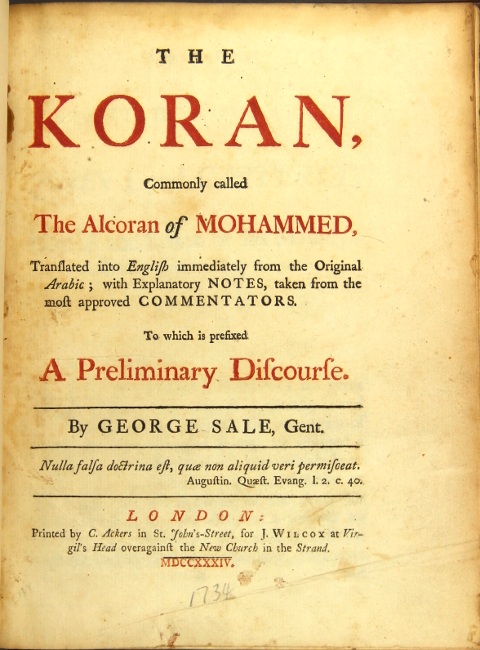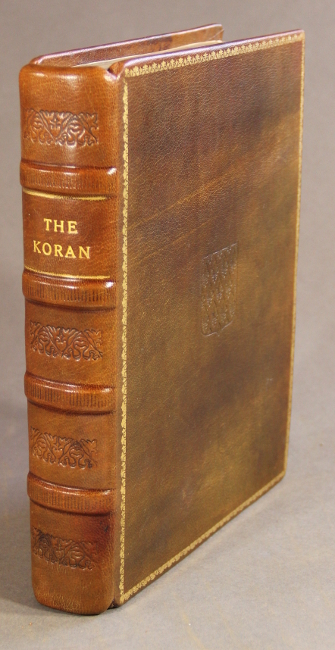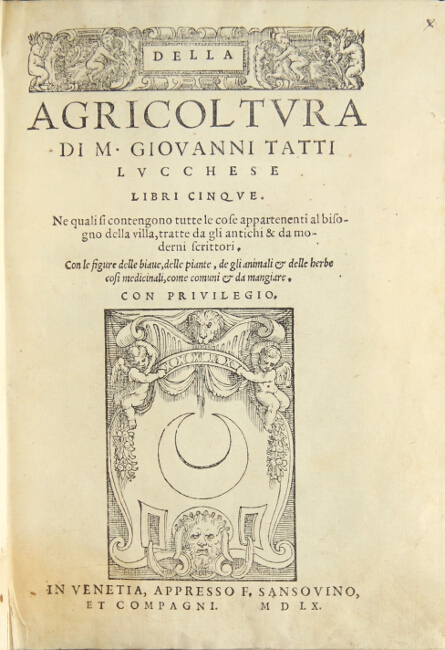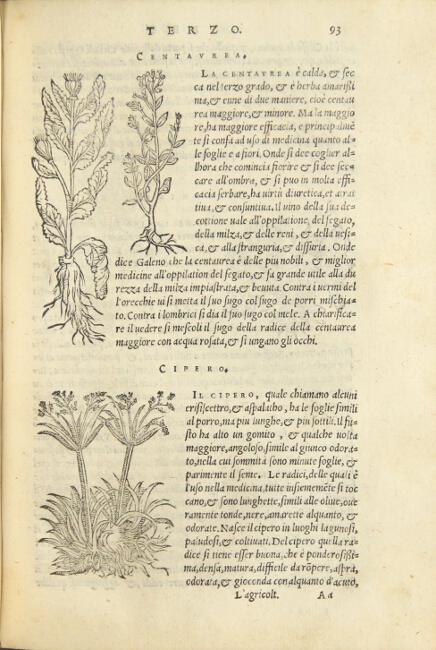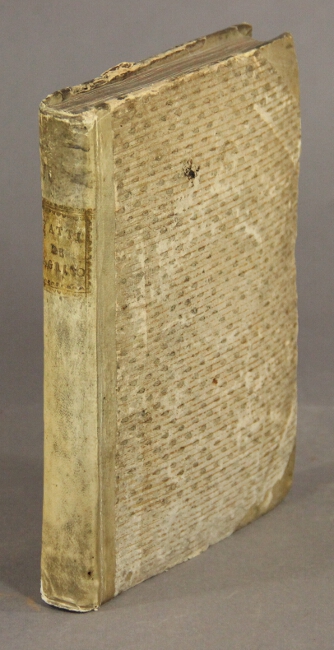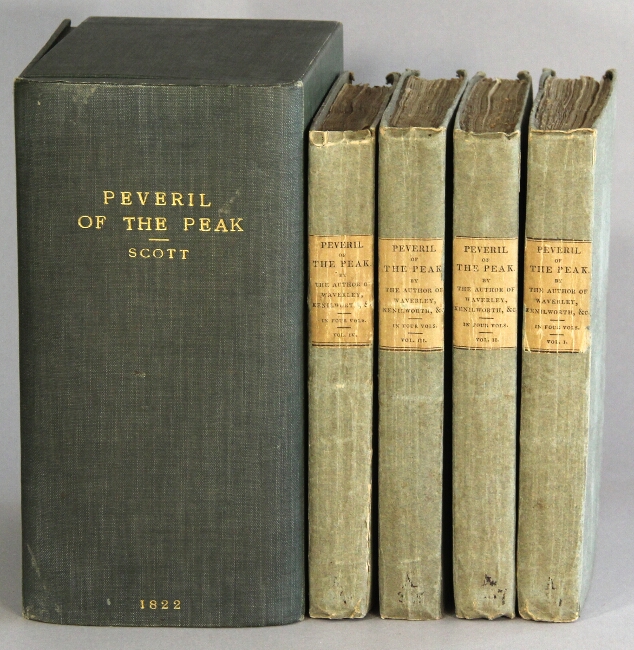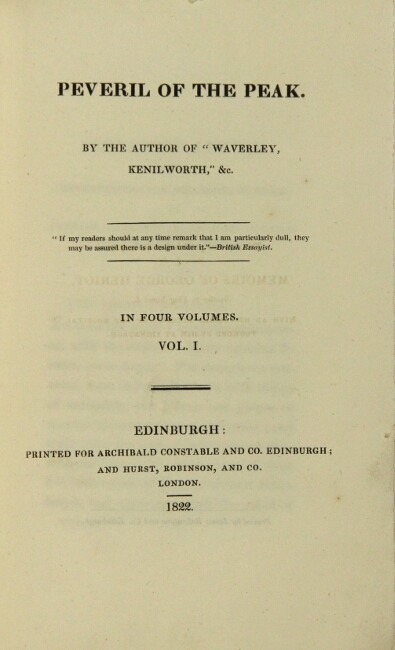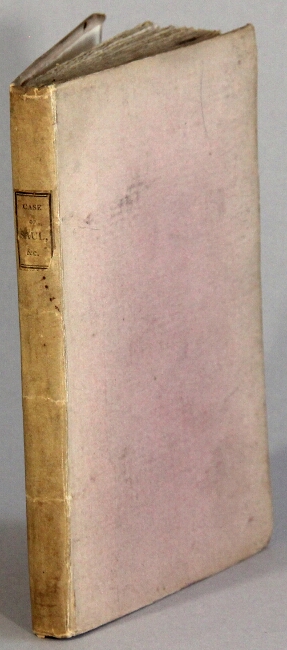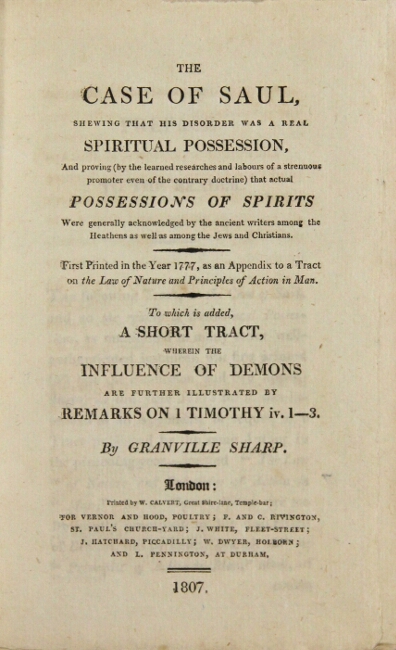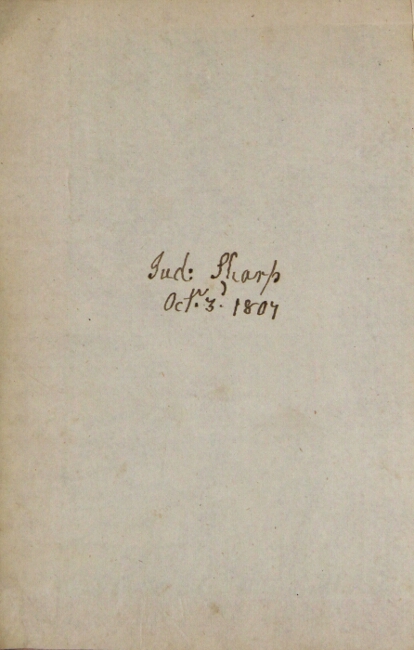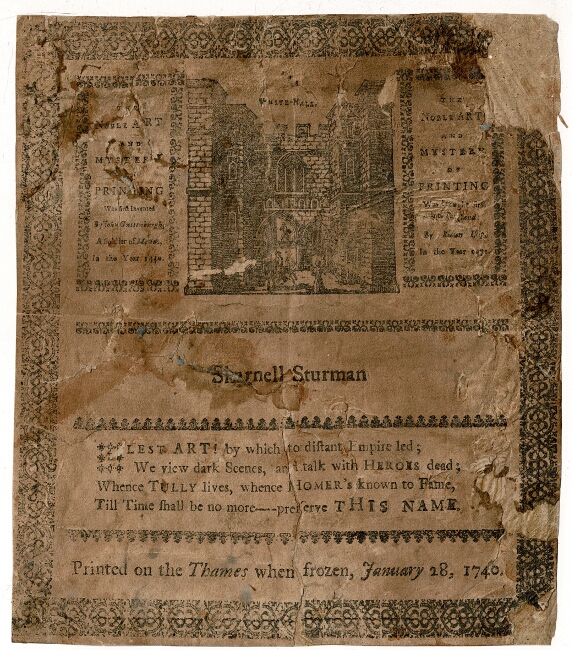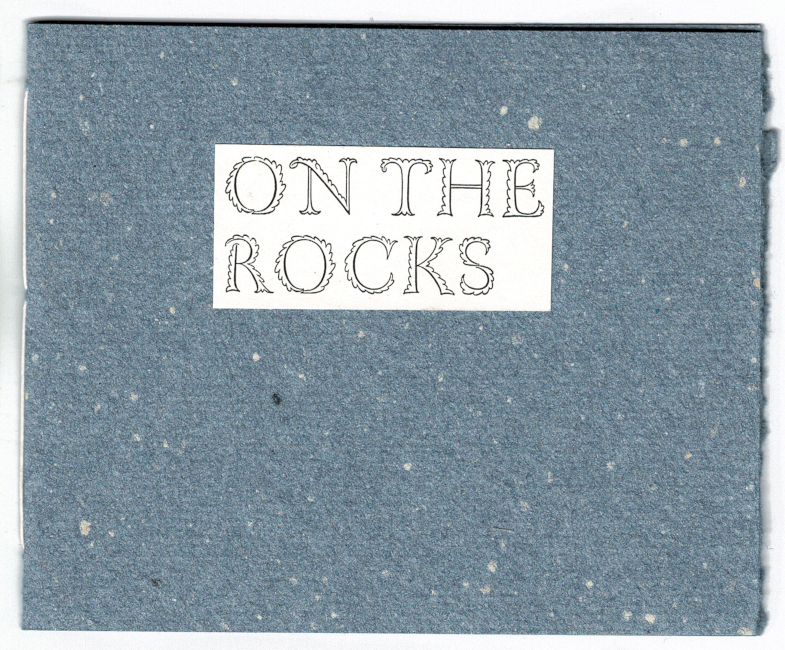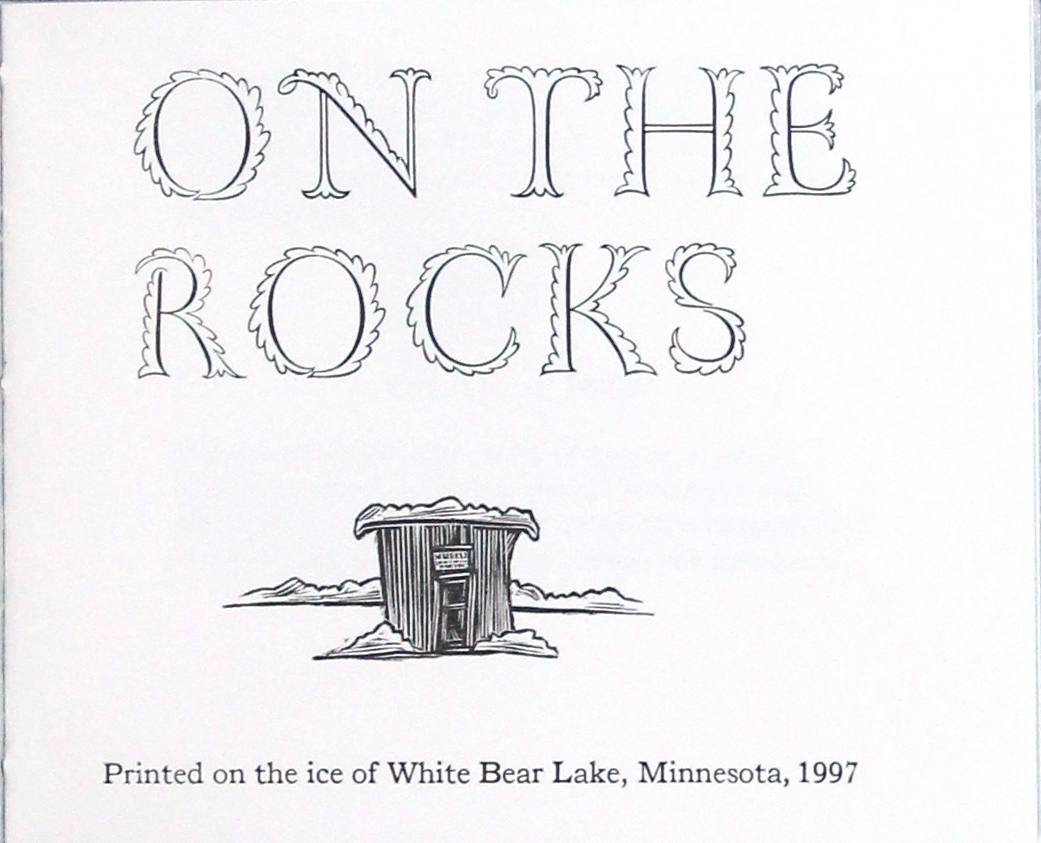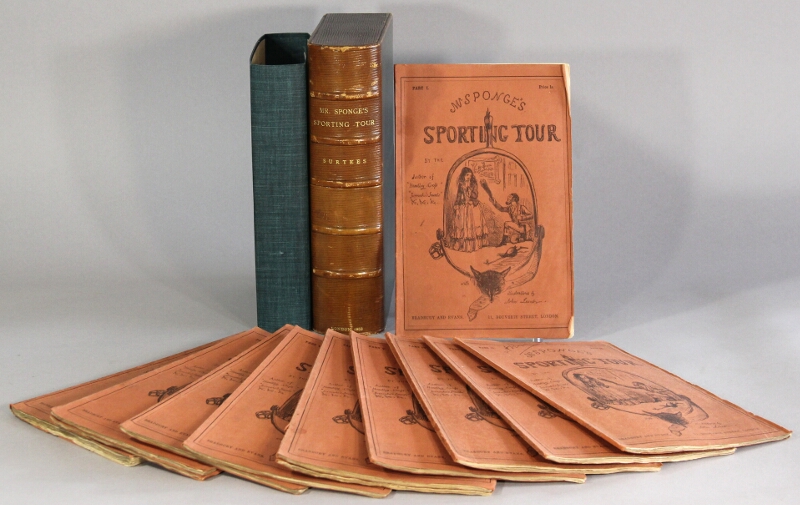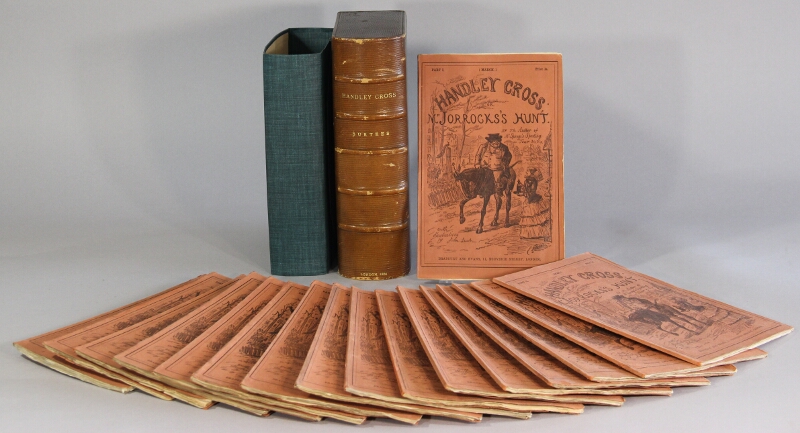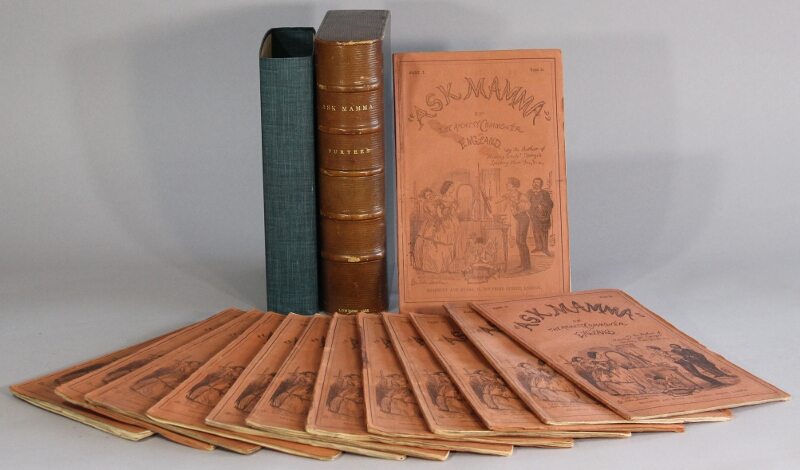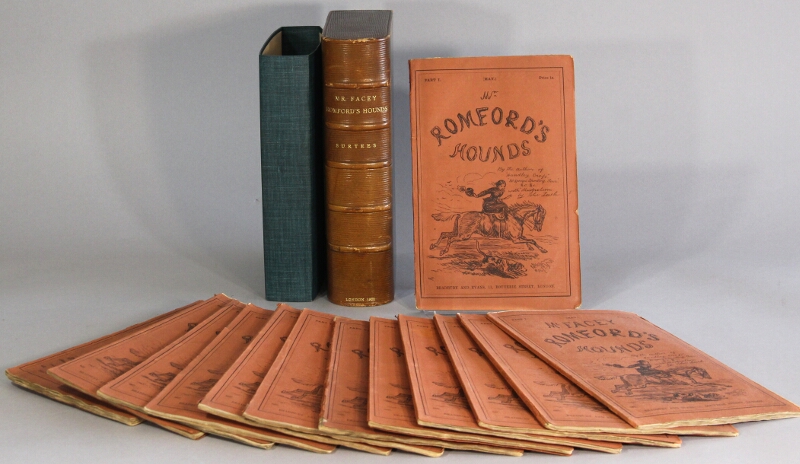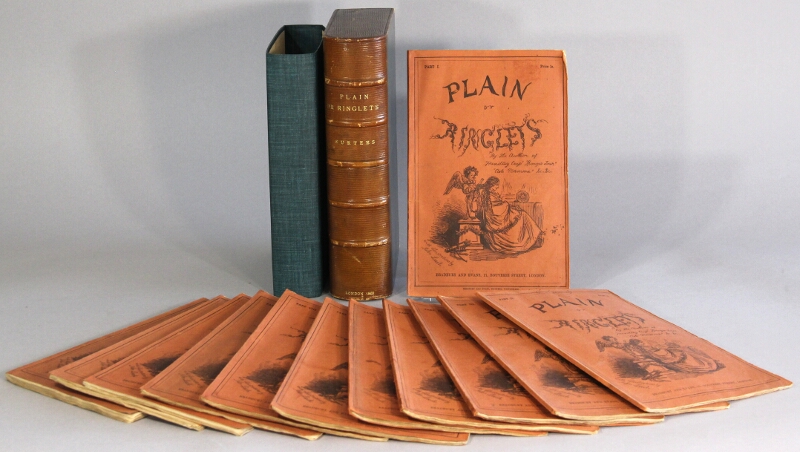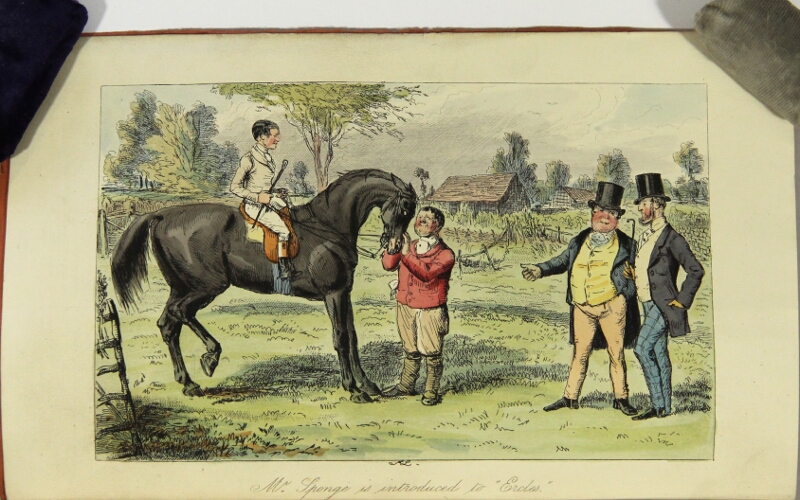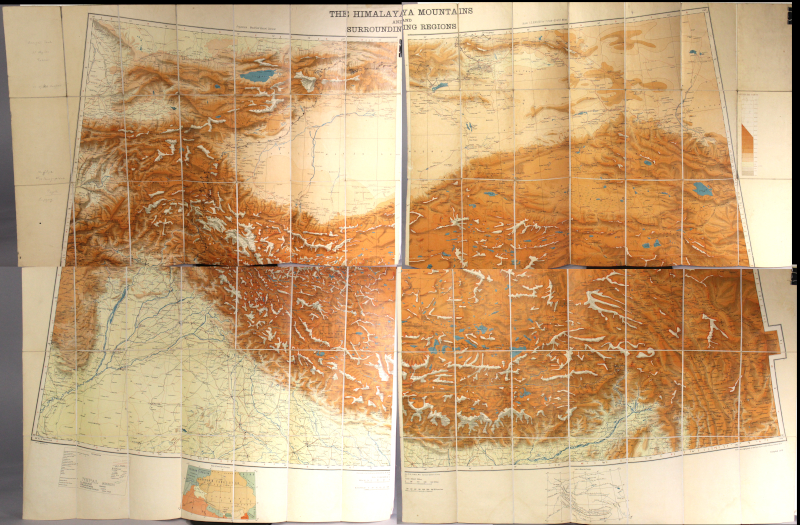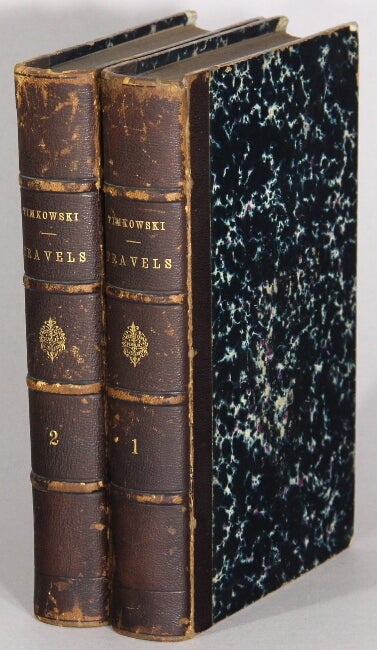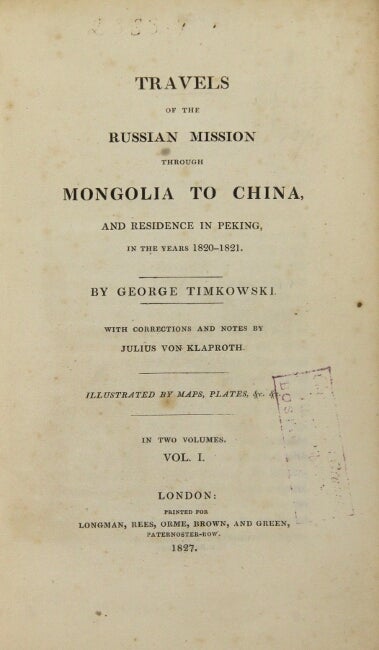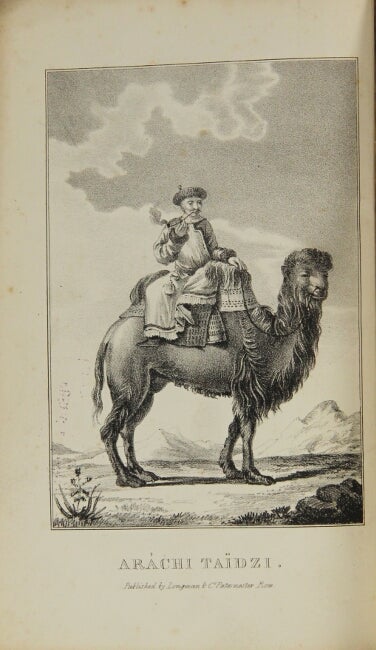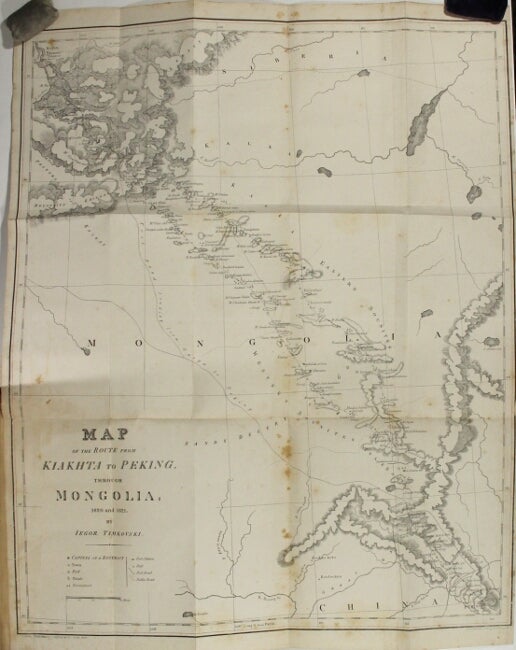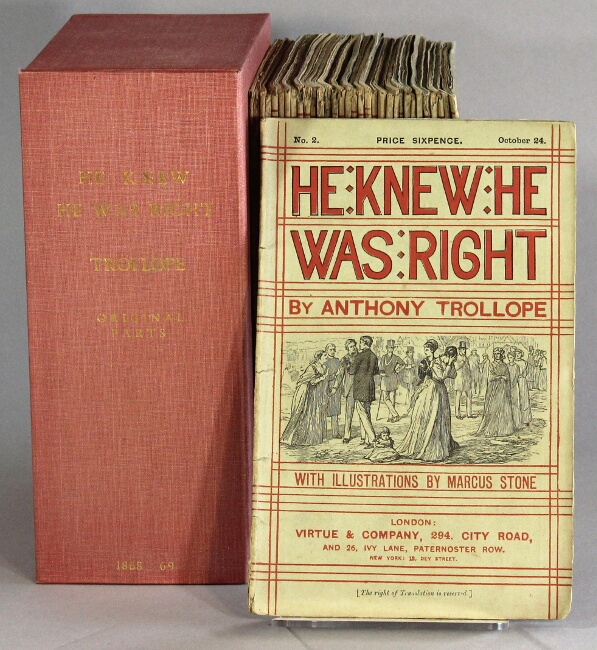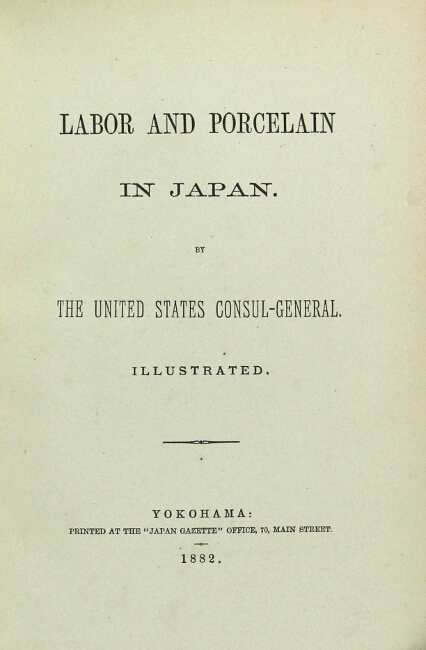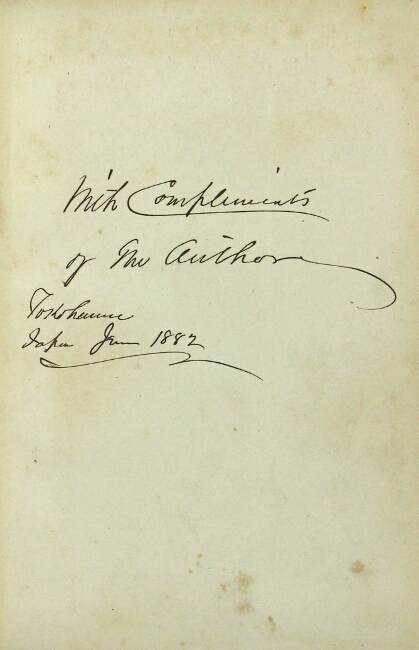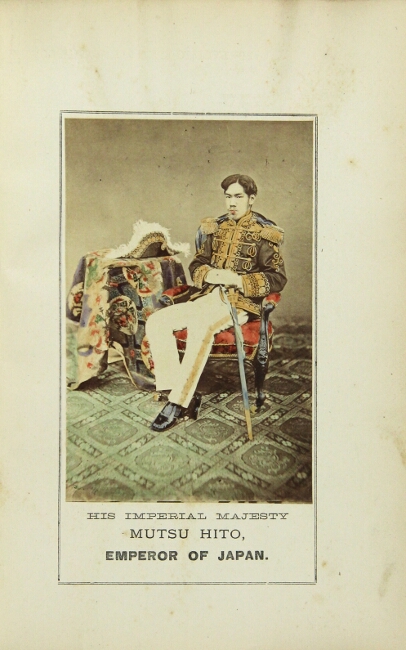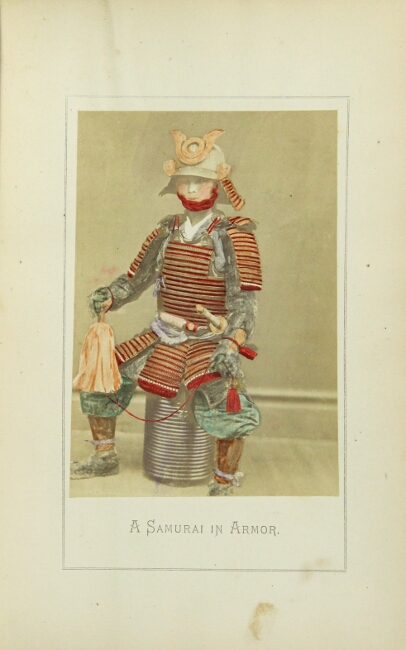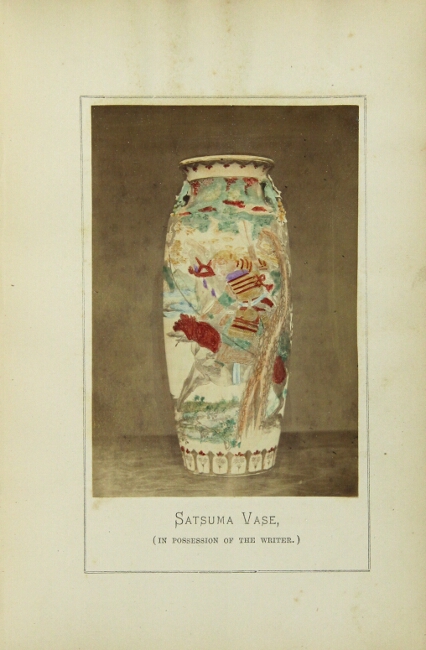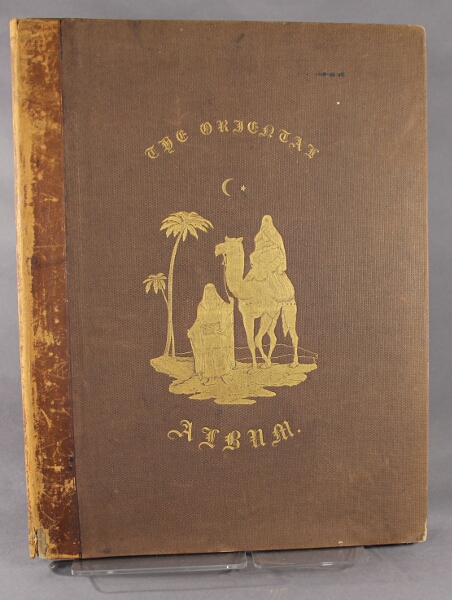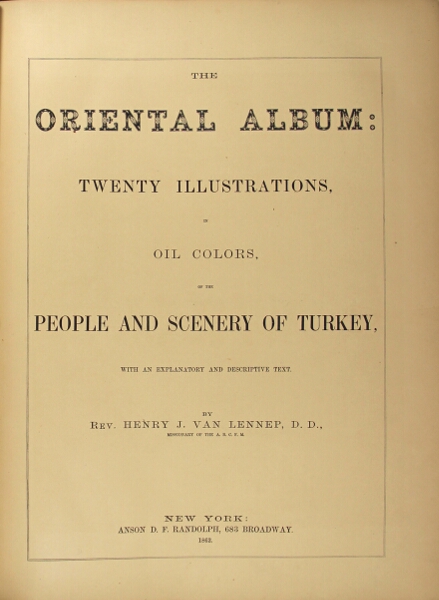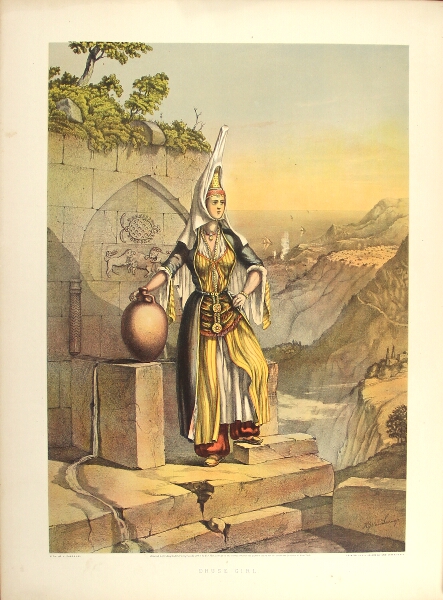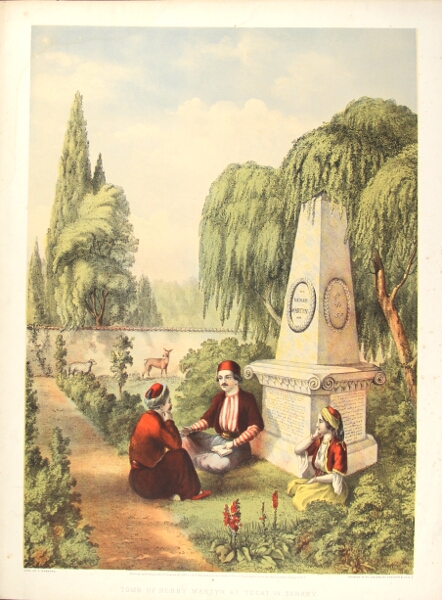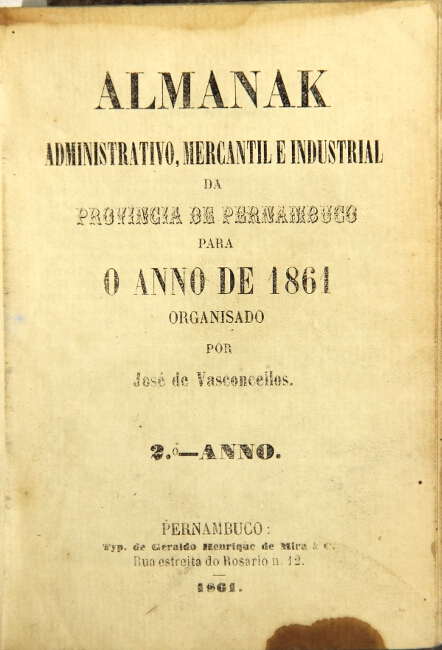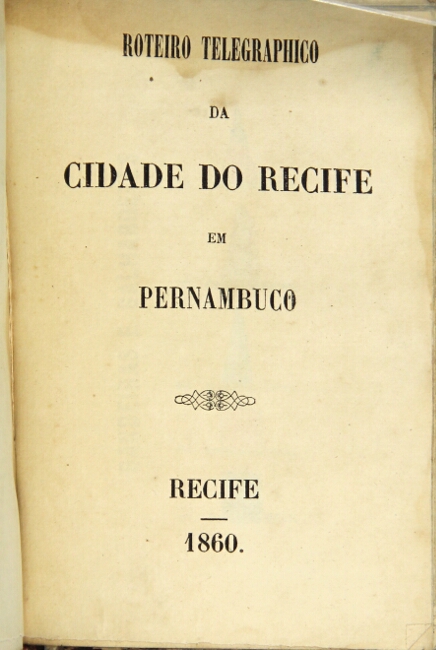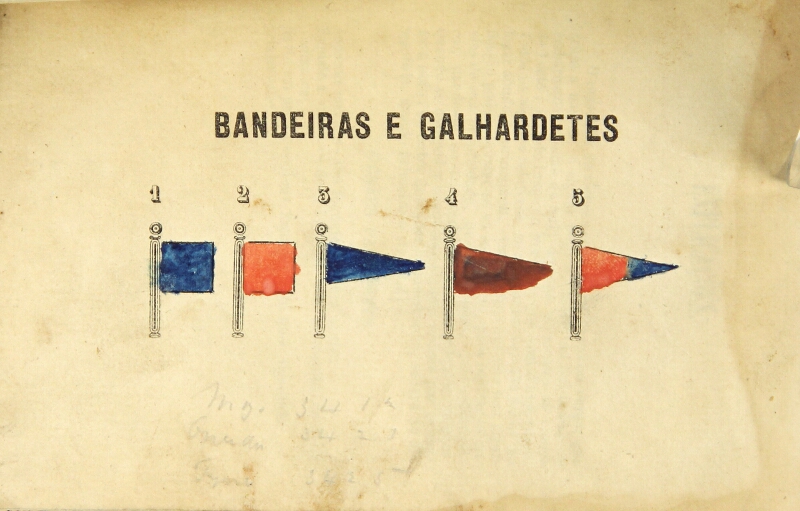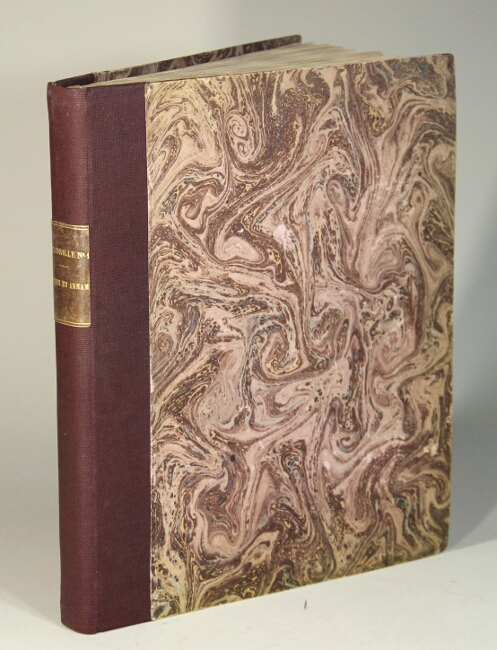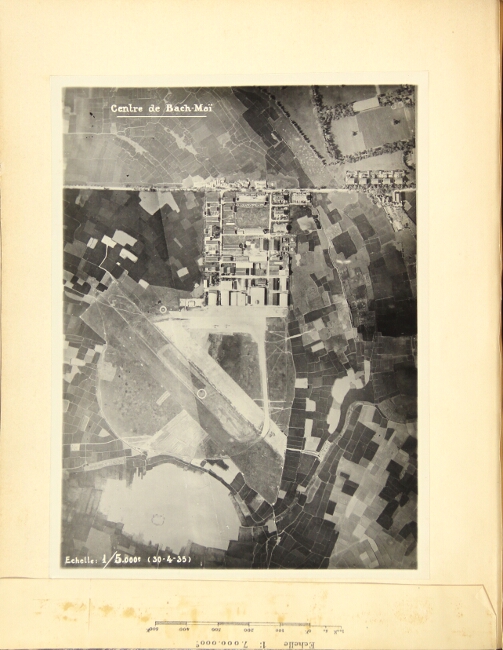A New York Book Fair Sampler
The following (and more) will be exhibited at the New York Antiquarian Book Fair which runs April 3-6 at the Park Avenue Armory at 67th Street.
Our booth number is C-2 (right up front). This is our 50th consecutive year exhibiting at this fair, having started at The Plaza Hotel in 1976.
To order call toll-free at (800) 441-0076 or 651-290-0700
or email rulon@rulon.com
or, click on the "add to cart" link to order through our website. Phone calls and emails are generally quicker.
All books are guaranteed genuine as described, and are returnable for any reason during the first week after receipt. If you are returning an item, please let us know so we can make it available to another customer.
Shipping and handling charges are extra and billed at cost.


A note on OCLC
As is now the norm, OCLC counts are tentative, at best, as we recognize that searches using different qualifiers will often turn up different results. Searches are now further complicated by the vast numbers of digital, microfilm, and even print-on-demand copies, which have polluted the database considerably, making it difficult, without numerous phone calls or emails, to determine the actual number of tangible copies. Hence, even though the counts herein have been recently checked, most all should be taken as a measure of approximation.

1. The pavilion; or, a month in Brighton. A satirical novel. By Humphrey Hedgehog, Esq. Author of “A Month in Town,” General Post Bag,” Rejected Odes,” &c. London: J. Johnston, 98, Cheapside, and 335, Oxford Street, and Sold by all Booksellers., 1817.
$4,500
First edition, 12mo, pp. [4], 239, [1]; [4], 158 [i.e., 244]; [4], 224; near fine copy in original drab paper-covered boards, brown paper shelfback, printed paper labels on spine. Bookplate of John Sparrow in volumes II and III.
An uncommon novel satirizing George IV. "Son of John and Ann Agg, he was born in Evesham. He began a colourful career as a writer, printer, bookseller, and publisher in Evesham and Bristol. The Dawn of Liberty (Bristol, 1808) seems to have been his first publication; he subsequently turned his hand to many kinds of hack writing, including fiction. Shoberl (1816) describes him as having been recently imprisoned in London for a libel.
In 1818 he emigrated to the US, living first in Philadelphia, where he published The Ocean Harp, and then in Washington DC. He married Elizabeth Blackford (1800-54) in 1820. As an official parliamentary reporter from 1825 to 1837 he recorded the debates in Congress. He died in Washington and is buried there in Rock Creek Cemetery. A collection devoted to him and his works from 1813 onwards was acquired by Duke University in 2017. The attribution of all of the pseudonymous works to Agg is still largely speculative" ("Guide to the Harold Moser Collection," David M. Rubinstein Rare Books & Manuscript Library, Duke University).
Not in Sadleir or Wolff. OCLC locates only 7 (or is it 4?) copies worldwide: Harvard, NY Public, Huntington, and the BL. Then three copies in the ever-suspicious British Library Reference Collection.

2. [Agriculture.] The rural economy of Yorkshire. Comprizing the management of landed estates, and the present practice of husbandry in the agricultural districts of that county ... In two volumes. London: printed for T. Cadell, in the Strand, 1788.
$1,250
First edition, 2 volumes, 8vo, pp. [8], 413, [1]; [4], 66 [i.e., 366], [6] index; 2 engraved folding maps; original blue paper-covered boards, cream paper shelfbacks, manuscript title on spines; spines with several old discreet repairs, but generally a very good, sound copy.
Includes a 52-page glossary of Yorkshire words, and an 11-page chapter on Yorkshire provincialisms. The Yorkshire dialect spans many regions (Leeds, Craven, Wakefield, Riding, etc.) each with variations in grammar, pronunciation, and vocabulary. In the case of this glossary, Marshall has confined himself to rural and agricultural terms lest he be overwhelmed with the enormity of the task.
"Modern agricultural historians have generally held that Marshall's works on English farming are superior to those of his rival, Arthur Young, as they are more systematically arranged and based on a more thorough knowledge of a district by personal residence there. Unlike Young, Marshall was cautious about experimentation, preferring rather to advocate the best practices approved by experienced farmers. On the other hand, he lacked Young's pithy and more readable style, and acquired fewer close contacts with the leading farming figures of the time. Marshall's career, indeed, suffered in some degree from his native bluntness and acid tongue, his pride, and his sensibility to slights. Nevertheless, from the independence of his views arose his remarkably early support for agricultural education, and his belief in the necessity of studying agriculture on a regional basis, both of which were ideas well before their time" (ODNB).

3. The Columbian dictionary of the English language: in which many new words peculiar to the United States, and many words of general use not found in any other English dictionary, are inserted ... to which is prefixed, a prosodial grammar, containing, a short dissertation on vowels and consonants. Boston: Isaiah Thomas and Ebenezer T. Andrews. Sold by them and the other booksellers in Boston: by I. Thomas, in Worcester; by Thomas, Andrews & Penniman, in Albany; and by Thomas, Andrews & Butler, in Baltimore, 1800.
$2,500
First and only edition, square 8vo, pp. iv, [5]-556 [i.e. 552 - pages 445-448 are omitted in the pagination]; original full sheep, red morocco label on spine; label slightly chipped (with partial loss to the letter 'D'), small piece (approx. 1½" x ¼") of leather missing from the top of the front joint, title page browned and with a small waterstain entering from the fore-edge, one early signature starting, modest rubbing, but in all a good and sound copy of an uncommon, early American dictionary.
With an early owner's inscription on the verso of the rear free endpaper: "John Colegrove his book bought in Greenfield October A. 1803."
This is the third American dictionary, preceded only by those of Samuel Johnson, Jr., 1798; and Johnson & John Elliott, 1800.
Alston V, 348; Evans 36792; Kennedy 6327.

4. An universal dictionary of the English language in which the terms made use of in arts and sciences are defined; the words explained ... the accents properly placed ... the parts of speech denoted; and, the spelling throughout reduced to an uniform and consistent standard : to which is prefixed, A grammar of the English language. Edinburgh: printed by Alexander Donaldson and John Reid. For A. Donaldson, and sold at his shop, 1763.
$3,200
8vo, pp. iv, [5]-20, [880], including the final advertisement leaf; full contemporary calf, joints very neatly and almost imperceptibly reinforced; a very good, sound copy of a rare English dictionary. Early ownership signature of George Peacock, 1772; James Hudson Hamsted, 1824; and James Hudson Marden, 1841. Later bookplate of Nigel Stoughton.
A single copy at the National Library of Scotland has a varying imprint (not recorded by Alston). The text sheets were also issued in a pirated edition in 1763 in two volumes, with different title pages and no Preface or final advertisement leaf, as: The New Royal and Universal Dictionary ... by J. Johnson.
Alston V, 232; ESTC locates copies at the BL, Columbia, ISU, Trinity, and Yale; OCLC adds a copy at the National Library of Wales.

5. [Arabian Nights.] Remarks on the Arabian Nights’ Entertainments; in which the origin of Sindbad’s voyages, and other oriental fictions, is particularly considered. London: printed for T. Cadell, Junior, and W. Davies, successor to Mr. Cadell, in the Strand, 1797.
$1,250
First edition, 8vo, pp. iv, 258, [2]; last two-thirds unopened; original blue paper-covered boards, cream paper shelfback, manuscript title on spine; fine copy. Top right corner of recto on front endpaper: "Chris Coates of Helperby 8. May 1934."
Richard Hole (1746-1803) was ordained in the Church of England and was later the Bishop of Exeter. "From an early age Hole wrote poetry and he continued writing during his studies. In 1789 he published his long poem ‘Arthur, or the northern enchantment’, in seven books. He was the first literary critic to dedicate a book-length essay to the Thousand and one nights to assess its merits. It was published in 1797 under the title Remarks on the Arabian nights’ entertainments; in which the origin of Sindbad’s voyages and other Oriental fictions is particularly considered.
"Hole begins with observing that the work is often depreciated as trivial and even obscene, but he subsequently argues that it deserves a place among the great pieces of literature in the world, such as Homer’s Odyssey and Iliad, and the Vedas. To support this evaluation he especially discusses the cycle of ‘Sindbad of the sea,’ to examine the motifs which resemble either similar motifs in Homer’s work (the episode of the Cyclops), or observations recorded by ancient travellers and historians. This verisimilitude in ‘Sindbad’ is used as an argument to state that the Thousand and one nights should be considered a genuine and serious literary work among the other ‘classics’" (University of Kent, Encounters with the Orient).

6. Ἀριστοφάνους Κωμῳδίαι ἐννέα / Aristophanis comoediae novem. Venice: Aldus Manutius, 1498.
$35,000
First edition, folio in eights, collating: π⁸,α-γ⁸, δ¹⁰, ε-ξ⁸, ο¹⁰, π-υ⁸, φ¹⁰, χ-Ε⁸, Ζ⁶, Η-Λ⁸, Μ⁴, Ν-Ο⁸, Π¹⁰, Ρ-Σ⁸, Τ⁶ (lacking the final T6 blank); guideletters in initial spaces; woodcut decorated headers and strapwork initials; 18th-century diced russia, later rebacking, gilt title on spine, gauffered edges, marbled endpapers; boards rubbed, bookplate of Joseph Stainton of Biggarshiells on pastedown, bookplate of book dealer Tammaro de Marinis on free endpaper, engraved bookplate of Collegium Beatae Mariae de Etona on bottom of title page, small Harvard Library blindstamp on title page, small tear at gutter of π2 neatly repaired, dampstain to bottom right corner persisting through the entire textblock with varying degrees of intensity, scattered ink spotting on χ2, woodcuts on B2 filled in with pencil leading to offsetting on facing page, dime sized stain at the signature of I1 with some permeation to neighboring leaves, single wormhole through the first 120 leaves at upper fore-edge, not affecting text; about 2 dozen pages with marginal notes, some with a little loss due to trimming, catalog record for this copy tipped in.
The editio princeps of Aristophanes, including nine of his comedies, compiled and edited by Marcus Musurus. Lysistrata was not included due to Musurus' inability to find a complete manuscript of the text in time for publication.
BMC V, IB 24470; Goff A-958; ISTC ia00958000; GW, 2333; Ahmanson-Murphy 25; Renouard 16:3.

7. Collection of 36 separate imprints concerning a legal dispute between Armand de Bethune d'Orval and Louis-Pierre-Maximilien, Marquis de Bethune, his uncle. [Paris]: various, 1729-1737.
$6,000
Folio, 684 pages total, contemporary full calf, gilt-decorated spine, joints starting, boards worn on bottom, light worming, very good. A slightly later inscription on the upper endpaper notes the acquisition of the book by a Professor of the University d'Bourges. A handful of titles contain slightly later marginalia in multiple hands, in a few cases the trimming has cut off some of the manuscript.
The death of Maximilien Henri, the 5th Duke of Sully, in 1729 appears to have triggered a fight for succession between Louis-Pierre-Maximilien, his third cousin, and Armand de Bethune d'Orval, who according to the documents was Maximilien Henri's son. If the lineage provided by Wikipedia can be trusted, it appears that Armand de Bethune d'Orval lost his case and the title was given to Louis-Pierre-Maximilien after some 6 years of legal wrangling.
Also bound in are three items concerning the title of Duke of Richelieu, which was possibly included as a comparable, as that title was passed from a Cardinal to his great nephew.
Items included, listed by drop title, are:
- Donation portant substitution faite par Messire Maximilien de Bethune, Duc de Sully, au profit de Messire Maximilien de Bethune, Marquis de Rosny, & a ses Descendans. Du 27 Mars 1609. Pp 4.
- Donation entre-vifs, portant Substitution, du 12 Juin 1610. pp. 14
- Extrait des registres de parlement [1610]. A prais, de l'imprimerie d D. Jollet, au bout du Pont. S. Michel pp. 27, [1].
- Edit du roy, portant reglement general pour les Duchez & Pairies. Donne a Marly a mois de May 1711. Registre en parlement le 21 May 1711. pp. 3, [1].
- Premier memoire pour armand de Bethune D'orval. Contre Louis-Pierre Maximilien, Marquis de Bethune. Paris: chez Pierre Simon, 1729. pp. 11, [1];
- Second memoire, servant de Reponse au memoire du Marquis de Bethune. Pour Armand de Bethune D'Orval. Contre Louis-Pierre-Maximilien, Marquis de Bethune. Paris: chez Pierre Simon, 1729. pp. 22.
- Reponse De Louis-Pierre-Maximilien de Bethune, Duc de Sully, …. Au second memoire presente au Roy par Messire Armand de Bethune D'Orval...L'Imprimerie de Ph. Nic. Lottin, 1729. pp. 9, [1].
- Refutation du dernier memoire de Messire Armand De Bethune Compte D'Orval, descendu du second Mariage de Francois de Bethune Comte D'Orval avec Anne D'Harville. Paris: Ph. Nic. Lottin, 1729. pp. 14.
- Troisieme memoire, Servant de Reponse aux deux derniers Memoires du Marquis de Bethune, dont l'un intitule, Refutation du dernier Memoire de Messire Armand de Bethune d'Orval. Paris: Pierre Simon, 1729. Pp. 20.
- Reponse du Duc de Sully au troisieme memoire du Comte D'Orval. Ph. N. Lottin, 1729. Pp. 17, [1].
- Sommaire pour Armand de Bethune, Comte d'Orval contre Louis Pierre Maximilien, Marquis de Bethune. Paulus du Mesnil, 1729. Pp. 11, [1];
- Reponse a l'imprime du Comte d'Orval, intitule sommaire, pour le Duc de Sully. Ph. Nic. Lottin, 1729. Pp. 4.
- Reponse a l'imprime du Comte d'Orval, intitule: Sommaire pour le Duc de Sully. Observations sur cette reponse pour le comte d'Orval. Paulus-Du-Mesnil, 1729. Pp. 12.
- Reponse generale aux quatre memoires que le Comte d'Orval vient d'ajouter a cinq qui avoient precede. Ph. N. Lottin, 1729. Pp. 20.
- Observations pour Louis-Pierre-Maximilien de Bethune, Duc de Sully, chef du nom, surnom & armes de la Maison de Bethune. Sur le dernier memoire du Comte d'Orval, intitule objections sur la pairie. [Paris]: V. Jollet & J. Lamesle. Pp. 8.
- Sommaire pour Louis-Pierre-Maximilien de Bethune, Duc de Sully... contre Messire Armand de Bethune, Comte d'Orval. [Paris]: V. Jollet & J. Lamesle. Pp. 2.
- Arrest du conseil destat du roy. Du13 Mars 1730. Extrait des registres du conseil D'estat. Ph. Nic. Lottin, 1730. Pp. 3, [1].
- Extrait des registres du Conseil d'Etat. [Paris]: J. Lamesle, 1731. Pp. 4.
- “Henry par la Grace de Dieu, … “ Transcript of a letter to King Henry from “Bernard” apparently concerning a contradictory judgment of some sort. The original dated 26 September, 1598. This transcript published contemporary with the rest of the material in the group. Pp. 3, [1].
- Transcript of a contract reading in part: “La terre et seigneurie ou souveraintete de boisbelle, consistant en bourg et villages, terres labourables, prez, bois, etangs, cens, rentes, vassaux, arrieres-vassaux et en toute justice, et autres appartenances et dependances generalement quelconques de ladite terre, seigneurie ou souverainete de boisbelle assise pres du pays de Berry” Pp. 4. Dated 1645, 26 December.
- Lettres et declaration des droits de la souverainete & principaute d'Enrichemont & Boisbelle... signed in the text, Herbin (small folio) text dated 5 July, 1664, imprint c. 1731. Pp. 4.
- Phelyppeaux. Extrait des registres du Conseil d'Estat. [Paris]: J. Lamesle, Aug 22, 1730. Pp. 3, [1].
- Memoire pour Lois Pierre Maximilien de Bethune, Duc de Sully, Prince Souverain de Boisbelle, et Henrichemont, Contre Armand de Bethune, Comte d'Orval. [Paris]: Ph. Nic. Lottin, 1731. Pp. 46.
- Premier memoire pour Armand de Bethune, Comte d'Orval. Contre Louis-Pierre-Maximilien de Bethune, Duc du Sully. [Paris]: Paulus-du-Mesnil, 1731. Pp. 11, [1] (Genealogy).
- Memoire pour Armand de Bethune Comte d'Orval, Prince Souverain de Boisbelle & Henrychemont. Contre Louis-Pierre-Maximilien de Bethune Duc de Sully, Pair de France. Paris: Pierre Simon, 1732. Pp. 49, [1].
- Second memoire pour Louis-Pierre-Maximilien de Bethune Duc de Sully, Prince Souverain de Boisbelle & Henrichemont. Contre Armand de Bethune, Comte d'Orval. [Paris]: Ph. Nic. Lottin, 1733. Pp. 76.
- Second memoire pour Armand de Bethune, Comte d'Orval, Prince Souverain de Boisbelle & Henrichemont. Contre Louis-Pierre-Maximilien de Bethune, Duc de Sully, Pair de France. Paris: Pierre Simon, 1734. Pp. 44.
- Troisieme memoire Pour le Duc de Sully, Prince Souverain de Boisbelle & Henrichemont. Contenant des observations sur le second memoire du Comte d'Orval. [Paris]: Knapen, 1734. Pp. 44.
- Troisieme memoire pour le Comte d'Orval. Servant de reponse au III memoire du Duc de Sully, contenant ses observations. [Paris]: Pierre Simon, 1734. Pp. 36.
- Quatrieme memoire pour le Duc de Sully, Prince Souverain de Boisbell & Henrichemont. Servant de reponse a celui qui est intitule: Troisieme memoire du Comte d'Orval, & qui est pourtant le quatrieme. [Paris]: Knapen, 1734. Pp. 36.
- Ive. Memoire pour le Comte d'Orval. Servant de reponse au quatrieme memoire du Duc de Sully, & de contredits contre sa production nouvelle du 14. Octobre 1734. Paris: Pierre Simon, 1734. Pp. 20.
- Requeste de Monsieur le Comte d'Orval, au Grand Conseil... Signed in the text, Passelaigue, Gressier. [16 March, 1735]. Pp. 3, [1].
- Sur la Requete presentee au Roy etant en son Conseil par le Duc de Sully, Pair de France... Signed in the text, Duporteau, Chaulnac & le Page Avocats. 17 Mars 1735. Pp. 7, [1].
- Memoire, pour M. le Duc de Richelieu, heritier substitue de M. le Cardinal de Richelieu son grand-oncle, damandeur. Contre M. de Chubere, conseiller honoraire au Parlement; M. Payen, Maitre des comptes [et al.] … Defendeurs. [Paris]: Veuve d'Andre Knapen, 1737. Pp. 31, [1].
- Memoire, pour Messire Claude-Louis de Chubere, conseiller honoraire au Parlement de Paris; Messire Charles Urson, conseiller au Parlement & Consorts [et al.]. Contre M. le Duc de Richelieu, Demandeur. Et M. le Duc d'Orleans, Intervenant. [Paris]: Charles Osmont, n.d. Pp. 23, [1].
- Second memoire pour Messire Guillaume-Louis de Chubere, conseiller honoraire au Parelement de Paris, & Consorts, Defendeurs. Contre M. le Duc de Riechelieu, Demandeur. Et M. le Duc d'Orleans, Intervenant. [Paris]: Charles Osmont, n.d. Pp. 24.

8. [Bible in English.] The Holy Bible, containing the Old and New Testaments: newly translated out of original tongues: and with the former translations diligently repaired and revised... London: Mark Baskett ... and by the assigns of Robert Baskett, 1767.
$11,500
Large paper copy (measuring nearly 5 centimeters larger than that cited in Darlow & Moule), large 4to, 1 volume expanded to 2, unpaginated; sectional title page for the N.T.; contemporary full red goatskin, elaborate borders on covers incorporating a Greek key design enclosing lilies with birds and vases with flowers, an with a central monogram "M*B" on an oval green morocco onlay, surrounded by a black morocco onlay tooled with cherubs, the whole surrounded by a flame tool, smooth spines richly gilt and gilt-lettered direct, a.e.g.; light overall rubbing, slight sunning of the spines, but generally a very good, sound, handsome, and sumptuous binding.
Facing the first leaf in each volume is the following inscription: This Book was presented to me by my Son in Law Coll. Stephen Delancy and at my decease I bequeath it to my beloved grand daughter Miss Phila Delancy as witness my hand, Maria Barclay. New York, 15 August, 1786."
The Delancys were a prominent New York loyalist family. Stephen Delancy remained in New York throughout the Revolution but left for Nova Scotia in 1783. Presumably, he commissioned these bindings from England at some prior date (cf. his mother-in-law's initials on the central onlays). The binder has not been identified, but it is similar to a binding described in Maggs catalogue 966, item 154 (the onlay decoration being almost identical).
Also included beneath the above inscription is a further one, dated 1834, from Phila Delancy to her nephew, William de Lancey Lawson.
Darlow and Moule mention an engraved title page for those on regular paper, but no such mention in the Darlow & Moule citation for the L.P. copy, nor, for that matter, in any of the OCLC records.
Darlow & Moule 1181.

9. [Bible in German.] Biblia, das ist die ganze gottliche hielige Schrift alten und neuen Testaments nach der deutschen Uebersetzung D. Martin Luthers. Germantown: Christopher Saur, 1776.
$4,200
Thick 4to, pp. [4], 992, 277, [3]; ex-AAS, with their engraved bookplate on the front pastedown; title page cleaned and backed, the title and second leaf with neat repairs to the fore-margin; moderate toning and foxing throughout, and a bit of occasional waterstaining; full contemporary calf, black morocco label on spine; rear board replaced, and the whole rebacked using the original front board and spine; in spite of the restorations, a pretty nice copy, lacking the original clasps.
A pencil note on the flyleaf reads: "Purchased Anderson Auction Co,. Sale Oct. 13, 1909." And a corroborating notation in ink on an old bookseller's catalogue cutting pasted in under the bookplate: "Geo. Matthews sale 10/13/09 Anderson Gall."
Saur's famed "Gun-Wad Bible," so named because the remaining unbound sheets were used for gun-wadding when the British entered Philadelphia during the American Revolution.
The first Bible printed in the Western Hemisphere was Eliot's Indian Bible of 1663. The first Bible printed in the Western Hemisphere in a European language was Christopher Saur's German Bible, published in 1743; it was reprinted in 1763, and again in that fateful year, 1776. "This edition consisted of 3000 copies. The Revolutionary War broke out about the time it was issued, and after the Battle of Germantown, Saur, to preserve the residue of his property, and in the supposition that American independence could not be maintained, went into Philadelphia and resided there whilst the British held possession of that city. His estate was subsequently confiscated in consequence, and his books sold. The principle part of this third edition of the Germantown Bible in sheets were thus destroyed, having been used for cartridge paper" (O'Callaghan, p. 29).
Wright, Early Bibles of America, pp. 28-54; Darlow & Moule 4240; Evans 14663; Hildeburn 3336; Bötte & Tannhof 475; Sabin 5194.

10. [Bible in Hawaiian.] Ka Palapala Hemolele a Iehova ko kakou akua o ke Kauoha kahiko a me ke Kauoha hou i unuhiia mailoko mai o na olelo kahiko Paiia no ko Amerika poe hoolaha Baibala. Oahu & Honolulu: Na na misionari i pai, 1843.
$6,500
First octavo edition, and the first one-volume edition of the Bible in Hawaiian. 8vo, pp. 1451, [1]; original full Hawaiian sheep, black morocco label lettered in gilt on spine; vertical crease in spine, small chips at spine ends, the whole moderately scuffed, old Bowdoin accession label at base of spine, upper joint cracked at the top. Contained in a new brown cloth clamshell box.
Ex-Athenian Society of Bowdoin College, with the Society's bookplate, a college "withdrawn" stamp on the front pastedown, and the Soiciety's oval stamp in the upper corner of the title page. According to the bookplate the Bible was presented to the college by Bowdoin alum Rev. Daniel Dole. Dole and his wife arrived in Honolulu as missionaries in 1841. Dole was principal of the Punahou School for the children of missionaries there, and after the overthrow of the Kingdom of Hawaii, Dole's son Sanford became president of the Republic of Hawaii, and the first governor of the Territory of Hawaii. Sanford's cousin James developed the pineapple industry in Hawaii and the family wielded enormous influence in Hawaiian politics.
According to Forbes, this is the first edition of the first complete Bible in Hawaiian, with the Old and New Testaments together in a single volume. There was an earlier printing of the New Testament only in three 12mo volumes in 1838, followed by the Old Testament two years later. "The text is generally printed in double columns divided by a vertical rule. The Books of Job ... Psalms, Proverbs, the Song of Solomon, much of Isaiah, and Jeremiah are in single-column numbered verse form. The New Testament, beginning on page (1130) has is own title page, Ke Kauoha hou a ko kakou haku e ola i Iesu Kristo..." Both Testaments have separate imprints, as issued, the Old Testament bearing the Oahu Mission Press imprint while the title of the New Testament bears a Honolulu imprint. The verso of the Old Testament title contains the imprint "Ka Lua O Ke Pai Ana" ("the second printing"), which refers to the 12mo printing of the entire Old Testament in 1840.
OCLC locates only 9 copies: N.Y. Public, Huntington, Yale, Smithsonian, Harvard, American Philosophical Society, Brigham Young, the National Library of South Africa, and the Bibliotheque nationale). To these we can add the AAS, Hawaiian Historical, the Bishop Museum Library, the National Library of Australia, Punahou School; University of Hawaii, the Mitchell Library in Australia, and the Alexander Turnbull Library in New Zealand. Copies have appeared at auction infrequently, seven in all (according to BookHub), and four of them sold 1918 or earlier. The other three were sold in 2018, 1983, and 1982. Its relative scarcity may be explained by the fact that only 10,000 copies were printed, but three years after publication 9,000 copies were still on hand. In Forbes's words it did "not appear to be a best-seller."
Darlow and Moule 5066; Forbes 1416; Judd 265.

11. [Bible, N.T., Gospels.] The Four Gospels of the Lord Jesus Christ according to the Authorized Version of King James I. With decorations by Eric Gill. [Waltham Saint Lawrence, Berkshire]: Golden Cockerel Press, 1931.
$15,000
Edition limited to 500 copies (this, no.153 of 488 printed on Batchelor hand-made paper; 12 copies were printed on vellum); folio, pp. [2], 268, [4]; 65 wood-engraved initial letters and illustrations by Eric Gill; printed by Robert and Moira Gibbings in Golden Cockerel type (designed by Gill); original half pigskin over buckram boards by Sangorski & Sutcliffe, t.e.g.; light rubbing at top and bottom of spine, the boards a trifle soiled; all else fine, sound, and clean. Bookseller's ticket of Philip P. Dushnes on rear pastedown. Lacking the original slipcase but preserved in a half red calf clamshell box, gilt lettering and decoration on spine.
"Conceived in the fruitful mind of Robert Gibbings, this is the Golden Cockerel book usually compared with the Doves Bible and the Kelmscott Chaucer. A flower among the best products of English romantic genius, it is also surely, thanks to its illustrator, Eric Gill, the book among all books in which Roman type has been best mated with any kind of illustration" (Chanticleer).
Eric Gill's biographer, Fiona MacCarthy, describes The Four Gospels as "the culmination of (Gill's) work for the Golden Cockerel Press and ... the example which experts and collectors ... have always viewed as the height of his achievement. To describe it as a series of engraved initial letters for the Bible text, though strictly correct, gives little idea of the richness and complexity of Gill's own contribution. The decorative letters do not just embellish the text, they play upon it and develop it, to the point at which distinctions are blurred" (Eric Gill: A Lover's Quest for Art and God, pp.243-234).
Chanticleer 78; Gill 285; A Century for a Century 26.

12. [Bible, New Testament in Chinese, Gospels, in Ningpo Colloquial.] Mô-t'æ djün foh-ing Shü = [Gospel of Matthew]. [Ningpo: American Bible Society, 1853].
$12,500
8vo, pp. 223, [1]; fore-edges of the first 40 or so leaves with short tears and occasional minor loss, old pressure stamp of the Board of Foreign Missions of the Presbyterian Church at the top of the first leaf. In roman character, without a title page, as issued, and printed from woodblocks, in large type, on one side of the paper only, and then folded. Cambridge only in OCLC. Darlow and Moule 2902; Spillett, Chinese Scriptures, 818.
Bound with: Ah-lah kyiu-cü Yiæ-su-go sing-yi-tsiao shü: Mô-k'o djün foh-ing Shü = [Gospel of Mark], Nying-po, [American Bible Society], 1854. 8vo, pp. [2], 96. In roman character, with a title page dated 1854, and printed from woodblocks, in large type, on one side of the paper only, and then folded. Not found in OCLC. Darlow and Moule 2905 for the 1857 edition; Spillett, Chinese Scriptures, 821.
Bound with: Ah-lah kyiu-cü Yiæ-su-go sing-yi-tsiao shu. Lu-kyüô djün foh-ing Shü = [Gospel of Luke], Nying-po, 1853. 8vo, pp. [2], 170. In roman character, with a title page dated 1853, and printed from woodblocks, in large type, on one side of the paper only, and then folded. Cambridge only in OCLC notes 176 pages (likely an error). Darlow and Moule 2903; Spillett, Chinese Scriptures, 819.
Bound with: Ah-lah kyiu-cü Yiæ-su-go sing-yi-tsiao shu. Iah-'en djün foh-ing Shü = [Gospel of John], Ning-po, 1853. 8vo, pp. [2], 168. In roman character, with a title page dated 1853, and printed from woodblocks, in large type, on one side of the paper only, and then folded. Cambridge only in OCLC. Darlow and Moule 2904. Spillett, Chinese Scriptures, 820.
With: Iah-en Sia-peh Cong Kong-we Di-Ih Fong Shu-sing / Pao-lo sia-peh Fi-lih-pi Nying-go Shū-sing [drop titles] = [The first Epistle of John and the Epistle to the Philippians.] N.p., n.d. [Ning-po, 1856?]. Pp. [44]; without title page or foliation, as issued, and printed from woodblocks, in large type, on one side of the paper only, and then folded. Cambridge only in OCLC. Not found in Darlow & Moule. Spillett, Chinese Scriptures, 823.
All in Ningpo Colloquial, the Wu dialect spoken in the Ningpo area of N.E. Chekiang.
Spillett, Chinese Scriptures, pp. 174-75: "Translated by William Armstrong Russell (consecrated Bishop in Mid-China in 1872, CMS missionary from 1848) , and Divie Bethune McCartee, medical missionary of the APM from 1844; and revised by a committee of Ningpo missionaries. The translators were afterwards joined by William A. P. Martin, and Henry Van Yleck Rankin. Work was commenced on the NT chiefly by W. A. Russell and H. V. Rankin. The first edition of Luke appeared in 1852, Matthew and John in 1853 (Nos. 818 and 820), Mark in 1854, Acts in 1855 followed by the other books, the whole NT except Revelation being completed by 1861.
"The system of romanization, said to have been devised by W. A. P. Martin, R. H. Cobbold and F. F. Gough, was used here for the first time in a Chinese colloquial."

13. Исторія Тибета и Хухунора съ 2282 года до Р. Х. до 1227 года по Р. Х. ... Переведена съ Китайскаго Монахомъ І. Бичуринымъ. / Istoriia Tibeta... [= History of Tibet and Khukhunor . . . translated from the Chinese]. St. Petersburg: Academy of Sciences, 1833.
$6,500
First edition, 2 volumes, 8vo, pp. xxxi, [1], 258; ix (i.e., x), 259, [1]; engraved title page in each volume, folding engraved map hand-colored in outline (very short tear entering from the guard); contemporary half calf over marbled boards; the binding is rubbed, but sound, and internally clean.
Nikita Yakovlevich Bichurin (1777-1853) was an outstanding Russian sinologist and corresponding member of the Russian Academy of Sciences. Better known under his archimandrite monastic name Hyacinth, or Iakinf, he was one of the founding fathers of Russian Sinology. A monk from 1800, Iakinf was appointed in 1807 as the superior of the Orthodox mission in Peking (Bejjing) and spent 14 years there. He translated the Orthodox liturgy and compiled a catechism in Chinese. More scholar than monk by nature, Iakinf immersed himself in Chinese studies. He devoted most of his time to compiling dictionaries, translating Chinese classics, and writing original works on Chinese history, geography, and religion. Upon his return to Russia, he lived in the Valaam monastery and in the St. Petersburg Alexander Nevsky Lavra (from 1826), where he wrote books on sinology that were translated into many languages.
Cordier, Sinica 2880-2881; Lust 200: "History of Tibet and the Kokonor region from B.C. 2282 to A.D. 1227."
The book is rare. We find copies (under different spellings) at Yale, N.Y. Public, The Field Museum, University of Washington, Oxford, SOAS Library, and the Staatsbibliothek in Berlin. The Erfurt and Bayerische Staatsbibliothek libraries apparently hold single volumes only.

14. Ismael; an oriental tale. With other poems. . . Written between the ages of thirteen and fifteen. London: printed for Hatchard and Son, No. 187, Piccadilly [by J. Bretelli, Rupert Street, Haymarket], 1820.
$2,000
First edition, 12mo, pp. xi, [5], 197, [1], [2] Hatchard ads; largely unopened; original blue paper-covered boards, printed paper label on spine; quarter-size gouge in the paper on the lower board, a few small cracks and chips, otherwise very good and sound. Bookplate of J. O. Edwards.
The author's first book published when he was just seventeen.

15. Zanzibar; city, island, and coast. London: Tinsley Brothers, 1872.
$6,500
First edition, first issue binding, 2 volumes, 8vo, pp. xii, [2], 503, [1]; vi, [2], 519, [1]; folding map highlighted in blue, 11 wood-engraved plates (including 2 frontispieces), 4 full-p. sketch maps; original chocolate brown cloth, gilt vignette on upper covers, both volumes neatly rebacked with original spines laid down; previous owners' bookplates, pertinent newspaper clippings tipped into both volumes at endpaper and half-title; a good, sound copy.
Zanzibar is Burton's account of the country and its natural history, and Burton's and Speke's various journeys 1857-59 in the lake regions of east Africa, including the discoveries of Lakes Victoria and Tanganyika. The final chapter is Burton's memorial of Speke with whom he had many points of divergence regarding the geographical discoveries at Victoria and the Nile basin.
Spink Catalogue, no. 49; Penzer, pp. 88-89; Casada 72: "It is, in my opinion, among the most important of his African-related studies."

16. The corsair, a tale. London: printed by Thomas Davison, Whitefriars, for John Murray, Albemarle-Street, 1814.
$1,500
Fifth edition (printed the same year as the first edition, but with the 6 poems removed from the second issue of the second edition reappearing in the fourth edition, as well as here); 8vo, pp. xi, [1], 108, [4] ads; original plain brown wrappers, neatly rebacked, endpapers renewed; small chips from the extremities but overall very good, sound and clean. Early ownership signature on upper cover, half title and title page of "W. Wilberforce." There are also a half-dozen or so passages marked with pencil in the margins. Contained in a blue cloth slipcase lettered in gilt on spine.
William Wilberforce (1759-1833) is the well-known abolitionist and politician. "In 1787, Wilberforce came into contact with Thomas Clarkson and a group of activists against the slave trade, including Granville Sharp, Hannah More and Charles Middleton. They persuaded Wilberforce to take on the cause of abolition, and he became a leading English abolitionist. He headed the parliamentary campaign against the British slave trade for 20 years until the passage of the Slave Trade Act of 1807" (Wikipedia).
Books from Wilberforce's library are rare on the market, only 2 having appeared at auction in the last 100 years.
Wise I, p. 97.

17. Catullus. Tibullus. Propetius [sic]. Venetiis: in aedibus Aldi. Mense Ianvario, 1502.
$15,000
The first Aldine edition, first state of title, with corrected title on final leaf; 8vo (approx. 155 x 92 mm); [152] leaves; collating: A-E⁸ F⁴ A-D⁸ E⁴ a-i⁸; initial spaces with guide-letters; contemporary limp parchment, the whole interleaved; and extensively annotated throughout in Greek and Latin in a 16th century hand. Of the 152 printed leaves, fewer than a dozen are free of annotation, and the interleaves and endpapers are also excessively annotated. A signature appears on the rear pastedown of Nichlaus Hegues (Heguns?) at the Sign of the Aesculapian - Aesculapius, the Greco-Roman god of medicine. The "Sign of the Aesculapian" refers to the staff entwined with a snake, which is the symbol of the Greek god Asclepius, the deity of healing and medicine. Our annotator Nichlaus, one might speculate, was a man of medicine.
The edition of 1502 was compiled by Aldus and Aavantius; the former wrote the preface, the latter the epistle, at the end of Catullus, to Marino Sanudo, a Venetian nobleman’ (Dibdin).
Adams C-1137; BM STC Italian, 160; Dibdin (1827), p. 374; Renouard, p. 39:16; Ahmanson-Murphy 52.

18. [Caxton, William.] An original leaf from the Chronicles of England printed by William Caxton at Westminster in 1480. London: William H. Robinson Limited, 1933.
$4,500
Edition limited to 100 copies of which the is no. 20; with a single original leaf from the 1480 edition of the Chronicles of England, 4to, signed P2, rubricated text with a Lombard capital T on verso in red; square-inch sized chip to lower edge, not affecting text, leaf soiled with some spotting in margins and one small wormhole; the leaf encased in a quarto "bibliographical note," pp. 7, [1];
accompanied by: Jackson, Holbrook. William Caxton, an essay. London: William H. Robinson Limited, 1933. Small 4to, pp. 14, [2]; both in printed gray wrappers and enclosed in original pigskin portfolio, the portfolio with a chipped spine and hinges starting.
"In addition to interest as one of the earliest English printed books [the Chronicle] is the first popular history of this country to appear from the press."

19. The history and adventures of the renowned Don Quixote: translated from the Spanish of Miguel de Cervantes Saavedro. To which is prefixed, some account of the author’s life. By T. Smollett, M.D. A new edition in four volumes, embellished with copperplates. Edinburgh: printed for P. Hill, J. Ogle, and Doig and Stirling, Edinburgh; and H. Mozley, Derby [by Alex. Lawrie], 1815.
$2,000
4 volumes, 12mo, pp. [4], xxxix, [1], 294; [2], 312; xi, [1], 335, [1]; [2], 315, [1]; 16 engraved plates; original blue-green paper-covered boards (the color of the boards varying slightly), brown paper shelfbacks, titles and spine decorations printed direct (including plate count and price); light occasional foxing, boards a little soiled and there's some light chipping, but on the whole a very good set. Volumes II-IV are largely unopened.
In this set, the plates are all bound in as part of the front matter, and have yet to be put into their proper place in the text.
Surprisingly uncommon. OCLC locates 13 worldwide (including 3 at the National Library of Scotland), 7 in the U.S.: Wesleyan, Northwestern, LC, Dartmouth, SE Oklahoma State, Southern Baptist Theological Seminary, and the A. K. Smiley Public Library in Redlands, CA.

20. Two Lamaistic pantheons. Edited with introduction and indexes ... from material collected by the late Baron A. Staël-Holstein. Cambridge: Harvard University Press, 1937.
$1,250
First edition, tall 8vo, 2 volumes, pp. xxiv, 169, [1]; [8], 314; 1147 illustrations in volume II; fine set in fine, unclipped dust jackets. Issued as volumes III and IV in the Harvard-Yenching Institute Monograph Series. Small ownership stamp on front free endpaper of each volume of Charles A. Muses.
Charles Arthur Muses (1919-2000) "was a mathematician, cyberneticist and esoteric philosopher who wrote articles and books under various pseudonyms ... He founded the Lion Path, a shamanistic movement [and] held unusual and controversial views relating to mathematics, physics, philosophy, and many other fields" (Wikipedia).

21. Dictionary of love. In which is contained, the explanation of most of the terms used in that language.. Dublin: printed in the year, 1754.
$4,000
First Dublin edition, and second edition overall; 16mo, pp. xii, [204]; contemporary and likely original calf-backed boards, red morocco label; joints cracked, cords holding.
First published in London the previous year of which ESTC locates 10 copies - 6 in the U.S.). This Dublin edition, likely a piracy, is known by two copies only: Cambridge University and University of Chicago.
Translated by the author of Fanny Hill, and based on a French text by J. F. Dreux de Rodier which was first published in 1741. As such, it is the first dictionary of its kind in English.
Dr. Roger Lonsdale, of Balliol College, Oxford, was able to attribute this work to Cleland from an examination of the Bodleian copy of the Monthly Review in which Griffiths (the publisher of the London edition) annotated the reviews, sometimes with the names of otherwise anonymous authors. In November, 1753 Ralph Griffiths, himself a publisher of editions of Fanny Hill, published The Dictionary of Love. He reviewed it in the Monthly Review in December, 1753 where he annotated the opening sentence of the review changing "ingenious author" to "Mr. Cleland." Lonsdale notes that the 10-page preface is by Cleland and that about a quarter of the definitions are also his, the rest being translations from the French.
Unknown to Alston, who lists the first edition as well as the later London editions (1776; 1777; 1787; 1795). It was still in print as late as 1824, and there was a Philadelphia edition of 1798.
Not in Alston, but see Alston IX, 317 for the first edition. See Lonsdale, Roger, "New Attributions to John Cleland" in The Review of English Studies, New Series, Vol. XXX, no. 119, August 1979, pp. 285-87.

22. The English dictionary: or, An interpreter of hard English words. Enabling as well ladies and gentlewomen, young scholars, clerks, merchants; as also strangers of any nation, to the understanding of the more difficult authors already printed in our language, and the more speedy attaining of an elegant perfection of the English tongue, both in reading, speaking and writing. The ninth edition revised and enlarged. London: printed by A. Miller and are to be sold by A. Crooke, at the Green-Dragon in St Pauls Church-yard, 1650.
$5,000
Small 8vo, contemporary full calf neatly rebacked, gilt lettered direct on spine; very good, sound copy. Engraved armorial bookplate of Francis Edward Freeland.
First published in 1623, this is the third dictionary of purely English words, preceded only by those of Cawdrey and Bulloker. This book is in three parts. The first part is a purely English dictionary; the second part, may be called a dictionary for translating plain English into fine English; and the third part treats of much quaint and out-of-the-way information concerning "Giants and Devils, Birds and Beasts, Monsters and Serpents, Wells and Rivers, Herbs, Stones, Trees, Dogs, Fishes and the like."
Alston V, 43 (locating 7 copies); Kennedy 6170; Wing C-4866; this edition not in Vancil. Seven in OCLC: only Iowa, Chicago and Texas in the US. ESTC locates 8 copies worldwide (including 2 at the BL), and adds Yale in the U.S.

23. The poetical works of Coleridge, Shelley and Keats. Complete in one volume. Paris: A. and W. Galignani, No. 18, Rue Vivienne, 1829.
$1,500
8vo, 3 parts in 1; pp. [6] (Gaglignani ads on yellow paper), [6], xi, [1], 225, [1]; xi, [1], 275, [1]; vii, [1], 75, [1]; portrait frontispiece of all three poets; original tan paper-covered boards, printed paper label on spine; joints, spine extremities and corners rubbed, spine darkened, textblock largely unopened, scattered foxing mostly to fore-edge, pp. 225-6 with short closed tear, touching text, armorial bookplate of Edmund Walker, very good.
This volume is the first collected edition of Keats' works and, only the second collected edition of both Coleridge and Shelley, containing works published for the first time from all three of these poets. Produced in Paris to avoid English censorship, it incorporates material provided by friends and family of the poets, and includes memoirs proceeding each section, with Percy Shelly's provided by Mary Shelly herself.

24. Sibylline leaves: a collection of poems. London: Rest Fenner, 23, Paternoster Row, 1817.
$3,500
First edition, 8vo, pp. [4], x, [2], 303, [1]; original blue paper-covered boards, brown paper shelfback, printed paper label on spine; hinges cracked, upper cover held by cords, vertical crack in the spine and with loss of paper at the bottom of the spine; all else clean and the sewing structure remains sound. With an early ownership signature of Edward Thomas Stanley Hornby, 1824 on front pastedown. Contained in a blue cloth slipcase lettered in gilt on spine.

25. A treatise on the wealth, power, and resources, of the British empire, in every quarter of the world, including the East Indies: the rise and progress of the funding system explained; with observations on the national resources for the beneficial employment of a redundant population, and for rewarding the military and naval officers, soldiers, and seamen, for their services to their country during the late war. Illustrated by copious statistical tables, constructed on a new plan, and exhibiting a collected view of the different subjects discussed in this work. London: Joseph Mawman, Ludgate-Street, 1814.
$3,750
First edition, 4to, pp. xii, 432, 91, [1]; some wrinkling of the prelims, but in all a near fine, sound copy in original blue paper-covered boards, brown paper shelfback, printed paper label on spine.
This is the first comprehensive statistical survey of the British Empire, with an analysis of the income and expenditure of Britain and her dependencies. "The object of this work is to explain, as far as explanation had been practicable, the foundation upon which the power and resources of the British Empire rests" (Preface). Includes a chapter on the British colony of New South Wales in Australia.
Ferguson 574a; Goldsmith 20869; Kress B.6292.

26. A treatise on the police of the metropolis, explaining the various crimes and misdemeanors which at present are felt as a pressure upon the community; and suggesting remedies for their prevention. By a magistrate. London: printed by H. Fry, for C. Dilly, in the Poultry, 1796.
$7,500
First edition, 8vo, pp. xii, [2], 6-369, [3]; folding table; title page a little browned at the edges, some minor creasing and spotting, pin hole through the upper blank margin of the first quarter of the book (possibly where the ALs (see below) was pinned to the book for presentation), otherwise an uncut copy in original pink paper-backed marbled boards, printed paper label on spine (dusty, a little creased and slightly chipped).
The first edition of Colquhoun's influential treatise on crime and policing in London, including a full discussion of the system of hulks, and transportation to New South Wales. A second and third edition were printed in the same year, and six editions in all were printed in his lifetime.
This is an important presentation copy to the Lord Chief Justice, Lloyd Kenyon, with an autograph letter signed from the Colquhoun to Kenyon requesting support for Colquhoun's proposed policing reforms based on his own practical experience as a magistrate in London. Colquhoun outlines the state of crime in London, the prison system and proposes the use of an organized police force and the active prevention of crime.
Inscribed on the flyleaf "To The Right Honourable / Lord Kenyon from His Lordship's Obedient / humble Servant / The Author." Additionally inscribed by Kenyon at the top of the title page: "Kenyon - 21 Feb 1796 from the author" and with "Colquhoun Esq." next to "By a Magistrate."
The letter is pasted to one corner of the front flyleaf and is dated 15 February 1796, (the same date as Colquhoun's printed advertisement at the beginning of the book) from Colquhoun's home at Charles Square, Hoxton (London), and begins:
"I take the earliest opportunity of requesting leave to present to your Lordship a Treatise on the Police of the Metropolis and on the Prevention of Crimes which I trust will be found to contain many prominent features of abuses as well as many suggestions for remedying such abuses consonant to those excellent maxims of virtues and morality which your Lordship so ably and so usefully inculcates in the high official situation which you fill with so much honour..."
Colquhoun continues: "Presiding at the highest Criminal Tribunal in the Country it becomes my peculiar duty to convey to your Lordships one of the first copies of this work which has come from the press."

27. [Confederate Imprint.] Manual of instruction for the volunteers and militia of the Confederate States. Richmond VA: West & Johnson, 1862.
$2,250
8vo, pp. 559, [1]; 87 plates, 7 of them folding; original publisher's burgundy cloth; spine sunned, corners bumped, occasional light offsetting on plates, very good. A difficult book to find in decent condition.
Gilham was a Confederate colonel and instructor at West Point and the Virginia Military Institute. His Manual of instruction was written at the behest of Virginia Governor Wise as a response to the raid of Harper's Ferry and became a popular work, with imprints in the Union territories of Philadelphia in addition to the south. First published in 1861, this edition includes 82 plates not present in the first edition, mostly of formations but including some equipment and drills.
Crandall, Confederate Imprints 2419.

28. Phrases in English and Assamese. Sibsagor, Assam: A. K. Gurney, 1877.
$750
12mo, pp. [8], 98; phrases in English, Assamese, and Romanized transliteration; contemporary marbled boards backed in black cloth, gilt title on spine; boards rubbed, contemporary owner's signature on pastedown, title underlined, very good.
Newberry, Harvard, British Library, Cambridge, Berlin, and BnF in OCLC.

29. My glass brother. Iowa City: The Constance Press, 1957.
$3,500
Edition limited to 50 copies, 8vo, pp. 10, [2]; printed in red and black; original terracotta wrappers, printed paper label wanting (see below); a very good copy. From the library of Kim Merker.
This copy inscribed to Merker: "For Kim - What can I say that would be adequate to the years our friendship spans. We set out together with this book - it's been good - And I'm grateful. Bob."
My Glass Brother is Dana's first book, and this is, in effect, Merker's first book as well.
Berger, Printing and the Mind of Merker, 1: "The only item with the imprint of The Constance Press, named for Merker's wife ... This was my first printing and design effort and the first thing I ever set into type on my own. I did this at the Typography Laboratory as my project in Harry Duncan's course in printing ... Though I had no idea of being a printer, everyone who did a project at the Type Lab made up a press name for it, which will probably confuse bibliographers in the future. This was before the Stone Wall Press came into existence, obviously ... One mistake I made was that I put the labels on the 50 copies with rubber cement, which lasted about a year before the labels fell off."
Cornell and Princeton only in OCLC.

30. A new English dictionary, containing a collection of words in the English language, properly explain'd and alphabetically dispos'd. Design’d for the use of gentlemen, ladies, foreigners, and all others who desire to speak or write English in its present purity and perfection. Westminster: printed for John Brindley, at the King’s-Arms, in New-Bond-Street; Olive Payne, at Horace’s-Head, in Round-Court, in the Strand; John Jolliffe, at the Bible, in St. James’s-Street, [et al.], 1735.
$3,500
First edition, Alston's first issue; 12mo, pp. iv, [384]; lexicon in double column; collating [A]² B-2K⁶; contemporary continental mottled calf, gilt spine with thistle motif (small chip at the foot), morocco label lettered in French, contemporary inscription at the top of the title page.
"This little dictionary had a complicated and curious printing history. It was re-issued five times, in each case with a different title, and twice with a different author's name on the title-page," (Alston).
"Little is known about the supposed authors of this work in its various forms. B. N. Defoe, whose name appears on the original title page, may indeed have compiled the work; his function in this case would have been purely editorial, as ... the dictionary contains no new material. Defoe was probably little more than a hack writer and is remembered only as one of the editors of The Thursday's Journal ... which ran from 1719 to 1738. His name may thus have had some small drawing power at the time when the dictionary first appeared," (Starnes & Noyes, p. 141-142).
Alston V, 138 (locating 2 copies at the BL, and one at Oxford); ESTC adds 2 others at Oxford, Amsterdam Universiteitsbibliothek, Brigham Young, UCLA, and "private collections."

31. Little Dorrit. London: Bradbury & Evan, Bouverie Street, 1855-57.
$5,000
First edition in the original 20 parts in 19, 8vo, pp. xiv, 625; engraved frontispiece, engraved title-p., and 38 steel-engraved plates (including the "dark" plates) by Hablot K. Browne ("Phiz"); includes all advertising matter and inserts per Hatton & Cleaver; some spines neatly repaired; enclosed in a folding green cloth box lettered in gilt.
In the fourth number for March 1856 is a curious anomaly. In the advertisement for the first three issues of The Train at the back of that number is what is likely the first appearance of Charles Dodgson's famous pseudonym, "Lewis Carroll."

32. The personal history of David Copperfield... With illustrations by H. K Browne. London: Bradbury & Evans, 1849-50.
$15,000
First edition, in the original 20 parts in 19, 8vo, pp. 624, xiv, [2]; engraved frontispiece and title page, 38 engraved plates; conforming almost precisely to Hatton and Cleaver with the single exception of missing the folding ad for Lett's Diaries in part VIII and with 6 samples tipped in rather than the more typical 8; first state with 'Lile' for 'Life' in part VIII, alternate state of ads in vol. XII (without the Kaynes and Almanack ads); all in the original green pictorial wrappers, expertly and almost imperceptibly rebacked; part V with owner's signature of "Rev. J. Barlow" on top right edge of wrapper; part X with a circular owner's stamp smack in the middle of upper wrapper, many plates evenly toned, a few with a touch of foxing, the whole clean and sound, a near fine set in a blue cloth clamshell box, the lid detached.
Hatton & Cleaver 235-271; Eckel 75.

33. A new dictionary of the terms ancient and modern of the canting crew. In its several tribes, of gypsies, beggars, thieves, cheats, &c. With an addition of some proverbs, phrases, figurative speeches, &c. Useful for all sorts of people, (especially foreigners) to secure their money and preserve their lives... By B.E., gent.. London: printed for W. Hawes at the Rose in Ludgate-street, P. Gilbourne at the corner of Chancery-lane in Fleet-street, and W. Davis at the Black Bull in Cornhill, n.d., [1698].
$12,500
First edition of the first separately printed dictionary of slang, unpaginated, collating A⁴, B-M⁸, without the two leaves of ads at the back which are found in some copies; the text lightly spotted but generally a very nice copy in nicely blind-stamped ear5ly 19th-century sheep, neatly rebacked with blindstamped spine laid down; very good and sound.
Another edition appeared in 1699 - see Coleman, A History of Slang and Cant Dictionaries, I, p. 76ff citing Maurizio Gotti's The Language of Thieves and Vagabonds (Tubingen, 1999) where the two editions are discussed and 1698 date explained. Coleman also notes that B. E.'s dictionary "is the most substantial and the most original work discussed in this volume ... The value of original material in B. E.'s dictionary cannot be overstated. He made considerable contributions to the history of English in general as well as its slang."
"The most complete glossary of cant to have appeared by the end of the 17th century" and also "the first dictionary to record ordinary slang as such" (Partridge, History of Slang, p. 62).
"This dictionary is perhaps the most important dictionary of slang ever printed, since it had such an influence on later compilations ... Nothing is known of B.E., gent. From his dictionary one gathers that he was an antiquary. Some of his words and definitions bear no relation to slang or cant, but merely gratify his whim for curiosa. He may have known Rochester, D'Urfey, and the Earl of Dorset, and a close study of their literary remains may give a clue as to his identity ... The New Canting Dictionary, Bacchus and Venus, The Scoundrel's Dictionary, the canting dictionary appended to Nathan Bailey's Dictionary, Grose's Classical Dictionary of the Vulgar Tongue - all are based on B.E., gent." (Burke, The Literature of Slang, p. 65).
Coleman, A History of Slang and Cant Dictionaries, vol. I, pp. 76ff.; Kennedy 11881; Starnes, p. 221-223; Wing E5; Alston IX, 268; Vancil, p. 77.

34. Life in London; or, the day and night scenes of Jerry Hawthorn, Esq. and his elegant friend Corinthian Tom, accompanied by Bob Logic, the Oxonian, in their rambles and sprees through the metropolis. Dedicated to His Most Gracious Majesty King George the Fourth. Embellished with thirty-six scenes from real life. designed and etched by I. R. & G. Cruikshank; and enriched also with numerous original Designs on Wood, by the same artists. London: Sherwood, Neely, and Jones, Paternoster-Row, 1821.
$3,500
First edition in the original 12 parts, 36 hand-colored aquatints designed and etched by George and I. R. Cruikshank, 17 engraved vignette illustrations in the text, and 3 engraved folding plates of music; without the "To the Subscribers" leaf ("of considerable rarity ... extremely difficult to find" - Abbey); part I in second state, and lacking the 4-page prospectus in part IV, and the leaf of ads at the end of part V; otherwise complete throughout; original printed buff (or faded salmon pink) wrappers; occasional small chips and tears at the extremities; a very good set with discreet small restorations; full red crushed levant pull-off box by Wood in London, elaborate gilt decorated spine; top of box darkened. Bookplates of William Hartmann Woodin; and Robert H. and Donna L. Jackson.
No I: Footnote does appear on p. 9 (hence, second state). Slip note not present. “Hughson’s London Guide” is on the inside, not the back, of the rear wrapper. No. IV: The prospectus for “Myer’s Modern Geography” is not present. No. V: The 2-page advertisement for “A Periodical Essay entitled London” is not present. No. XII: The name of the printer (Marchant), on the back of the half title in this copy, is closer to the lower left-hand corner than the center of the page, though not markedly so.
A classic text in English literature which gave rise to numerous sequels, parodies, and imitations, featuring the high- and low-life exploits of Tom and Jerry.
Abbey, Life, 281; Tooley, p. 106; Cohn, 262.

35. Real life in London; or, the rambles and adventures of Bob Tallyho, Esq. and his cousin, the Hon. Tom Dashall, though the metropolis; exhibiting a living picture of fashionable characters, manners, and amusements, in high and low life. By an amateur. Embellished and illustrated with a series of coloured prints, designed and engraved by Messrs. Alken, Brooke, Dighton, Rowlandson, &c.. London: Jones and Co. 3, Warwick Square, 1821-22.
$4,000
First edition in the original parts: the work first appeared in 56 weekly, and 14 monthly parts, some on large paper, in 1821-22; this appears to be a mixed issue with vol. 1 having the 28 weekly parts in 7; and vol. 2 with 28 weekly parts in 14); 2 engraved colored aquatint title pages and 32 engraved colored aquatint plates (including the two which do not appear on the list of plates) by H. Alken, W. Heath T. Rowlandson, and H. Jones; volume I in original pictorial yellow wrappers, uncut and unopened; volume II in gray, yellow, and salmon pictorial wrappers; unobtrusive repairs, and patching; parts often renumbered with rubber stamps; the second volume likely made up, although the numbering sequence of rubberstamps seems consistent, and the price is 6d. - which suggests these are recycled and renumbered copies of the earlier original wrappers; all wrappers, plates, and text pages present. Contained in two old morocco slipcases with pull-off tops with gilt titling on spines. These are worn, scuffed, and recently repaired.
Rare in parts. No copy at auction since 1962 when this copy brought 140 pounds at Sotheby's.
"From a bibliographical point of view, one of the most complicated and bewildering books ever published, rivalling Pickwick in the tangle of variant states that exist both in text and plates ... A difficult feature of the book is that two printers, Bensley and Applegath, printed copies, textually the same page by page, with only minor variations in the settings, and this, coupled with the fact that during the eight or nine years it was being reprinted, makes the whole vast output 'first editions', but with innumerable states and variants that constantly overlap one with the other" (Abbey). This copy with the 3, Warwick Square address on the front wrapper of the first part (indicating a second issue); of all the variant readings in the first volume (parts 1-7), 13 of the 15 variants noted by Abbey are here variant A, and 2 are variant B, however as Abbey notes: "these are given as variants, and it must not in any way be assumed that Variant A is earlier than Variant B." Of the seven plates identified by Abbey in volume I, 3 are first state and 4 are second state; in volume II (14 parts) the inside front and back wrappers are blank, per Abbey, and the printer's slug of A. Applegath at the end of volume II.
Abbey, Life, 200; Tooley 198.

36. The confidential clerk. London: Faber & Faber, [1954].
$3,500
First edition, first issue with the misprint "Ihad" for "I had" on p. 7; first issue dust jacket with the price "10s 6d." 8vo, pp. 134, [2]; shallow chips at top and bottom of spine; a near fine copy in a very good dust jacket.
This copy inscribed: "For Conrad Potter Aiken / off'ly and respf'ly / from / Thomas Stearns Eliot / 6.iv.54." Eliot rarely used his full name in his inscriptions but does so here for his Harvard University friend and compatriot.
Gallup A64, noting that the book was published March 5, 1954.

37. [Erasmus, Desiderius.] Hecvba, & Iphigeniain Aulide Euripidis tragoediae in latinum tralatae Erasmo Roterodamo interprete. Venetiis: in aedibus Aldi Mense Decembri, 1507.
$15,000
The first Aldine edition, and first edition of any of Erasmus's translations of Euripides; 8vo (approx. 158 x 94 mm); [80] leaves; collating: pi8 a-i8; woodcut anchor & dolphin device on the title page; initial spaces with guide-letters; inverted A for V in 'Hecvba' on title page; Erasmus's name inked out on title page, and on leaves pi2r, a1r, d1r d2r, i1v and i4r; e8 with early repair in the bottom margin (without loss); contemporary brown paneled goat with gilt fleurons in the corners and "T Rasmi"in gilt central on the upper cover, a.e.g.; old small library rubberstamp on blank flyleaf; marbled endpapers look to be replaced in the 19th century; light overall wear; but for the eradications, clean and sound.
Adams E-1045; BM STC Italian, 239; Dibdin (1827), p. 374; Renouard, p. 51:1 ("volume tres rare et peu connu"); Ahmanson-Murphy 96.

38. An universal dictionary of the marine: or a copious explanation of the technical terms and phrases employed in the construction, equipment, furniture, machinery, movements, and military operations of a ship. Illustrated with a variety of original designs ... To which is annexed a translation of the French sea-terms and phrases collected from the works of Mess. Du Hamel, Aubin, Saverien, &c. London: printed for T. Cadell (successor to Mr. Millar) in the Strand, 1769.
$1,500
First edition, 4to, pp. [440]; 12 folding copperplates; with a 4-page list of subscribers; full contemporary calf, red and black morocco labels on spine; upper joint starting, but still a very good, sound copy. Gilt supralibros on upper cover of the Viscount Courtenay, i.e. William Courtenay, 2nd Viscount Courtenay (1742-1788).
"The first attempt at a comprehensive dictionary of marine terminology" (Alston). The last 96 pp. of the text are devoted to the translation of terms from the French marine. Falconer (1730-1769) became a sailor at an early age, was twice shipwrecked and twice saved against incredible odds; these two events were the seeds which led to his famous poem, "The Shipwreck," one of the most famous poems, and certainly the most famous nautical poem in the English language.
On a third voyage, undertaken in the year his Marine Dictionary was first published, Falconer was not as lucky, and after September, 1769 he was not heard from again. His dictionary was immediately popular and went through a number of editions into the 19th century. "A grand National work," the London Gentleman's Magazine called it, "comprehending every thing relating to the marine of this country; a performance which displays great industry, sagacity, and precision, and is indispensable to everyone concerned with maritime affairs."
Adams and Waters, English Maritime Books, 1039; Alston XVIII, 871; Craig, pp. 15-16; Zischka, p. 75.

39. La bataille. Tragedie lyrique. Paris & Tokyo: Dimanche 10 Mai - Mecredi 3 Juin, 1925.
$1,250
Folio manuscript and typescript, 67 leaves in all, consisting of a manuscript title page with notes in red ink, 51 leaves of typescript in red and black type, many leaves with ink corrections, amendments and deletions, 2 leaves with drawings of set designs; 2 leaves of manuscript from Scene II of the opera, 8 leaves of manuscript, each approx. 8" x 6½" and mounted to a larger sheet, detailing scenes and set designs; and, 4 leaves of typescript, with corrections, amendments and deletions which appear to be an outline for the play, the first leaf of which is signed by Claude Farrere. All neatly bound and very presentable in brown morocco-backed marbled boards.
Claude Farrère (pseudonym of Frédéric-Charles Bargone, 1876-1957) was a French Navy officer and writer. Many of his novels are based in exotic locations such as Istanbul, Saigon, or Nagasaki. One of his more successful publications, La Bataille, was published in 1909 and is set in Nagasaki - a romance based upon Japan's modernization and westernization during the Meiji period.
This manuscript/typescript appears to be the working materials of André Gailhard (1885-1966) a French classical music composer who composed several operas including Amaryllis (premiered in Toulouse in 1906); Le Sortilège (Paris, 1913) and La Bataille (Paris, 1931), which was based on Farrère's novel. The first section of typescript appears to be Gailhard's working typescript for his operatic version, with many edits in red and black ink; this is followed by 2 pages of manuscript from scene II of the opera, and 8 leaves detailing scenes and set designs.
"One anecdotal and indirect reference to Claude Farrère is the perfume "Mitsouko" created by the long-lived perfumer Jacques Guerlain, with whom Claude Farrère was a friend. Mitsouko's story is found in Farrère's novel La Bataille (The Battle, 1909)" (Wikipedia).
It is also noted that on 6 May 1932, at the opening of a Paris book fair at the Hôtel Salomon de Rothschild, Farrère was in conversation with French President Paul Doumer when several shots were fired by Paul Gorguloff, a Russian émigré. Doumer was fatally wounded. Farrère wrestled with the assassin until the police arrived.

40. Plantae Davidianae ex Sinarum imperio. Premiere partie: Plantes de Mongolie du nord et du centre de la chine. [With:] Deuxieme partie: Plantes du Thibet orientale (Province de Moupine). Paris: G. Masson, 1888-84.
$1,750
First edition, 4to, pp. [4], 390; [6], 334 (i.e., 234); 44 black & white botanical plates (1 double-page and hand colored); contemporary red cloth-backed red paper-covered boards, gilt-stamped spines; the text lightly foxed throughout but the plates remain relatively clean; a very good, sound, and complete set.
Adrien René Franchet (1834-1900) was a French botanist, based at the Paris Muséum national d'Histoire naturelle. He is noted for his extensive work describing the flora of China and Japan, based on the collections made by French Catholic missionaries in China.
Nissen 646

41. An account of the expedition to the West Indies, against Martinico, with the reduction of Guadelupe, and other the [sic] Leeward Islands; subject to the French King, 1759 ... The third edition. Birmingham: printed by John Baskerville, for G Steidel, 1762.
$4,500
4to, pp. [6], 91, [1]; 4 engraved copperplates (2 folding);
bound with, as often: the French version of the same: Relation de la Expedition... Birmingham, 1762, pp. [6], 91, [1]; together in contemporary quarter calf over marbled boards, red morocco labels on spine, edges stained yellow; very good, sound copy.
An uncommon Baskerville production, first published in London in 1759. The last copy at auction was that from the Library of the Earls of Macclesfield which brought nearly $5500 hammer in 2008.
Gaskell 24 and 25 respectively. Sabin 26628: "A beautiful specimen of typography." Not found in Howgego.

42. A dictionary of the Kalispel or Flat-Head Indian language, compiled by the missionaries of the Society of Jesus. Part I: Kalispel-English. Part II: English-Kalispel. St. Ignatius Print, Montana: 1877-8-9.
$3,500
First edition, 3 vols. in 1; 8vo, pp. [4], 644; [8], 456; [4], 36; appendix to the first volume with separate title page at the back; later three-quarter green morocco over green cloth sides, gilt decorated spine in 6 compartments, red morocco label in 1, t.e.g., others uncut; near fine throughout. Engraved bookplate of Rt. Rev. Nathaniel S. Thomas (1867-1937), second bishop of the Episcopal Diocese of Wyoming, serving from 1909 to 1927.
"The author owes much to the manuscript dictionary of Rev. G. Mengarini, who, first of all the Jesuit missionaries, possessed himself of the genius of this language, and, besides speaking it with the perfection of a native Indian, reduced it also to the rules of grammar" (Preface).
Pilling, Salishan, p. 28; Schoenberg, Jesuit Mission Presses, nos. 3, 4, and 5: "Considered one of the greatest mission press publications in American history. It represents years of labor by three of the best scholars of Indian language ... There has been some speculation about the number of Kalispel dictionaries printed. The exact number is not known. Palladino reports that fifty copies were printed especially for libraries in America and Europe ... Other copies, for missionary use, probably amounted to [another] fifty."

43. Pauli Iovii Novocomensis episcopi nucerini Vitae illustrium virorum. Tomis duobus comprehensae, & proprijs imaginibus illustratae. Basel: Petri Pernae typographi, 1578-77.
$3,500
Folio, 2 volumes in 1, pp. [12], 427, [1]; [8], 176, [26] index; 177-225; title page within elaborate woodcut border; index appears at p. 176 of the second volume, before the final section on the lives of the Turkish emperors, which first appears in this edition and contains 11 portraits; with 29 large woodcut portraits in all, each with an elaborate decorative woodcut border by Tobias Stimmer; 18th-century parchment, red morocco label on spine; some soiling and minor imperfections but generally a very good, clean, and sound copy.
Volume II has a special title page: ... vitarum illustrium aliquot virorum ... Basileae : Ex officina typographica Petri Pernae, suis & D. Henrici Petri sumptibus, 1577," and the colophon in vol. I reads: Basilae, ex Perniana officina sumptibus Henrici Petri, & Petri Pernae. Anno M.D.LXXVI.
The fourth edition of this famous biographical work which first appeared in Florence as Illustrium Virorum Vitae in 1549, but the first to contain the supplement on the lives of the Turkish sultans.
Adams G667; Brunet III, 584; not in BM-STC German, p. 360; see Ebert 10971.

44. [Golden Cockerel Press.] The Canterbury tales. With wood engravings by Eric Gill. Waltham Saint Lawrence: The Golden Cockerel Press, 1929-31.
$12,500
Edition limited to 500 copies, this no. 214 on paper; 4 volumes, folio, numerous wood-engraved illustrations, borders and initials throughout, original quarter brown niger by Sangorski & Sutcliffe, decorative paper-covered boards, gilt-lettered spines, t.e.g., others uncut, printed by Robert & Moira Gibbings in black, with initials in red and blue, the text from the edition of the Rev. Walter W. Skeat; fine set, contained in two half tan calf clamshell boxes, spines in 6 compartments, gilt-lettered direct in 4.
Sanford, Chanticleer, 63. Sister Elizabeth Marie, Eric Gill, p. 31: "Two hundred sixty-seven wood-engraved borders designed by Gill as a setting for the 18-point Caslon Old Face has the impact of living tradition...The Gill designs blend every word and every page (printed on hand-made Batchelor paper with the cockerel watermark). This is a work of exquisite harmony."

45. Rgyal ba sku phreng bcu bzhi pa ngos 'dzin dang gser khrir mnga' gsol zhu tshul sogs mdo tsam bkod pa = Report on the discovery, recognition and enthronement of His Holiness the XIV Dalai Lama. [Gangtok, Sikkim: Sikkim Institute of Tibetology, 1972].
$1,500
29 leaves, approx. 3¾" x 18", woodblock-printed, edges stained red, on Tibetan handmade paper. Text in Tibetan.
The 14th Dalai Lama (born 6 July 1935), full spiritual name: Jetsun Jamphel Ngawang Lobsang Yeshe Tenzin Gyatso, shortened as Tenzin Gyatso is the incumbent Dalai Lama, the highest spiritual leader and head of Tibetan Buddhism. He was formally recognized as the 14th Dalai Lama in 1939 and his enthronement ceremony was held in Lhasa in 1940. He was exiled in 1959 and currently lives in India.
The text is likely a reimpression from the original woodblocks made at Lhasa in 1940 of a Tibetan translation of Report on the Discovery, Recognition and Installation of the Fourteenth Dalai Lama by Political Officer of Sikkim Basil Gould, the British Political Officer in Sikkim from 1935 to 1945. This appears to be the only such reimpression. An excellent assessment of the original woodblock printing is by Ulrike Roesler, University of Oxford:
"This [the 1940 version] is a Zhol blockprint of 29 folios, identical with the one from the Wheeler archive. Martin: 178, no. 439 moreover mentions an ‘Impression from blocks preserved at the Namyal Institute of Tibetology’ (Gangtok 1972), in 29 folios [as here], which is likely to have been produced from the same printing blocks, but I have not seen this version and therefore cannot confirm this." (See: "Explaining the Dalai Lama to the Tibetans: Basil Gould’s Report on the Enthronement of the 14th Dalai Lama," by Ulrike Roesler, University of Oxford, in On a Day of a Month of the Fire Bird Year: Festschrift for Peter Schwieger on the Occasion of his 65th Birthday, Lumbini, 2020).

46. These four views, of the White Horse Hill: near Ashdown, in Berkshire. Drawn and etched by [...] and taken from a spot, in Lord Barrington's, park. In the vale. (And three other places gradually approaching the White Horse; ) are intended to illustrate a work on the subject, entitled A Letter to Dr: Mead concerning some antiquities in Berkshire by Francis Wise of Trin: Coll: Oxford. [No place, but probably Oxford]: [publisher not identified], 1738 [but 1824 or after].
$4,500
Small 4to (approx. 9" x 7" / 223 x 180 mm), consisting of an engraved title page (verso blank), and 4 aquatinted etchings printed in brown, 3 of which are signed "TH" at the bottom left corner of the plate; stitched, as issued, in what is likely the original gray-drab paper wrapper, the spine of which is neatly reinforced with Japanese tissue.
A very good copy of a rare set of English aquatints printed at a provincial press.
A catalogue note in Yale Center for British Art's copy of Francis Wise's A Letter to Dr. Mead states: "British Art Center copy is extra-illustrated with 4 aquatint views of White Horse Vale, Berkshire and a letter-press [i.e. engraved] description of the views. Ms. note inside front cover reads that these views were 'made expressly for this work'." Possible, but I find no mention in Wise's work which references this.
Which is obvious, as the paper is watermarked 1824, and despite the date on the title page, the book was clearly printed at that date or afterwards, but before 1847 when a set of the illustrations was given to the Society of Antiquaries, as below.
We've been able to trace 4 known copies: the Yale copy, as above; the Oxford copy, as found in OCLC; another copy, with a blank space for Hammond's name on the title page (as here) at the National Trust; and a fourth, disbound and hand-colored, which was a gift of Hammond's grandson [?], General Sir Francis Thomas Hammond in 1847, and likely Hammond's own set, at the Society of Antiquaries. In this copy the blank space on the title page has been filled in with Hammond's name in ink where his is given the honorific "General." And, the illustrations themselves, apparently without the engraved title, are also at Yale and bound in their copy of Wise's Letter to Dr. Mead.

47. Shopping-dialogues in Dutch, English and Japanese. [Parallel title in Dutch:] Winkelgesprekken in het Hollandsch, Engelsch en Japansch. London: Trübner & Co. The Hague: Martinus Nijhoff, 1861.
$9,250
Oblong 8vo, pp. xiii, [1], 44; text largely in triple column; the final leaf is a list of works "Illustrative of the Japanese language." Contemporary if not original crimson velvet stamped in blind and gilt on both covers, moiré-patterned endpapers; extremities a little worn with velvet rubbed to the underlying boards, hinges neatly refurbished with Japanese paper, but on the whole, this is a very good, sound, and clean copy.
An uncommon phrase book designed for the use of foreign traders and travelers in Japan, and sailors on Dutch and American ships: "...this pocket-volume, which is now published under the title of Shopping-Dialogues has acquired value not only for those who apply more particularly to the study of the Japanese language, but also for the Merchant-Captain who lands at Nagasaki or at Kanagawa, the trader, and the traveller; and why not for the sailor? who occasionally launches about the streets of those places not knowing what to do with himself" (introductory note).
The book has an interesting history. It was based on A New Familiar Phrases of the English and Japanese Languages (in) General Use for the Merchant for Both Countries (Nagasaki, 1859), by Motoki Shozo. "Motoki is widely regarded as one of the founders of the Japanese printing industry. In 1848 he had acquired a Dutch press with moveable roman type, and subsequently cast a set of katakana type in order to print [a Dutch-Japanese dictionary] that appeared in 1851-52. A New Familiar Phrases is a publishing hybrid in that the roman and katakana letters were printed from lead fonts, while the kanji characters in the introduction derive from woodblock."
In his introduction, Motoki explains that the "prime purpose of the book is to assist with commercial negotiation rather than advanced language study, and he modestly suggests that some of the transcriptions might even make one laugh." And the same may be said of Hoffman's book. As Hoffman would later explain in his introduction to his Japanese Grammar (1867), Motoki's book was "the first specimen of genuine conversational language to reach Europe." Hoffman's Shopping-Dialogues is likely the second such specimen, and the first by a European.
Hoffman's text, as he conceives it, reads something like a series of theatrical sketches. Each sketch starts with a kind of overture where two parties exchange greetings and get to know one another: "May I offer you a glass of wine? / No. I thank you. / Why don't you drink? / Don't stand upon ceremony. / May I then offer you a cup of tea? / If you please."
At this point, the conversation between the two parties turns to business. The (trilingual) conversations include scenarios where one wants to purchase a gold-lacquered desk; in another, a merchant has a supply of yellow wax that he wants to sell and offers to bleach it for the customer; in a third, a customer is looking to buy some cloth; and in a fourth, a merchant offers a plethora of products and produce from what one assumes to be a general store, such as mushrooms, mussels, and raw silk, but the customer is interested only in sugar and medicine.
In each of these cases there is an instructive subtext, so that the user of the Shopping-Dialogues learns something about methods of bargaining, the value of money, the limits of a merchant's time (and patience), delivery times, systems of weight and measurement, and the Japanese calendar.
"What is the price of this? / Twenty-five taels. / Can you sell it for eighteen taels? / No, I can not. / I will let you have it for twenty-three taels. / I can't take it at that price. / Make an offer then. / I will take it at nineteen taels. / I can't sell it for that price. / I can't sell it under twenty taels. / Is that the lowest price? / Yes. / Then I will buy it."
The binding on this copy is something of an enigma - crimson velvet, extravagant moiré endpapers, an elaborate gilt-stamped lozenge on the upper cover and a gilt-stamped title in Japanese on the lower. Not exactly a proper binding for a pocket or a sailor, and all too luxurious for a phrase-book that would be frequently consulted. Might this have been a publisher's copy, or a copy intended for presentation?
OCLC notes a dozen or so copies overseas, but in the U.S. only Penn and Yale. There is a detailed article about this interesting book by John Bray published in the Transactions of the Asiatic Society of Japan, Fifth Series, volume 5, 2013, pp. 230-39 from which I have borrowed.

48. Gazophylacium Anglicanum: containing the derivation of English words, proper and common; each in an alphabet distinct; proving the Dutch and the Saxon to be the prime fountains ... Fitted to the capacity of the English reader, that may be curious to know the original of his mother tongue. London: printed by E. H[olt]. and W. H[orton]. and are to be sold by Randall Taylor, near Stationers Hall, and by most booksellers in London and Westminster, 1689.
$1,500
First edition, small 8vo, pp. [558]; contemporary calf with an early 20th-century rebacking, gilt-lettered direct on spine; extremities rubbed and worn, small crack at the bottom of the spine, small strip snipped from the top of the title page to remove an owner's name and with loss to the printed border, front hinge with an early reinforcement; a good, sound copy. A British Library duplicate, with stamps marked "released" on the verso of the title page. Ownership signature at the top of the title page of "Thos. Trotter," possibly the Scottish naval physician and author (1760-1832).
An etymological dictionary of English, written in English, based on Stephen Skinner's Latin Etymologicon Linguae Anglicanae (1671). Contains an Etymologicon Onomasticon; or an etymological explication of the proper names of men and women now commonly used, coming from the Hebrew, Greek and Latin. Also with an unsigned Preface and a Saxon alphabet.
The editor, Richard Hogarth, was the father of William Hogarth, the artist. "Richard's hopes ... had rested on his scholarship, but he had no university to provide networks and contracts, no private income, no aristocratic patrons. He was independent, outspoken, with a streak of dogmatism, lightened by brusque humour. All these traits show in the book he published in May 1689, an introduction to Latin, Greek and English, Thesaurum Trilingue Publicum. It was aimed at children or, as his friend Thomas Noble said in an introductory letter, to correct `the infinite mistakes that occur thro bad spelling, which is so common, even in these days, especially amongst women, and those that are more ignorant'. Richard was inventive and lively. He split words into syllables to aid spelling and used games and puns as well as rules...
"Six months later Richard published Gazophylacium Anglicanum, an abridgement of an English dictionary of 1671. In the preface he made it clear he was a good classicist but was deliberately avoiding Latinate words because they made such books high-flown (and high-priced). But, as if embarrassed, he explained that he undertook this task 'to save my Time from being worse employed', apologized for the book's unevenness, due to it being squeezed between 'my other more necessary Business', and claimed it was printed from a 'foul copy'. A touchy pride, very like his son's, sounded in his plea that the 'discreet reader' would overlook faults without carping: 'and as for the Ignorant and Envious, I value not their Censures'" (Uglow, Hogarth: A Life and a World, 1997).
Alston V, 75; Kennedy 6191; Wing G426. See Starnes & Noyes, all of chapter VIII.

49. Elements of criticism. The third edition. With additions and improvements. Edinburgh: printed for A. Millar, London; and A. Kincaid & J. Bell, Edinburgh, 1765.
$2,500
2 volumes, 8vo, original drab paper-covered boards, cream paper shelfback (with shadow of waste printing through the paper), manuscript titling on spine; uncut and largely unopened; the binding is fragile, but wholly intact, with just a few cracks and starts; old location stickers on spines; very good.
"In Elements of Criticism (first published in 1762) Kames sought to propound the fundamental principles of criticism drawn from human nature" (ODNB). It is among the most notable and influential books of the Scottish aesthetic movement.
Lord Kames (1696-1782) was a Scottish judge and "a country gentleman of small fortune … He was an ingenious writer, with a considerable knowledge of law and a great taste for metaphysics … Dr. Johnson formed a poor opinion of him. When Boswell, boasting of the advancement of literature in Scotland, exclaimed, 'But, sir, we have Lord Kames,' Johnson replied, 'You have Lord Kames. Keep him, ha, ha, ha! We don't envy you him.' … Dugald Stewart considered that Kames' Elements of Criticism possessed, 'in spite of its numerous defects both in point of taste and of philosophy, infinite merits.' Johnson styled it 'a pretty essay … though much of it chimerical,' and Goldsmith flippantly said that 'it was easier to write that book than to read it'."
There were many, many editions of the work (OCLC lists nearly 100), and it enjoyed widespread appeal, especially in the U.S. where it was reprinted as recently as 1955. There were only two continental editions, however, both published in Basil, the first in 1763 in a German translation by J. N. Neinhard, and in English in 1795.
Thomas Jefferson owned a copy of this third edition. See Sowerby 4699.

50. Opera. [Edited and with commentary by Christophorus Landinus]. Florentiae : Antonio di Bartolommeo Miscomini, 1482.
$32,500
Folio (approx. 292 x 210 mm.), ff. [6], CCLXIIII, [2]; collating [1⁶ 2-34⁸ 35²]; 45 lines of commentary surrounding text and headline, Roman type, capital spaces mostly with initials supplied in blue ink, mostly 2- to 3-line, but six 5- or 6-line; extensive Latin ink annotations in a neat hand (all but a very few in margins), occasional rubrication, some manicules, and a doodle of a man in profile on leaf LXXIII; 19th-century quarter green morocco, gilt-decorated spine in 5 compartments, gilt-lettered direct in 2; leaf [2-2] with 2-inch ink burn affecting text, last leaf with long tear in blank margin some scuffing and slight wear, overall, very good.
With 2 rubricated leaves (4 pages) from a late-13th century parchment manuscript bound in as endleaves, identified as being from the Tragedies of Seneca, with commentary on Hercules Oetaeus. Manuscript notes in French on a separate sheet of ruled paper have been pasted onto the second front free endpaper. Includes index of words on leaves [*3v]-[*6v]: "Tabula vocabulorum quae in nostris comentariis suo ordine interpretata invenies modo inditia numerorum sequaris".
First edition of the works of Horace with the commentary of Cristoforo Landino (1424-1504), a humanist close to Laurent de Medici. About this 1482 edition, Thomas Dibdin, Bibliotheca Spenceriana, no. 266 says: “All critics and bibliographers have united in their praises of this exceedingly rare and valuable impression... the printer has shown himself to be worthy of the poet and commentator; for a more tasteful specimen of early typography can rarely be seen."
BMC VI 637, Goff H447; GW 13458; ISTC ih00447000

51. Histoire naturelle des deux Éléphants, mâle et femelle, du Muséum de Paris, venus de Hollande en France en l'an VI; ouvrage où l'on trouve les détails sur leur naissance; leur transport de l'Inde en Europe; leur arrivée à Flesingue et au parc du Grand-Loo en Hollande; leur voyage à Paris.... Paris: chez l'auteur, Pougens [et al.], an XII - 1803.
$4,500
First edition, folio, pp. [6], 122; 20 engraved plates by and after drawings by the author; modern brown goat-backed marbled boards, gilt-lettering direct on spine; lightly scuffed, 19th-century rubberstamps at top of the title and half-title page; very good and sound.
Houel's illustrations depict the life of two Indian elephants brought to Holland and then Paris in 1797. The engravings show the elephants, bathing, courting, mating and, finally, a plate of an elephant being born.
Brunet III, 350.

52. A practical treatise on strengthening and defending outposts, villages, houses, bridges, &c. in reference to the duties of officers in command of piquets, as laid down in the field exercise and evolutions of the army. Madras: re-printed at the Athenaeum Press, from the London edition - 1836, for J. B. Pharoah, 1837.
$850
8vo, pp. vii, [3], 63, [1]; 15 lithograph plates; considerable dampstaining and tears to the fore-margins up to p. 50; paper toned and fragile; not in OCLC which locates only the London editions;
bound with: Jebb, J., Capt. of the Corps of Royal Engineers, A Practical Treatise on the Attack of Military Posts, Villages, Intrenchments, &c. intended as a supplement to 'The Defence of Outposts,' with a familiar explanation of the principles and practice of escalding. Madras: re-printed at the Athenaeum Press, from the London edition - 1837, for J. B. Pharoah, 1838. pp. vi, [2], 80; lithograph frontispiece and 4 lithograph plates; paper toned and fragile. OCLC locates only 1 copy of the second edition with 99 pages.
Together, 2 volumes in 1; slightly later, half calf over terracotta cloth-covered boards; first and last leaf reinserted; 1854 inscription on the first title page; old ink inscription on front pastedown, inscription in Arabic on the recto of the front free endpaper, math calculations on the verso of the rear free endpaper; overall, a fair copy, but both apparently very rare.
Jebb (1793-1863) was a Royal Engineer and Surveyor-General of convict prisons. During the War of 1812 he fought at the Battle of Plattsburgh on Lake Champlain. He was also a noted prison designer.

53. A dictionary of the English language. In which the words are deduced from their originals, and illustrated in their different significations by examples from the best writers. To which are prefixed, a history of the language and an English grammar.. London: printed by W. Strahan, for J. and P. Knapton; T. and T. Longman; C. Hitch and L. Hawes; A. Millar; and R. and J. Dodsley, 1755.
$18,500
First edition, 2 volumes, folio, title pages in red and black, lexicon in double column; contemporary full paneled calf, gilt-decorated spine in 8 compartments, red and brown morocco labels in 2; sometime rebacked with original spine laid down, joints restored, endpapers and flyleaves renewed. A very good, sound, and clean copy.
Alston V, 177; Courtney & Nicol Smith, p. 54; Fleeman 55.4D/1a; Grolier, English 100, 50; Printing and the Mind of Man, 201; Rothschild 1237.

54. The plan of a dictionary of the English language; addressed to the Right Honorable Philip Dormer, Earl of Chesterfield; one of His Majesty's principal Secretaries of State. London: printed for J. & P. Knapton, T. Longman and T. Shewell [et al.], 1747.
$8,500
First edition, second state (without Chesterfield's name on A1 recto), 4to, pp. [2] , 34; slightly later full calf, gilt-lettered direct on gilt-paneled spine; title page a bit spotted, especially along the fore-edge; all else very good. Leaf size approx. 9" x 7¼".
Late 19th- or early 20th-century bookplate of "William Willis / Temple" (1835-1911, an English barrister, judge, and Liberal Party politician. He sat in the House of Commons from 1880 to 1885).
"A notable document which showed that the problem of [establishing standardized English] had found its master, one who had the vision, the learning, the common sense, and the tenacity to execute a project comparable to that which had for so long occupied the French Academy... Under such a burden of responsibility Johnson formulated a comprehensive and minute plan, discussing selection of the vocabulary, orthography, pronunciation, etymology, syntax, definitions, usage, and citations of authorities. Johnson's "Plan" presented two proposals of outstanding importance, the carefully divided and ordered definition and the citation of authorities" (Starnes & Noyes, pp. 148-52).
"Johnson conceived the thought of compiling an English Dictionary quite early in life, but he did not turn to the work until his proposals to publish an edition of Shakespeare in 1745 were nullified by Tonson, the holder of the Shakespeare copyright. Work began fairly early in 1746 for Johnson's manuscript draft of his plan, entitled "A Short Scheme for compiling a new Dictionary of the English Language," now in the Hyde collection, is dated 20 April, 1746. The manuscript was read by at least two readers who made notes and comments on it. Johnson then revised and rewrote his "Short Scheme" and had the second version copied out by a professional scribe ... The faircopy was apparently read by Lord Chesterfield to whom the published version was addressed ... In August 1747 The Plan was published. There are two versions of the original quarto pamphlet, the first bearing the drop-head title on p. 1 "To the Right Honorable Philip Dormer, Earl of Chesterfield ... The first signed sheet A containing pp. 1-8 was then canceled and reprinted, the second version having no drop-head title on p. 1, and differing in a few minor readings ... When the Dictionary was about to appear in February 1755, The Plan was reprinted from the non-Chesterfield version, as an octavo pamphlet, still bearing the date of 1747" (Alston).
Fleeman 47.8PD/1b; Alston V, 361; Courtney & Smith, p. 20; Chapman & Hazen, p. 130; Kennedy 6234.

55. A journal of the last voyage perform'd by Monsr. de la Sale, to the Gulph of Mexico, to find out the mouth of the Missisipi river; containing, an account of the settlements he endeavour'd to make on the coast of the aforesaid bay, his unfortunate death, and the travels of his companions ... Written in French by Monsieur Joutel, a commander in that expedition; and translated from the edition just publish'd at Paris. With an exact map of that vast country, and a copy of the letters patents granted by the K. of France to M. Crozat. London: printed for A. Bell at the Cross-Keys and Bible in Cornhill, B. Lintott at the Cross Keys in Fleet-Street, and J. Baker in Pater-Noster-Row, 1714.
$15,000
First edition in English, 8vo, pp. [2], xxi, [9], 191,194-205, [5]; title page within a double-ruled border, large folding engraved map showing most of North America east of the Mississippi River, including the Caribbean and the northern parts of South America, with inset view of Niagara Falls and a cartouche depicting Native Americans; early 20th-century full paneled calf by Morell, gilt-decorated spine in 6 compartments, morocco labels in 2, a.e.g.; the picture to the left shows the upper joint tender, but the book has now been professionally rebacked and the old spine has been neatly laid down; the map neatly backed with linen; text block clean, and the binding now sound. Bookplate of Edward N. Crane.
A translation of Journal historique du dernier voyage que feu M. de la Sale, fit dans le Golfe de Mexique, published in Paris earlier the same year. "Most reliable eye-witness account of La Salle's two-years wanderings in Texas. The map, based on La Salle's Mississippi explorations, was the first accurate delineation of that river" (Howes).
Church 859; Clark, Old South 1:14; Field 808; Graff 2252; Howes J-266; Sabin 36762; Streeter 112; Wagner, Spanish Southwest 79b.

56. Ulysses ... with an introduction by Stuart Gilbert and illustrations by Henri Matisse. New York: Limited Editions Club, 1935.
$7,500
Edition limited to 1500 copies signed by Matisse (this being copy 1408), 4to, pp. [iii]-xv, [3], 363, [3]; 26 plates (6 soft-ground etchings, printed by hand, and 20 lithographic drawings made as studies for the etchings), printed on thin colored papers; original brown buckram with a gold embossed design on the front cover and repeated on the spine; a fine copy in the original publisher's box lettered and decorated in brown on spine; box shows some light soiling and staining, and which also shows very small cracks at the lower extremities. Small bookplate on front free endpaper.
One of the most important illustrated books of the 20th century. "The text of this edition is based on that of the Odyssey Press edition, second impression, and is therefore the most accurate text of Ulysses that has been published in the United States" (Slocum & Cahoon). As the story goes, Joyce signed 250 copies but ceased in a huff when he learned that Matisse had made the illustrations based on Homer's Odyssey, not his own Ulysses which was only based on Homer.
Slocum & Cahoon, A22; LEC Bibliography 71.

57. Francisci Junii Francisci filii Etymologicum Anglicanum ex autographo descripsit & accessionibus permultis aictum edidit Edwardus Lye … praemittuntur vita auctoris et grammatica Anglo-Saxonica. Oxonii: E Theatro Sheldoniano, 1743.
$2,000
First edition, folio, pp. [40], [624]; collating A-E², a-e², A-6S², engraved portrait frontispiece by G. Vertu, 8-page subscriber list containing many important names of the day; contemporary marbled boards, with a neat, 20th-century rebacking in calf, red morocco label; a very nice copy, internally very clean.
A rare, uncut copy.
Junius was an early proponent for the study of Anglo-Saxon, and a life-long student of the Teutonic and northern languages. His collection of northern types, which included Gothic, Runic, and Anglo-Saxon, was bequeathed to Oxford University. These types were used in the printing of this book, which was edited by Edward Lye from the unpublished manuscript. It is the first systematic etymology of the English language, and a major source for Samuel Johnson in the compilation of his Dictionary of the English Language.
Alston V, 354; Zaunmuller, p. 115; Graesse III, p. 499.

58. Manju gisun tacibure bithe = Linguae mandshuricae institutiones quas conscripsit, indicibus ornavit chrestomathia et vocabulario. Ratisbonae [i.e. Regensburg]: sumptus fecit G. Josephus Manz, 1856.
$1,250
First edition, 8vo, pp. viii, 152; printed in Latin and Manchu script; contemporary quarter roan over marbled boards, top inch of spine chipped away, title page mildly stained, 3 old church rubberstamps on title, and old bookplate on front pastedown; all else very good and sound.
Manchu grammar and reader, with a 12-page Manchu vocabulary at the back. Kaulen (1827-1907) was a German Catholic Biblical scholar. This is, apparently, his first book.
OCLC locates 19 copies worldwide, only Columbia, NY Public, Yale, Northwestern, Chicago, UW, and Penn in the U.S.

59. The land of the blue poppy. Travels of a naturalist in eastern Tibet. Cambridge: University Press, 1913.
$3,200
First edition of the author's very scarce second book, and his first botanical book; 8vo, pp. xii, 283, [1]; 5 maps (3 folding), frontispiece and 59 illustrations on 39 plates; a very good, sound copy in later half brown calf, gilt-paneled spine in 6 compartments, gilt-lettered direct in 1; old library rubberstamps (not very offensive) on first blank leaf, recto of the frontispiece, title page, the final blank, and on the verso of every plate and map; all else fine, clean and sound.
Accompanied by the very rare bifoliate prospectus (Cambridge, 1913), with details of the publication of the book, 1 full-page illustration, and a prospective summary of the contents. This prospectus is not located in OCLC.
Kingdon Ward began his botanical explorations in the Himalayan regions, the Mekong valley, northwestern Burma, Yunnan and the China-Tibet frontier which were first made evident to the outside world in The Land of the Blue Poppy.

60. Large game shooting in Thibet and the north west. Illustrated by photographs taken by Arthur Lucas. London: Harrison, 59, Pall Mall, 1869.
$1,250
First edition, 4to, pp. viii, 68; 12 mounted albumen photographs of the "bag," plus a folding map printed in color, and a folding plate;
with: Large game shooting in Thibet and the north west, second series ... illustrated by photo-tint. London: Harrison, 1876. 4to, pp. viii, 64; 11 photo-mechanical plates;
together 2 volumes in recent uniform full tan calf, red morocco labels on gilt-decorated spines; a spot or two on the covers, but generally fine. Without the errata slip in the first volume.
Czech, Asia 119; Yakushi K209a.

61. La Chine d'Athanase Kirchere de la Compagnie de Jesus, illustrée de plusieurs monuments tant sacrés que profanes, et de quantité de recherchés de la nature et de l'art : a quoy on à adjousté de nouveau les questions curieuses que le serenissime grand duc de Toscane a fait dépuis peu au P. Jean Grubere touchant ce grand empire : avec un dictionaire [sic] chinois & françois, lequel est tres-rare, & qui n'a pas encores paru au jour. Amsterdam: chez Jean Jansson à Waesberge & les heritiers d'Elizée Weyeratraet, 1670.
$5,000
First edition in French of Kircher's popular China Illustrata (first published in Latin in Rome, 1667; folio, pp. [16], 367, [13]; added engraved title page has imprint: Amstelodami, Apud Johannem Janssonium à Waesberge et Elizeum Weyerstraet, 1667; printer's woodcut device on title page, 24 engraved plates including 2 double-page maps, numerous engraved illustrations in the text, plus miscellaneous woodcuts, woodcut ornaments, etc. throughout; lacking the portrait of Kircher; full contemporary calf, gilt decorated spine in 7 compartments, morocco label in 1, sprinkled edges; the prelims and terminals a bit foxed, but the text on the whole very clean.
"China Illustrata is a compilation of missionaries' notes and journals. Kircher readily acknowledges in the preface his debt to his colleagues in China and India for their information, but the book is liberally sprinkled with Kircher's own philosophy. Kircher compiled a detailed and considerably accurate account of Chinese geography, history, culture, and language, and, as his readers had learned to expect, the book is filled with delightful engravings illustrating the curious habits of the Chinese" (Merrill).
Brunet III, 666-67; Cordier, Sinica 26-27; Lust, Western Books on China, 38 citing the French quarto edition of the same year; Merrill 20 (for the first edition of 1667).

62. Kazatel Domownj to gest: Naucenj potrebné gakby Hospodárowé w Domjch a prjbytcých swých spolu s domácými swými kazdého dne, zwlásste ráno a wecer y zwlásstnj nekteré casy, Bozjch pokut a metel, sebe k dobrému Slowem Bozjm napomenutj, poctu Bozskau a naboznau w chwálách a modlitbách swatých, Pánu Bohu wykonáwati, a tak celádku swau k nábozenstwj Krestanskému dobrým a pobozným prjkladem swým, wsswlikého casu pridrzeti meli. Brno: Wytissteno Swobodským Pjsmem, skrze Jána Siedlera Faktora, 1783.
$950
4to, pp. [30], 442, [14]; many errors in pagination but the book collates complete; woodcut ornaments, title page and text within decorative typographic border; contemporary Czech binding of full brown goat, crude but elaborate blindstamped borders, beveled edges, decorative brass bosses on the corners, plus one central on both covers, brass catches and 1 (of 2) brass clasps on leather thong, top and bottom of blindstamped spine with early restoration, endpapers renewed, gutter of title page torn, with some loss but no loss of letterpress, fore-edge of title strengthened, following leaf similarly reinforced, last leaf loosening, moderate tide mark on top third of first 70 pages; all else good and sound.
Matouš Konečný (1569-1622) was a priest and bishop of the Unity of Brethren, administrator of the Mladá Boleslav diocesan diocese and a writer. As part of his episcopal duties, he oversaw the priesthood of the Mladá Boleslav diocese and, as bishop-scribe, was in charge of all the literary production of the Unity. In August 2006, two chests-full of correspondence belonging to Matous Konecny were discovered during the reconstruction of the former premises of the Unity at in Mlada Boleslav. Inside the chests were letters, registers, drafts and other documents hidden just under the floor in the backfilling of the vault, undiscovered since the summer or autumn of 1620.
Rare. Czech National Library only in OCLC, a copy which apparently lacks three leaves. No others found in national COPACs.

63. The Dodd family abroad. London: Chapman and Hall, 193, Piccadilly. J Menzies, Edinburgh; J. M’Glashan, Dublin, 1852-54.
$2,000
First edition in the original 20 parts in 19; 8vo, 40 engraved plates (including frontispieces and engraved title page) by Phiz (Halbot K. Browne); original pictorial lavender wrappers; the wrappers faded to yellow, several spines slightly chipped, front wrapper of the first and last part soiled; in all, a very good set, contained in a red cloth dropback box with black morocco label lettered in gilt on spine.
Carried on both the inside of the front wrapper, on both sides of the back wrapper, and, intermittently from No III onwards, increasingly in later numbers, are various inserts at back and front of 15 numbers. One striking loose insert: the bright rose pink half-page ad for forthcoming (1853) Christmas Tales.

64. Prosodia construed, and the meaning of the most difficult words therein contained, plainly illustrated; being an addition to the construction of Lilie's rules, and of necessary use. By Barnab. Hampton. London: Roger Norton, 1690.
$2,500
16mo, unpaged; A-B⁸; title page printed within typographically decorative border, text in double column; see Wing L2265A for the first (1660) edition;
bound with: Stockwood, John, The Treatise of the Figures at the End of the Rules of Construction in the Latin Grammar, construed. With every example applyed and fitted to his rule, for the help of the weaker sort in the grammar schools. London: Roger Norton, 1690; unpaged; A-C⁸; see STC 23284.5 for the first (1609) edition.
Together in contemporary speckled calf recently rebacked to match, pages a bit browned, contemporary ownership signature on Prosodia title page, small losses to Treatise signatures B4 and C, the latter repaired, touching a few letters without loss of meaning.
Apparently unrecorded editions of two Latin grammars: not in OCLC, ESTC, or Wing.

65. Don Esteban; or, memoirs of a Spaniard. Written by himself. London: Henry Colburn, New Burlington Street, 1825.
$2,000
First edition of the author's first novel, 8vo, 3 volumes, pp. [4], x, 303, [1]; [4], iv, 267, [1]; [4], v, [1], 292, 4 (Colburn ads); original brown paper-covered boards, printed paper labels on spines; 2½" crack along the rear joint of the first volume; all else about fine throughout. Early ownership signature in each volume of "M. O'Hara."
Llanos Gutiérrez was the husband of Fanny Keats, John's sister. Wolff notes: "Perhaps there were half-titles in Volumes I and II. But the preservation of the advertisements at the end of Volume III leads me to doubt it." In our copy, all half-titles are present.
Not in Sadleir; Wolff 4163.

66. Luciani opuscula Erasmo roterodamo interprete. Venetiis: in aedibus Aldi, et Andreae Soceri, Mense Maio, 1516.
$15,000
8vo (approx. 160 x 90 mm); 238 leaves, with many errors in foliation; collating a-z⁸ aa-ff gg⁶; initial spaces with guide-letters; anchor & dolphin device on title page and on verso of final leaf; title page and verso of final leaf a bit spotted, old pressure stamp of Columbia College, Dubuque, stamped accession number at bottom margin, and an old inscription mostly eradicated; rear endpapers with Columbia College pocket and notice (not affecting text block), and old sticker on spine; late 19th century green morocco-backed boards, gilt-paneled spine, gilt-lettered direct; aside from the spotting on the title page and final leaf, the text bock is crisp and clean.
At the end of the text in an early hand: "Qua necsane inconsuleogue / enenniunt foelix indecendbu / Tortunie, no prudentiae / ascribenda / A. M.s." Book label of Giovanni Puccinelli Sannini on front pastedown.
First Aldine edition edited by Erasmus of Rotterdam and Saint Thomas More, and as Sotheby's noted in their sale of October 18, 2024: "A rarity." Only two copies have appeared at auction since 1971.
Adams L-1624; BM-STC Italian 396; Renouard 76:2 ("Ce volume est tres rare"); Ahmanson-Murphy 145.

67. Suttree. New York: Random House, [1979].
$2,500
First edition, 8vo, pp. [8], 471, [1]; the spine of the (unclipped) jacket ever-so-slightly sunned, else a fine, bright copy.

68. Corpus doctrinae Christianae. Quae est summa orthodoxi et Catholici dogmatis, complectens doctrinam puram & ueram Euangelij Iesu Christi secundum diuina prophetarum & apostolorum scripta, aliquot libris fideli ac pio studio explicata . Lipsiae: cum gratia & privilegio ad decennium [in officina M. Ernesti Voegelini Constantiensis], 1560.
$8,500
First edition of Melanchthon's last work, published just three months before his death; folio, pp. [20], 982; large woodcut vignette on title-p., 8-, 7-, and 6-line historiated woodcut initials, dampstains in the fore-margins of the first 5 and top and fore-margins of the last 8 leaves, small clipped ownership signature at the lower outer corner of the title page (remaining on 3 lines are the letters "Emp / man / ar"); contemporary blindstamped pigskin, vellum label on spine titled in ink; the whole worn and soiled, lacking both clasps, turn-ins curled; in all, a good, sound copy,
This copy extensively annotated on approximately 240 pages in at least two distinct hands (about one-third very heavily annotated), in red and black ink, endpapers also with extensive ink notations, the front pastedown with the ownership signature of "Jo. Caspar Reuchlin D., 1752" (likely one of the annotators). Many of the annotations are earlier, likely dating from the 17th century. Sections in the book extensively marked include: De Deo, De Filio, De Creatione, De Peccato Originis, De Evangelio, De Vocabulo Fidei, De Praemiis, De Loge Morali, De Libero Arbitrio, De Iustificatione, De Bonis Operibus, and De Ecclesia.
Reuchlin is the author of Dissertatio academica de historica Christiana Romanorum poetarum testimoniis illustrata. Strasbourg, 1750. Melanchthon himself was the grand-nephew of Johann Reuchlin, the well-known Renaissance humanist. That Jo. Caspar Reuchlin (1714-1767), Johann Reuchlin, and Melanchthon are all inter-related seems likely.
Not in Adams; BM-STC German, p. 610; Graesse IV, p. 469.

69. [Midnight Paper Sales.] Hole in the donut. Scrape 22. [Stockholm, Wisconsin]: Midnight Paper Sales, 2025.
$1,800
Edition limited to 60 copies, 55 of which are for sale; oblong 4to, 14 french-fold leaves on Japanese paper, with 7 color wood engravings, including 2 double-page, one unbound, as issued; simply bound, and contained in a clamshell box 10" x 12½". From the prospectus: "When Henry David Thoreau died in 1862 he was ten years into a practice of recording the natural phenomena of his Concord home, a practice that culminated in a series of charts he referred to as his "Kalendar." Three years ago I began doing the same here in the wilds of western Wisconsin, but instead of turning to books as the source of information regarding species identification, as was the case with Thoreau, I turned to an iPhone 13.
"Hole in the Donut is the result of a residency in the Florida Everglades during the summer of 2023. On my first evening there my phone identified a bird in a tree as a penguin ... Seven french-folded sections wrapped in a 2-foot long, 6-color wood engraving of the sun setting over Scrape 22 and [six] other engravings with poetry, biological conversation & a scurrilous species list all contained in a clamshell box ... 60 copies survived of which 55 are for sale."

70. L’Italie, par Lady Morgan. Traduit de L’Anglais. Paris: chez Pierre Dufart, Libraire, Quai Voltaire, No. 19, 1821.
$1,500
First edition in French, 4 volumes, 8vo, pp. [6], 416; [4], 416; [4], 440; [4], 504; original green paper wrappers, printed paper labels on spines; a few chips and cracks, but the text is clean and the bindings firm. Owner’s stamp at top tight corner of the half-title, of each volume: "v. Nostitz-Wallwitz Schweikershain (Sa.)." Different owner’s stamp, in small, illegible cursive script, in lower margin of each title page.
Lady Morgan (d. 1859), most famous for her Irish novels, wrote this work on travel, politics, and society as observed by her in Italy to much popular acclaim. This follows a similar work on France which was published in 1815. This book was praised by Byron. She continued to write throughout her life and, in 1837, she was given a pension of 300£ "in acknowledgment of the services rendered by her to the world of letters," the first pension of the kind given to a woman (DNB).

71. A grammar of the Bulgarian language with exercises and English and Bulgarian vocabularies. Galata Constantinople: printed by D. Zankoff, 1859.
$2,000
First edition, 8vo, pp. [2], 140; roman and cyrillic types;
bound with: Morse, C. F., Rev., & Constantine Vasiliev. An English and Bulgarian Vocabulary in two parts... Constantinople: printed by A. Minasian, 1860, pp. 252; roman and cyrillic types; lexicon in double column.
Together 2 volumes in 1, contemporary quarter black sheep over marbled boards, rubbed and worn, but sound.
The first editions of both the earliest Bulgarian grammar and Bulgarian dictionary in English.
Neither in Zaunmuller nor Vancil. Lewanski 83 (dictionary only).

72. [New York Book-Bindery.] New York Book-Bindery. Established 1836. Burnt down January 23d. 1852. Rebuilt May 1st, 1852. New York: Edward Walker & Sons, 1852.
$3,500
Illustrated broadside, approx. 17" x 15" (not examined out of old frame); generally very good with no folds or breaks.
The New York Book Bindery was established by Edward Walker in 1836. This advertisement was printed in 1852 after the original building burned down, and announced the opening of the new, larger building at the same location.
Delaware only in OCLC. Another issue, considerably smaller, is at AAS.

73. [Orkney Islands.] The history of the Orkney Islands: in which is comprehended an account of their present as well as their ancient state; together with the advantages they possess for several branches of industry, and the means by which they may be improved. Illustrated with an accurate and extensive map of the whole islands, and with plates of some of the most interesting objects they contain. Edinburgh: printed for the author ... and sold by Archibald Constable and Company, Edinburgh; and Longman Hurst Rees & Orme, London, 1805.
$1,500
First edition, 4to, pp. [2], viii, 509, [3] plate list and ads; folding map and 11 engraved plates; original blue paper-covered boards, cream paper shelf-back, printed orange label on spine; small chip from the corner of the label but on the whole a very good, sound and clean copy.
Barry's History contains 'a view of the ancient and modern inhabitants, their monuments of antiquity, their natural history, the present state of their agriculture, manufactures, and commerce, and the means of their improvement,’ but depends also on the unpublished manuscripts of George Low. The book "displays much diligent research and careful individual observation, notwithstanding the fact that he had access to the valuable manuscripts of Low, who had died without being able to find for them a publisher. Barry never sought to conceal his possession of Low's manuscripts; he refers in his ‘History’ to Low's ‘Tour,’ and possibly would have more fully acknowledged his obligations to him had he not been attacked by his last illness while the ‘History’ was passing through the press" (see DNB).

74. Voyages autour du monde, et vers les deus poles, par terre et par mer. Paris: chez Moutard, 1782.
$3,200
First edition, 2 volumes, 8vo, pp. 432; 272; 10 engraved folding charts and plates; a very nice copy in contemporary and likely original full French mottled calf, gilt decorated spines in 6 compartments, red and green morocco labels in 2 (one label faded); lightly rubbed but on the whole a near fine set.
Pagès "received a commission to discover a northwest passage by way of the eastern coast of Asia. He started out in 1767 by first sailing from Santo Domingo, where he had been stationed, to New Orleans, then making his way up the Mississippi and Red River, arriving at Natchitoches, where he stayed for some time. He proceeded across Texas on horseback to San Antonio and then through Mexico to Acapulco. From there he sailed to Guam and the Philippines" (Howgego). He made visits to Batavia, Java, Bombay, and Muscat. Heading home to the Mediterranean he made stops in Persia, Mesopotamia, Syria, Lebanon and Palestine, ending the voyage at Marseilles.
Pagès Voyages also contains "an account of his adventures with the unsuccessful second voyage of Yves-Joseph de Kerguelen-Tremarec towards the South Pole in search of 'Terra Australis Incognita,' as well as his experiences on an expedition of a Dutch whaler to Spitzbergen with a detailed account of whaling and the natural history of the whale" (Howgego).
The rather detailed folding charts illustrate the routes of his travels, featuring his approaches to the Arctic and Antarctic regions; the Gulf of Mexico, with his route through Texas and Louisiana; the Indian Ocean and the coast of India; the Persian Gulf, Red Sea, Syria and Palestine; and Spitsbergen. The folding plate of whaling operations is pictured and described in Ingalls, Whaling Prints in the Lothrop Collection.
Hill, p. 526-7; Howes P13 ('aa'); Howgego I, P7; Jenkins, p. 134; Spence 887.

75. Voyage de Louis Peltier par terre et par mer. Comprenant le récit de son voyage à la pêche à la baleine et de ses excursions en Afrique; écrit par lui-même. Quebec: imprimé au Bureau de "La Réforme." Rue d'Aiguillon, Faubourg Saint-Jean, 1862.
$2,600
8vo, pp. 64; errata slip mounted to rear pastedown; original printed mauve wrappers; very good. Contained in a quarter black morocco folding box.
Peltier was born in 1811 in Montreal. A French-Canadian typesetter-turned-whaler, he traveled in 1834 first to Boston, from there to Quebec and back to Boston where he embarked on an 8-month whaling voyage on the Boston whaler Clay. He was the only Canadian among the crew of 26. They sailed to the Azores, including the islands of Flores, Fayal and Pico. From there they sailed to the Cape Verde Islands, then further South where they catch a whale. He describes how they work for two days and two nights to process the whale. He describes other fishes caught for food, utensils, birds, etc. Further, he briefly describes his extended stays in Capetown and Stellenbosch and concludes with his return to Canada via St. Helena and New York in 1837.
Gagnon 2662; Lande S1763; TPL 6017; Mendelssohn III, 645; not in Jenkins' Whaling Bibliography. As best we can surmise, there are 8 tangible copies in OCLC, all in Canada, except for Yale.

76. [Perry, Matthew Calbraith.] Contemporary Japanese rendition of the signing of the treaty at Kanagawa . N.p., n.d. [Japan: 1854 or after].
$17,500
Pictorial record of US Commodore Matthew Perry's second visit to Japan in 1854, and the signing of the famous treaty at Kanagawa. Approx. 41" x 34½", watercolor and ink on paper; old folds, several insignificant breaks at the creases; some show-through from a large Japanese character on the verso; otherwise in very good condition.
A contemporary rendering of the signing of the treaty, showing Perry's nine black ships in the harbor (Perry's flagship the Steamer Mississippi, Steamer Powhatan, Steamer Susquehanna, Sloop-of-war Macedonian, Sloop-of-war Plymouth, Sloop-of-war Saratoga, Sloop-of-war Vandalia, Storeship Southampton, and Storeship Lexington); the surrounding harborfront, the cordoned security area and treaty house prepared on the shore at Yokohama where the treaty was signed, formations and drills by the US Marines, accompanied by a military band, Japanese warriors, assorted American and Japanese small craft along the shore, and other details.
In July 1853 Perry arrived in Japan with four warships. He was bearing a letter from President Millard Fillmore requesting the establishment of trade relations with Japan. Perry left shortly afterwards, stating that he would return in a year to hear Japan's answer. Eight months later Perry returned with nine warships - a considerable show of force and firepower. After initial resistance, Perry was permitted to land at Kanagawa, near the site of present-day Yokohama on March 8. The Convention of Kanagawa was signed on March 31.
According to the terms of the treaty, Japan would protect stranded seamen and open two ports for refueling and provisioning American ships: Shimoda and Hakodate. Japan also gave the United States the right to appoint consuls to live in these port cities, a privilege not previously granted to foreign nations. This treaty was not a commercial treaty, and it did not guarantee the right to trade with Japan. Still, in addition to providing for distressed American ships in Japanese waters, it contained a most-favored-nation clause, so that all future concessions Japan granted to other foreign powers would also be granted to the United States. As a result, Perry’s treaty provided an opening that would allow future American contact and trade with Japan.
Much of the following comes from John W. Dower's excellent online “Visualizing Cultures” project, which uses visual materials to reexamine the experience of Japan and China in the modern world. His "Black Ships & Samurai" is the most detailed English-language account of Perry’s visits and the pictorial works to which they gave rise is the online resource at https://visualizingcultures[dot]mit[dot]edu/black_ships_and_samurai/index[dot]html.
"On the Japanese side, there was no official visual record of these encounters, although we know from accounts of the time that boatloads of Japanese artists and illustrators rushed out to draw the “black ships” from virtually the moment they appeared off Uraga. What we have instead of a consolidated official collection is a scattered treasury of graphic renderings of various aspects of the startling foreign intrusion ... Japanese artists, moreover, rendered their impressions through forms of expression that differed from the lithographs, woodcuts, paintings, and photographs that Europeans and Americans of the time relied on in delineating the visual world. Vivacious woodblock prints, cruder runs of black-and-white “kawaraban” broadsheets, and drawings and brushwork in a conspicuously “Japanese” manner constituted the primary vehicles through which the great encounters of 1853 and 1854 were conveyed to a wider audience in Japan. Some of this artwork spilled over into the realm of caricature and cartoon ... Other artists, meanwhile, rendered the foreign intrusion from afar with panoramic views of the American squadrons anchored in Japanese waters. Such graphics, done in both color and black-and-white, often were designed to convey detail concerning not only the black ships but also the surrounding terrain" (as here).
"There was, moreover, no counterpart on the Japanese side to the official artists employed by Perry—and thus no Japanese attempt to create a sustained visual (or written) narrative of these momentous interactions. What we have instead are representations by a variety of artists, most of whose names are unknown. Their artistic conventions differed from those of the Westerners. Their works were reproduced and disseminated not as lithographs and engravings or fine-line woodcuts, but largely as brightly colored woodblock prints as well as black-and-white broadsheets (kawaraban). They also painted in formats such as unfolding “horizontal scrolls” (emaki) that had no counterpart in the West. It was common for such scrolls to be 20 or 30 feet long, and in some cases they inspired variant copies."

77. The new world of English words; or a general English dictionary: containing the interpretations of such hard words as are derived from other languages…Collected and published by E. P. London: printed by E. Tyler, for Nath. Brooke at the sign of the Angel in Cornhill, 1658.
$6,000
First edition of the first English dictionary in folio format, compiled by Milton's nephew; pp. [360]; lexicon in double column; engraved frontispiece; contemporary full calf, neatly rebacked, gilt-decorated spine in 6 compartments, red morocco label in 1; some wear to the covers, last leaf of lexicon loose, but present; the binding is sound and the text block clean. Includes the errata and 7 pages of Nathaniel Brooke advertisements, but without the blank leaf 2R6 at the back. Early ownership signature of David Stiles on the front pastedown.
"Two years after Blount's Glossographia, in 1658, Edward Phillips' The New World of English Words appeared in the first folio edition of any English dictionary. Although Phillips, who was Milton's nephew, gave no credit to Blount and even publicly disparaged him, his dictionary is a close copy of Blount's, with a number of encyclopedic entries added.
"Blount, enraged, published A World of Errors Discovered in the New World of Words (1673), in which he attacked Phillips and catalogued numerous mistakes. However, in spite of the unscrupulous character of the work, The New World of English Words did initiate several ideas. Phillips included a long list of prominent specialists and gave the impression that they had contributed to or approved certain definitions, a claim that Blount disputed. Nonetheless, the idea of enlisting the support of specialists was a new one in English lexicography" (see Landau, p.43).
Five editions were published in Phillip's lifetime; Kersey's revision of it appeared in 1706 and 1720. The first edition is uncommon in commerce.
Alston V, 53; Wing P2068; Graesse V, 268; see also Starnes & Noyes, The English Dictionary from Cawdrey to Johnson, pp. 48-63.

78. [Picasso, Pablo.] Lysistrata ... A new version by Gilbert Seldes with a special introduction by Mr. Seldes and illustrations by Pablo Picasso. New York: The Limited Editions Club, 1934.
$7,500
Edition limited to 1500 copies signed by Picasso (this, no. 912); 4to, pp. 117, [1]; 6 original etchings and numerous drawings in the text by Picasso; a fine copy in original pictorial paper-covered boards after a design by Picasso; without the original glassine, chemise and publisher's box, but contained in a nice blue cloth clamshell box, gilt spine label.
"The only American publication with original Picasso etchings, which are among his most important in the classical style" (The Artist and The Book).
LEC Bibliography 57; The Artist and the Book 226.

79. Plutarchi quae vocantur Parallela; hoc est, vitae illustrium virorum Graeci nominis ac Latini, prout quaeque alteri convenire videbatur, digestae. [Edited by Franciscus Asulanus]. Venetiis: In aedibus Aldi et Andreae Soceri, mense Augusto, 1519.
$25,000
Folio (approx. 307 x 210 mm); 4, 345, [1] leaves; collating: *⁴ a[alpha]-z[zeta]⁸ 2a[alpha]-2t[tau]⁸ 2u[upsilon]¹⁰ (including the genuine blank *4, often missing); text in Greek; woodcut anchor & dolphin device on the title page and verso of final leaf; initial spaces with guide-letters; annotated throughout in Latin and Greek in a 17th-century hand, attributed to Fridericus Brassicanus in an early pencil note on the flyleaf; quarter maroon calf, gilt-paneled spine in 6 compartments, black calf labels in 2; boards worn at the edges and slightly scuffed; internally crisp and clean. Bookplate of Giorgio Uzielli. Small Wahlert Memorial Library stamp on verso of title page at the bottom.
Johann Friedrich Brassicanus is almost certainly a descendant of Johannes Brassicanus, the German humanist and grammarian.
This copy contains numerous marginalia in an early seventeenth-century hand, consisting principally of French and Latin translations of Greek words and phrases. A different hand has divided the Greek text according to a small format edition; the folio numbers of the reference edition have been entered in the margins from the beginning.
First Aldine edition and second edition in Greek of Plutarch's Parallel Lives of Famous Greeks and Romans exhibiting "a purer text" than the first. According to Renouard there are two editions of the same year, the first based on the Junta edition of 1517, the second and superior edition used by H. Estienne and others for their edition. He admits having only seen the one and does not know how to tell the difference. The volume opens with a preface by Aldus's brother-in-law, Gian Francesco Torresani (Franciscus Asulanus) addressed to Pietro Bembo, which contains the phrase so appreciated by Renouard: "ut ab agricolis poma, sic a librariis volumnina iure donantur" (i.e., just as farmers provide fruits, so booksellers rightfully provide books).
Adams P-1610; Ahmanson-Murphy 182; BM STC Italian, 528; Dibdin II (1827), p. 343; Renouard, p. 87:9.

80. Sport in British Burmah, Assam, and the Cassyah and Jyntiah Hills. London: Chapman and Hall, 1879.
$2,500
First edition, 2 volumes 8vo, pp. xiii, [3], 253, [1], [2] ads; vi, [2], 230, [2] ads; 2 folding maps, 8 lithograph plates (6 in color); original terracotta cloth stamped in gilt and black; old call numbers removed from spines, otherwise a very good, sound and clean copy, each volume bearing the bookplate of Theodore "Teddy" Roosevelt, himself a noted hunter and sportsman.
Many of Roosevelt's hunting books - 232 to be exact - were given by Roosevelt to his son Kermit, who in turn gave them to his son, Kermit, Jr., who donated them to the Library of Congress in the early 1960s. For the record, this book was not part of that collection.
"This is one of the earliest works to describe sport in Burma as well as in India. The author spent considerable time hunting in India and Burma during the 1850s, and describes hunts for tiger, bear, and deer in the Daraconda region of the hilly districts of India's Madras Presidency. There is additional note of shooting rhinoceros, buffalo, and elephant both in Burma and Assam, and accounts of pig sticking. A comprehensive account" (Czech).
Czech, Asia, p. 164.

81. [St. Helena.] Island St. Helena, port regulations.... [James' Town, St. Helena]: printed at the Government Office, by Geo. Gibb, [1853].
$1,500
Broadside, approx. 12¾" x 8", printed on blue paper; lengthy text in a single column beneath a cut of the Royal Arms at the top; very slight spotting, else a fine copy of a rare South Atlantic imprint.
The regulations, 15 in all, outline manifest requirements, customs fees and charges, quarantines, dockage, and launch services and charges, etc. Also, the times draw bridges are raised and lowered, the town gates closed, and the latitude and longitude of the islands. Also information regarding the "Time Ball."
The time ball, a visual signaling device meant to be observed by ships at sea for calibrating chronometers, was first successfully tested by the Royal Navy at Portsmouth in 1829. Among the first time balls constructed was that at St. Helena Observatory, in 1834. The white canvas ball dropped precisely at noon while a time gun positioned on the High Knoll fired the signal. The procedure was repeated at one o'clock to coincide with Greenwich mean time.
Not located bibliographically.

82. Purchas his pilgrimage. Or relations of the world and the religions observed in all ages and places… a theologicall and geographicall historie of Asia, Africa, and America, with the lands adjacent ... The fourth edition, much enlarged with additions, and illustrated with mappes though the whole worke, and three whole treatises annexed, one of Russia and other northeasterne regions . London: printed by William Stansby for Henry Fetherstone, 1626.
$15,000
Folio, pp. [42], 1047 (i.e. 1051), [1], [35]; 23 engraved maps in the text; one inserted double-p. map of China; one other engraving in the text; sectional title pages for Two Relations, one of the northeasterne parts, extracted out of Sir Ierome Horsey (p. 969); and, The Saracentical historie ... written in Arabike by George Elmacin ... and translated into Latine by Thomas Erpenius (p. 1009); title within ruled margin, headlines within double rule, side notes in outer margins; line count in inner margins, woodcut head- and tail-pieces, woodcut initials; last leaf torn in the fore-margin with large piece missing but not touching any letterpress; joints cracked, cords holding; old calf-backed boards, rubbed, worn, and peeling, but sound. Enclosed in a new clamshell box.
Several early ownership signatures on title-page, and the signature on 4T8 of Charles Cotton (1630-1687), English poet, translator of Montaigne, author of The Compleat Gamester and collaborator with Isaac Walton on The Compleat Angler.
The second, and more common issue of the fourth edition, and the first illustrated edition, termed "the best edition" by Church, was the last printed in Purchas' lifetime. It was published at the suggestion of King James I and the request of King Charles I to accompany the first edition of the author's Pilgrimes published in 1625. Most of the maps here in the fourth edition are taken from Hondius; the folded map of China may have been engraved by Elstracke. All were repeated in Pilgrimes. Books 8 and 9 relate to America (pp. 791-967).
Sabin 66678; STC 20505; Church, 401A; Lowndes, IV, 2011

83. Institutiones oratoriae. [Edited by Omnibonus Leonicenus]. [Venice]: Nicolaus Ienson ... Mense Maii Die XXI, 1471.
$20,000
Third edition of Quintilian (preceeded by two Rome editions printed by Sweynheym and Pannartz); folio (323 x 220 mm.), [209] of 212 leaves (lacking the terminal blank leaf; and ff. 67-68 in excellent facsimile); leaves 1 and 2 of the Tabula bound in at the back instead of the front; ruled in red throughout; 4 initials on first two leaves in red; initial spaces without guide-letters, and lacunae left for the Greek; 18th-century full crimson goat, gilt-decorated spine in 7 compartments, gilt-lettered direct in 1; the first leaf with paper infill at the lower margin (not touching and text), several old library stamps (on the blank recto of the first leaf, on the verso of the last leaf, and on the Berestard bookplate); bookplates of Alexander I. Beresford and Charles Lemuel Nichols (1851-1929, president of the AAS, esteemed physician, etc.), 18th-century ownership signature on recto of front free endpaper; in all, a clean and quite handsome volume.
One of the earliest books printed in Venice, the first, printed by the German Johannes de Spira, bearing a date of 1469. His first competitor was the Frenchman, Nicholas Jenson. "The first roman characters, which were used by John De Spire, and for which De Spire obtained an exclusive priviledge for five years, have been sometimes attributed to Jenson. In any case, De Spire's death in 1470 lifted the restrictions on roman types from other Venetian printing houses, and Jenson produced in that year his famous roman letter. The tractate De Praeparatione Evangelica of Eusebius is generally considered his first book [and used again here in his Quintillian]. If we look at the best Humanistic manuscripts of the period, it is readily seen whence he derived his inspiration ... Jenson's roman types have been the accepted models for roman letters ever since he made them, and repeatedly copied in our own day, have never be en equaled" (Updike, Printing Types, I, 73).
"The roman type of [Jenson's] Eusebius is invested with the mark of genius. His type has great clarity and liveness, and at the same time an element of divine repose" (Blumenthal, Art of the Printed Book). Jenson's roman letter served as a model for many later type designers, and can be traced from Aldus' Aetna type of 1495, through Baskerville, to William Morris' Golden type, and Bruce Roger's Centaur.
Based on the excellence of his texts and type, Jenson was created Count Palatine by Pope Sixtus IV by 1475. In his address to the Bishop of Belluno, Leoniceno – undoubtedly with the tacit approval of Jenson – refers to Jenson as the inventor of printing: "qui librariae artis mirabilis inventor: non ut scribantus calamo libri: sed veluti gemma imprimantur."
Dibdin (1827): "A beautiful and magnificent work." BMC V 168; Goff Q-26; GW M36818; ISTC iq00026000.

84. Clarissa: or, the history of a young lady: comprehending the most important concerns of private life. And particularly shewing the distresses that may attend the misconduct, both of parents and children, in relation to marriage. In eight volumes ... A new edition. London: printed for J. F. and C. Rivington. T. Davies, B. Law, T. Cadell, G. Robinson, J. Johnson, W. Goldsmith, W. Lowndes. J. Knox, W. Fox, C. and T. Wilkie, P. Maqueen, and E. Newberry, 1785.
$1,250
8 volumes, 12mo, original pink pastepaper wrappers; engraved frontispieces in each volume, folding plate of engraved music in volume II; overall wear, wrappers rubbed (especially on volume VIII) and worn, but the binding is sound. Volumes II and V partially unopened, the remainder unopened, save volume I. Leaf of ads at the back of volume III and a 9-page catalogue at the back of volume VIII.
First published in 1748, this remains one of the greatest English novels.

85. A new universal English dictionary: or a complete treasure of the English language. Tracing the words from their primitive fountains ... compiled with the utmost care and assiduity. London: printed by W. Griffin, for I. Pottinger, 1759.
$3,500
First and only edition, folio, pp. [720]; collating [A]² B-8T²; lexicon in double column; engraved emblematic frontispiece, 4 engraved plates, title page printed in red and black; some dampstaining to the frontispiece and title, marginal worming in the first half-dozen leaves, minor marginal dampstaining throughout; contemporary full calf, red morocco label on spine; corners worn and showing, slight cracking of the joints but by and large a good, sound copy of a rare book, published in weekly numbers.
A Cordell Collection duplicate, with bookplate. And with an early ownership signature of J. Andrews, 1772 on the front free endpaper, and the 1918 signature of John C. Clark (4 times) in pencil on the front pastedown.
Alston V, 224; Kennedy 6252; not in Zaunmuller. Kennedy also cites an edition of 1766, as cited by Watt in Bibliotheca Britannica, 1824 which is likely an error as there is no other edition located by Alston, British Museum Catalogue, or the NUC, which locates only 3 copies (SMU, Penn., and LC) to which Alston adds only 1 more in the U.S. at Yale. ESTC locates 15 copies worldwide: Harvard, Yale, Penn, UCLA, ISU, LC, NY Historical, and Perkins School of Theology in the U.S.

86. Apology addressed to the Travellers Club or anecdotes of monkeys. London: John Murray, Albemarle Street, 1825.
$2,000
First edition, 12mo, pp. [6], 183, [1]; original drab paper-covered boards, blue paper shelfback; top of spine chipped, and some cracking along the joints, one gathering extended, but generally a good, sound, and most interesting copy. Ownership signature on front pastedown of David Hirwes (?).
The whole text extensively altered, corrected, redacted, and supplemented by hand (in ink), seemingly in preparation for a new edition—which was never produced. Approximately two-thirds of the pages contain corrections, cross-outs, and other emendations, some as long as a paragraph; similarly, the prelims are also heavily corrected, and one leaf of Commendatory Verses, signed "T.K., Printer's Devil" is excised and not present - clearly on purpose. There are also manuscript changes to the printer's imprint as well as to title itself. Another leaf is loose, but present.
An excellent example of a noted author at work in the Romantic era. Rose (1775-1842) held a number of government posts in Parliament, and was an MP himself from Christchurch. He famously translated Orlando Furioso, and wrote plenty of satire. He was an acquaintance of Lord Byron and championed the Italian poets. The text of the book concerns "amusing and entertaining anecdotes about monkeys, which were popular pets among aristocrats in the 18th and 19th centuries. The book is written in the form of a letter of apology to the Travelers Club, a prestigious social club in London. Rose explains that he was inspired to write the book after spending time with a group of monkeys owned by a friend. He goes on to recount various humorous and sometimes absurd stories about the monkeys, including their mischievous behavior, their interactions with humans, and their intelligence and cunning" (amazon[dot]com).

87. The Koran, commonly called the Alcoran of Mohammed, translated into English immediately from the original Arabic; with explanatory notes, taken from the most approved commentators. To which is prefixed a preliminary discourse. By George Sale.. London: printed by C. Ackers, for J. Wilcox, 1734.
$4,000
First edition in English taken directly from the Arabic, and "remarkably accurate … the best in any language … a very poor English rendering by Alexander Ross appeared in 1649, but it was taken from the despicable French version" (DNB) of Andre Du Ryer.
4to, pp. [6], iii-ix, [3], 187, [1], 508, [15]; title page printed in red and black, engraved folding map of Arabia, 4 engraved plates (3 folding); recent full brown morocco, gilt borders on cover, gilt-lettered direct on spine; very good and sound.
Lowndes II, 1280.

88. Della Agricoltura di M. Giovanni Tatti Lvcchese libri cinqve…libri cinque. Ne quali si contengono tutte le cose appartenenti al bisogno della villa, tratte da gli antichi & da moderni scrittori. Con le figure delle biaue delle piante, de gli animali & delle herbe cosi medicinali, come comuni & da mangiare. Venetia: appresso F. Sansovino, et compagni, 1560.
$3,000
First edition, small 4to, ff. [4], 187, [1]; woodcut device on title and on recto of final leaf; profusely illustrated with over 400 woodcuts of garden plants, vegetables, tubers, fruits, gourds, mushrooms, grains, ferns, etc., as well as a few of pests such as rodents and insects; 17th century parchment-backed paste-paper boards; the binding a bit rubbed and soiled, minor marginal worming, and there is occasional dampstaining in the lower margins, but generally this is a very good copy of the uncommon first edition.
Giovanni Tatti, whose name appears in the title is, in fact, a pseudonym of Sansovino who here has produced a gardening handbook based on the writings of Pliny, Virgil, Columella, and others. The second of the five books contained herein is devoted entirely to grapes and wine.
Le Simon, Bibliotheca Bacchica, 636; Unzelman, Wine & Gastronomy, p. 149; BM-STC Italian, p. 662.

89. Peveril of the peak, By the author of “Waverley, Kenilworth,” &c. Edinburgh: Archibald Constable and Co. Edinburgh; and Hurst, Robinson, and Co., London, 1822.
$2,800
First edition, 4 volumes, 8vo, pp. [4], xxxii, 302; [4], 319, [1]; [4], 315, [1]; [4], 320; errata slip in volume III; original blue-gray paper-covered boards, printed paper labels on spines; an exceptional copy, contained in a green cloth, fleece-lined folding box.
Leaves U1, A8 and Q7 in volumes II, III, and IV respectively are cancels. Two states of Q7 are found. This copy is in the second state with line 3 on page 253 ending with the word "circumstance," and line 6 bearing the words "and Whitehall." In this issue, the inappropriate comma has been removed from the end of the third line of the imprint. Includes the oft-missing errata slip in volume III.
Todd & Bowden 165Aa

90. The case of Saul, shewing that his disorder was a real spiritual possession, and proving (by the learned researches and labour of a strenuous promoter even of the contrary doctrine) that actual possessions of spirits were generally acknowledged by the ancient writers among the Heathens as well as among the Jews and Christians ... To which is added, a short tract, wherein the influence of demons are further illustrated by remarks on 1 Timothy iv.1-3. London: printed by W. Calvert, Great Shire-lane, Temple-bar; for Vernor and Hood, Poultry; F. and C. Rivington, St. Paul’s Church-Yard; J. White, Fleet-Street; J. Hatchard, Piccadilly; W. Dwyer, Holborn; and L. Pennington, at Durham, 1807.
$1,850
First edition, 12mo, pp. [4], iv, 187, xv, [1]; original pink paper-covered boards, printed paper label on spine; extremities sunned; very good and sound. With the signature on the front pastedown of "Jud: Sharp / Oct. 3 1807."
This copy from Granville Sharp's sister's library (per Jarndyce Catalogue CLXXVI, Summer, 2008). Elizabeth Prowse (née Sharp), of Wiken Park, presumably inherited this book following her sister Judith's death in 1809. A manuscript note in A Short Treatise on the English Tongue (item 290 in the Jarndyce catalogue) notes that these books were returned to him "in a box from the family library of his late dear sister ... on the 24th of December, 1811..."
"Jud[ith] Sharp" (1733-1809) is Granville's sister and the book seems likely to have transferred from Judith to Elizabeth after Judith's passing, and thence back to Granville Sharp after Elizabeth's passing.
First complete edition of a work on demonic possession, first printed in the year 1777 as an appendix to A Tract on the Law of Nature and Principles of Action in Man, and here supplemented with a conclusion and two "appendages" not included in the 1777 Tract.

91. The noble Art and mystery of Printing was first invented by John Gutenburgh a soldier of Mentz in the year 1440 ... The noble art and mystery of printing was brought first into England by Simon Islip in 1471. Starnell Sturman. Lest Art! by which to distant Empire led; We view dark Scenes, and talk with Heroes dead; Whence Tully lives, whence Homer's known to Fame, Till Time shall be no more - preserve THIS NAME. [London]: printed on the Thames when frozen, January 28, 1740.
$4,500
Small letterpress broadside approx. 7¾" x 6½" (200 x 165 mm), incorporating a woodcut of White-Hall central at the top, and all within a decorative typographic border; a rare survival (the only other known example is at the Bodleian), with loss to the top right and lower right corners affecting the border but not any letterpress, the whole with multiple cracks and tears, but no significant loss, and backed with Japanese tissue ca. 1950s?
This souvenir, with an engraving of St. John’s Gate in Clerkenwell, labelled “White-hall”, had appeared as the title-page of the "Gentleman’s Magazine" in 1733, and is here flanked by some information about the history of printing, mentioning Gutenberg and Simon Islip who ostensibly set up the first printing press in England at Westminster Abbey in 1471, an assertion maded in the early 17th century by John Stowe and later debunked by Oldys in his Life of Caxton.
The River Thames has been known to freeze over on several occasions, especially during the “Little Ice Age” of the sixteenth to nineteenth centuries, upon which the inhabitants of London took to the solid ice for business and pleasure. The most important of these “Frost Fairs” occurred in 1695, 1608, 1683-4, 1716, 1739–40, 1789, and 1814.
"On Wednesday, the 26th of December, 1739-40, commenced another frost, the most severe which had occurred since 1716. The Thames, as we are told in the "Gentleman's Magazine" of 1740, floated with rocks and shoals of ice; and when they fixed, represented a snowy field, everywhere rising in masses and hills of ice and snow. Of this scene several artists made sketches; whilst tents and printing-presses were erected, and a complete Frost Fair was again held upon the river, over which multitudes walked, though some lost their lives by their rashness" (Rimbault).
This bitter cold snap began on Christmas Day, the frost lasting until the following year when the slow thaw started on the 17th of February. Unique to 1739, a powerful storm struck the Thames causing great damage to boats and vessels. During January, London’s entertainers, peddlers and merrymakers took to the frozen Thames to enjoy the food stalls, temporary pubs and printing presses that had been installed on it. These hearty printers offered to personalize souvenirs for the revelers, and in this case, “Starnell Sturman” stepped to the plate.
"The Daily Post" of Tuesday, January the 22nd, 1740 notes: "Yesterday morning the inhabitants of the west prospect of the bridge were presented with a very odd scene, for on the opening of their windows, there appear'd underneath, on the river, a parcel of booths, shops, and huts, of different forms, and without any inhabitants, which, it seems, by the swell of the waters, and the ice separating, had been brought down from above. As no lives were lost, it might be view'd without horror. Here stood a booth with trinkets, there a hut with a dram of old gold; in another place a skittle-frame and pins, and in a fourth The Noble Art and Mystery of Printing (my italics), by a servant to one of the greatest trading companies in Europe.
"In 1684, during the Great Freeze of 1683-4, which was the longest in London’s history and during which the ice reached depths of around 28cm, the diarist John Evelyn recorded the attractions of the Frost Fair: “Streetes of Boothes were set upon the Thames… all sorts of Trades and shops furnished, & full of Commodities… Coaches plied from Westminster to the Temple, and from several other stairs too and fro, as in the streets, sleds, sliding with skates, bull-baiting, horse and coach races, puppet plays and interludes, cooks, tippling and other lewd places, so that it seemed to be a bacchanalian triumph, or a carnival on water”.
See Rimbault, Old Ballads Illustrating the Great Frost. London, Percy Society, 1844; and Reed, Frost Fairs oln the Frozen Thames, 2002.
Accompanied by: [Fisher, M. F. K.] On the rocks. Printed on the ice of White Bear Lake. Minnesota: Ampersand Club, 1997. Edition limited to approx. 120 copies, this one of 80 copies in gray wrappers, paper label on upper cover; sq. 24mo, pp. [16]; wood-engraved title-page vignette by Gaylord Schanilec; fine.
"The untitled and anonymously-compiled word-list was discovered in a small notebook in the library of M.F.K. Fisher. To the first leaf of the manuscript, in Fisher's hand, was attached the following note: "Definitions (alcoholic) by whom? Why? Found in old binder." The mss. consists of 15 pages on graph paper, in pencil, and in a shaky, juvenile hand; but that it was compiled by an adult seems beyond question.
The book was printed by the Ampersand Club at its winter meeting on Super Bowl Sunday in 20-degree below zero weather in the middle of White Bear Lake in an ice-fishing house. The Club believes it is the first time a book has been printed "on the ice" in the western hemisphere.
Quarter to Midnight A.57.b. See also Matrix 36, Whittington Press, 2017, "I, Pirate," by Rob Rulon-Miller.

92. Set of five Surtees sporting novels in original parts . London: Bradbury & Evans, 1852-65.
$9,500
With wood engravings and hand-colored etchings by John Leech, all first editions, all in the original monthly parts, bound in the original pictorial brick-red wrappers. Handley Cross had first appeared as an unillustrated three-decker in 1843. Mr. Facey Romford's Hounds also contains 10 hand-colored etchings by Hablot K. Browne (Phiz). While Surtees wrote nine novels in all, these five are usually referred to as his "sporting novels" as they are the only ones with the Leech illustrations for which they were made famous, and they are also the only ones issued in parts.
"Surtees's range was limited, his style often clumsy and colloquial. Even in the better-constructed novels the plots are loose and discursive. Nevertheless, his sharp, authentic descriptions of the hunting field have retained their popularity among fox-hunters ... Among a wider public his mordant observations on men, women, and manners; his entertaining array of eccentrics, rakes, and rogues; his skill in the construction of lively dialogue (a matter over which he took great pains); his happy genius for unforgettable and quotable phrases; and above all, his supreme comic masterpiece, Jorrocks, have won him successive generations of devoted followers. Although his proper place among Victorian novelists is not easy to determine, his power as a creative artist was recognized, among professional writers, by Thackeray, Kipling, Arnold Bennett, and Siegfried Sassoon, and earned the tributes of laymen as distinguished and diverse as William Morris, Lord Rosebery, and Theodore Roosevelt" (Gash, Robert Surtees and Early Victorian Society, 1993).
The novels include:
Mr. Sponge’s Sporting Tour. By the author of “Handley Cross,” “Jorrocks’s Jaunts,” etc. etc. With illustrations by John Leech. London: Bradbury and Evans, 11, Bouverie Street, 1852-53. First edition in the original 13 monthly parts in 12; 8vo, pp. [12], 408; wood-engraved vignette on title page and 13 hand-colored engraved plates by John Leech, plus 86 wood engravings in the text; original pictorial brick-red wrappers; several discreet repairs, but otherwise in excellent and clean condition. According to Tooley’s description, this copy is a mixed 1st and 2nd issue. The first issue points are its dedication to Lord Elcho, as here, (rather than Earl Elcho), and the spelling error on p. 95 (which Tooley gives as “Mr. Sponge’s Sorting Tour,” but which is here “Mr. Sponge’s Ssorting Tour - a variant not noted by Tooley); and as in the 2nd issue, the woodcut appears on p. 230 and not 229, and the endpaper ads are printed in black not red. As for the advertisements, this copy has more than is given in Tooley, including part II which carries a half page blue green slip for Dickens’s Bleak House; part IV has a 12-page insert for Ford’s Eureka Shirts and other men’s clothing; on the inside of the back wrapper in part IX is an ad for Thomas Harris and not, as in Tooley, the Vegetable Kingdom; in parts XII and XIII the wrapper ads, and the back inserts, are the same as in Tooley, but in the front, and in place of the Tooley items, are inserts for the Annual Christmas Number of Household Words, for the New Sporting Newspaper, and Punch’s Almanack for 1853. Mellon/Podeschi 187; Schwerdt II, p. 238; Tooley 476.
Handley Cross; or Mr. Jorrocks’s Hunt. By the author of Mr. Sponge’s Sporting Tour &c. &c. &c. With illustrations by John Leech. London: Bradbury and Evans, 11, Bouverie Street, 1853-54. First edition in the original 17 monthly parts, first issue with "illustrious Leech" in the preface; 8vo, pp. x, [2], 412; wood-engraved vignette on title page and 17 hand-colored engraved plates by John Leech plus 85 wood engravings in the text; original pictorial brick-red wrappers; a very nice set. All of the advertisement matter, whether on the wrappers or as inserts, match those listed by Tooley, with the following variants: part X on the inside of the back wrapper has an ad for The Respirator, and not (as in Tooley) one for Watherston & Brogden; parts XIV on the inside of the back wrapper has and ad for Dickens’s Hard Times not (as in Tooley) Watherston & Brogden; and part XVI has on the inside of the front wrapper Passam Smith & Company, and on the inside of the back wrapper Dr. De Jongh’s cod-liver oil, rather than, respectively, Tooley’s New elegant Ballads and Anglers Guide. Mellon/Podeschi 188; Schwerdt II, p. 234; Tooley 473.
“Ask Mama” or the Richest Commoner in England. By the author of Handley Cross” “Sponge’s Sporting Tour” &c, &c. London: Bradbury & Evans, 1857-58. First edition in the original 13 monthly parts, 8vo, pp. [2], viii, 550; wood-engraved vignette on title page and 12 hand-colored engraved plates by John Leech plus 69 wood engravings in the text; original pictorial brick-red wrappers; a very nice set meeting in all details the first issue as described by Tooley; first issue of part I with "Ask Mamma" in unshaded letters. Mellon/Podeschi 195; Schwerdt II, p. 235; Tooley 472.
Plain or ringlets? By the author of “Handley Cross,” “Sponge’s Sporting Tour,” Ask Mama,” etc. etc. With illustrations by John Leech. London: Bradbury and Evans, 11, Bouverie Street, 1860. First edition in the original 13 monthly parts in 12; 8vo, pp. viii, [2], 406; wood-engraved vignette on title page and 13 hand-colored engraved plates by John Leech, plus 44 wood engravings in the text; original pictorial brick-red wrappers; a very nice copy. The advertisements conform to Tooley, except this copy does not carry the Bradbury and Evans 12 pp. insert in Part XII. Mellon/Podeschi 199; Schwerdt II, p. 238; Tooley 477.
Mr. Facey Romford’s Hounds ... With illustrations by John Leech and Halbot K. Browne. London: Bradbury and Evans, 11. Bouverie Street, 1864-65. First edition in the original 12 monthly parts (with a duplicate of part I, but see below); 8vo, pp. [8], 391, [1]; wood-engraved vignette on title page and 24 hand-colored engraved plates by John Leech and Halbot K. Browne, plus numerous wood engravings in the text; original pictorial brick-red wrappers; some flaking and small loss of paper to several spines; slight stain (an attempt to re-color) on front wrapper of part IV; of the wrappers of the two parts I, the first is first issue with the title reading "Mr. Romford's Hounds," and the second is the second issue, with "Mr. Facey Romford’s Hounds" in outline lettering; and all remaining wrappers, are in are Tooley’s first state. All of the advertisement matter, whether on the wrappers or as inserts, match those listed by Tooley, with the following exceptions: part II at the end includes a four-page insert for Important Family Medicine; part VI does not include the insert Note of Lever’s Martin; part VII has no insert slip for “Just Published”; part XI has no blue paper insert for Liverpool London & Globe; and part XII there's no slip for “Sporting Works.” Mellon/Podeschi 207; Schwerdt II, p. 237; Tooley 475.
Together, five volumes, each in a green cloth chemise and uniformly boxed in a green morocco pull-off case, spines faded to brown and all lightly scuffed. Each chemise with the bookplate of Joel Spitz, Glencoe, Illinois, and several discreet Spitz rubberstamps throughout.

93. The Himalaya Mountains and surrounding regions. London: Sifton, Praed & Co. Ltd., The Map House, 1919.
$4,500
Sectional map in 4 parts, overall approx. 57" x 38", each mounted on linen, each approx. 19" x 26", each folding down into marbled wrappers, and each with a printed paper label on the upper cover; the marbled wrappers are rubbed and there are a few tiny breaks at the folds
"Heliozinographed at the Survey of India Offices, Dehra Dun." Includes Nepal, Sikkim, Ladakh, Mandi, Changtang, Lahul, Karakoram Range, Arkatagh. Published under the direction of C. H. D. Ryder, Surveyor General of India.

94. Travels of the Russian mission through Mongolia to China, and residence in Peking, in the years l820-l821 ... With corrections and notes by Julius von Klaproth. London: Longman, Rees, Orme, Brown, and Green, 1827.
$2,000
First edition in English, 2 volumes, 8vo, pp. ix, [1], 468; iv, 496; large folding engraved map (old neat linen repair on verso), folding plan, lithograph frontispiece in volume I; contemporary quarter brown morocco over marbled boards; ex-Charlestown Library (released) with a few old stamps and bookplate, but no external markings, joints rubbed, light scuffing, else very good, clean, and sound.
Löwendahl 859; Lust 550.

95. He knew he was right ... With illustrations by Marcus Stone. London: Virtue & Company, 294 City Road, and 26, Ivy Lane, Paternoster Row, 1868-69.
$5,000
First edition in the original 32 weekly parts October 17 (1868) - May 22, 1869; 8vo, 64 wood-engraved illustrations (32 plates printed separately, 32 vignettes printed with text and forming initial letters to chapters); all advertisements present, that in part 22 is a variant not mentioned by Sadleir; original pictorial tan wrappers printed in red and black; some soiling, tear in top right corner of lower wrapper on part 32; some backstrips showing minor cracking and wear; a very good, complete set. Contained in a red cloth folding box lettered in gilt.
These weekly numbers are the first appearance of the work. Monthly parts were also issued contemporaneously with each fourth weekly part as an additional marketing ploy. The first edition in book form appeared at the conclusion of the parts issue in May 1869, published by Strahan and Company, who had taken over publication of the parts issue from Virtue and published the last 3 parts.
Sadlier, Trollope, 31; Wolff 6780 (for the first book edition).

96. Labor and porcelain in Japan. Yokohama: printed at the "Japan Gazette" office, 1882.
$2,500
Reprint from the 1880 "Reports from the Consuls of the United States," 8vo, pp. [6], 59, [1], 10; 11 hand-colored albumen photographs tipped in; quarter brown morocco over marbled boards; spine sunned and chipped, joints starting, gutter split in a few places, good. Inscribed "With compliments from the author" on free endpaper. The first section is a broad survey of labor in Japan; the second section in ten pages is on porcelain.
The photos include two images of porcelain from the author's collection, and photos of the Meiji Emperor and Emperess, Ainu, tattoos, geisha, coolies, etc. The Emperor and Emperess' portrait was taken by Uchida Kuichi, the most prominent native photographer in Japan at the time. The other photos have been attributed to Felice Beato.

97. The Oriental album; twenty illustrations, in oil colors, of the people and scenery of Turkey, with an explanatory and descriptive text. New York: Anson D. F. Randolph, 1862.
$15,000
First edition, folio, pp. [3]-48, inserted tinted lithographic title page by Charles Parsons, printed by Endicott & Co, 20 chromolithograph plates by Parsons after Van Lennep, also printed by Endicott; original morocco backed pictorial brown cloth stamped in gilt on the upper cover; hinges reinforced with Japanese tissue, spine rubbed and worn, but sound; internally fine. Bennett (misidentifying the author as Van Lennert), p. 108; Reese, 97.
Accompanied by: Van Lennep, H. J. The Grave of Henry Martyn. Description to accompany the picture ... printed in oil colors by Messrs. Endicott & Co. NY: Anson D. F. Randolph, 1863, 16mo, pp. 16; original printed wrappers; fine. 7 in OCLC. A detailed description of the following:
Accompanied by: a separately printed folio chromolithograph captioned "Tomb of Henry Martyn, at Tocat in Turkey," by Charles Parsons and printed by Endicott & Co. Also fine.

98. Almanak administrativo, mercantil e industrial da provincia de Pernambuco para anno de 1861 ... 2.- anno.. Pernambuco, [Brazil]: typ. de Geraldo Henrique de Mira & C., 1861.
$4,500
16mo, pp. [2], ii, 543; bound with: Supplemento do almanak ou colleccões de documentos officiaes e informacoes uteis, Pernambuco: typographia de Geraldo Henrique de Mira, 1860, pp. 87, [1], 14 (index), [20] ads printed on blue and yellow paper (and each within a different elaborate woodcut border); the second title with a sectional title-p. for Roteiro telegraphico da cidade do Recife en Pernambuco, Recife, 1860, which occupies pp. [73]-87 of the Supplemento, and includes a hand-colored plate of 5 numbered signal flags, followed by a leaf of explanation, and a 5-p. code list based on the 5 flags; contemporary and local quarter red morocco, 5 rather elaborate gilt fillets on spine, gilt-lettered direct; a worn copy, with occasional mild dampstains, but sound. Early ownership signature dated January, 1861; the preface is dated Jan. 20, 1861.
The text includes woodcut ornaments, dingbats, tables, solar and lunar calendars, information on local businesses, civic institutions, churches, hospitals, banks, government offices and officials, tradesmen and professionals, including printers, librarians, professors, lawyers, doctors and dentists, police, the military in all its branches, harbormasters, etc., with virtually every conceivable bit of information needed to negotiate the port, including port regulations, election regulations, local ordinances, commercial and agricultural regulations, etc., for both Pernambuco and Recife (now collectively Recife), the easternmost port in all of South America, originally settled by the Portuguese in 1530, and an agricultural and commercial center for sugar and cotton from the 17th to the early 20th century.
OCLC records another book by the same author, Datas celebres e factos notaveis da historia do Brazil desde a sua descoberta ate 1870, Pernambuco, 1872. Not in OCLC, NUC, or Palau.

99. The memoirs of James Hardy Vaux. Written by himself. London: printed by W. Clowes, Northumberland-Court, Strand; and sold by all respectable booksellers, 1819.
$2,200
First edition, 2 volumes, 12mo, pp. xx, 247, [1]; vii, [1], 227, [1]; bound without half-titles in contemporary half blue morocco over marbled boards, gilt-decorated spine in 5 compartments, gilt-lettered direct in 1, t.e.g.; lightly rubbed; very good and sound. With the bookplate and ownership stamps on flyleaves of Rupert Clarke.
Vaux was a notorious pickpocket and swindler who flourished in the early nineteenth century, and who was transported to Australia on three different occasions. His memoirs contain descriptions of the London underworld and penal settlement in Australia under Governors King and Macquarie. At the back of volume II is an 80-page "A New and Comprehensive Vocabulary of the Flash Language, compiled and written by James Hardy Vaux."
"First edition of a fascinating convict autobiography, the first full-length autobiography written in Australia. The final 75 pages of the second volume contain Vaux’s celebrated “Vocabulary of the Flash Language”, the first dictionary of underworld cant to emanate from Australia" (Australian Book Auctions).
Ferguson, 770 where it is miscollated.

100. [Vietnam.] Mission de Survol des Postes du centre at sud-Annam et liaisons avec troupes des subdivisions de Vinh-Hue, Quang-Ngai, [et] Ban-Me-Thuot. Bach-Mai Airfield, Hanoi: 1935.
$3,500
41-page quarto typescript variously paginated, full-page hand-colored map of Vietnam, and 67 mounted photographs (approx. 6" x 8½") showing aerial views of the various villages, hamlets, and French outposts in central and south Vietnam, each with a tissue guard; later brown cloth-backed marbled boards, leather label on spine; very good and sound.
The text consists of a 2-page "Ordres de Mission," as issued by Le Captaine Buchette-Puyperoux, commandant at Bach-Mai, with his signature in purple ink, and with his "Formations Aeriennes Indochine" stamp; an 11-page "Journal des Marches," March 2-27, 1935 describing in journal form the aerial undertaking, including flight durations and unusual incidents; a 17-page "Compte-Rendus de Mission," by "L'Observateur Adjudant Lombard, signed 5 times in purple ink by Buchette-Puyperoux, each with his "Formations Aeriennes Indochine" stamp; a 5-page "Enregistrement des Vols," noting the various sorties, pilots, passengers, flight times, and locations of the photographs, etc.; a 3-p. account of the "Photographies," essentially captions to the 67 photographs, signed by Buchette-Puyperoux, and with his "Formations Aeriennes Indochine stamp; and a 2-page "Mise en Pages des Photographies."
Clearly an official dossier of sorts, covering postal flights in central and southern Annam, and links with troops in the subdivisions. Not found bibliographically, and certainly one of a very small number assembled, and possibly unique. The last page notes that this is the first such undertaking by the French in Vietnam. In fact, it is likely this is the first aerial survey of Vietnam by any nation.

